

Farm sales hopping as prices reset

Neal Wallace MARKETS Real Estate
THE absence of competition from forestry companies has reset prices for sheep and beef farms, with some easing by as much as $5000/ha.
Property Brokers rural manager Conrad Wilkshire said government policy restricting whole-farm forestry planting to certain land classes and uncertainty over the future of the Emissions Trading Scheme (ETS) have taken the edge off prices and demand for land previously targeted by forestry investors.
On a like-for-like basis, Wilkshire said, this absence of competition has seen prices ease by a third.
“What is clear is new, wholefarm conversions to forestry are off the table for this year.”
Bayleys Gisborne director Simon Bousfield agreed. He estimates average values in some regions have eased by around $5000/ha.
Bankers and real estate agents said lower interest rates and renewed confidence from higher product prices have underpinned a rebound in farm sale activity in the past six months.
With forestry companies not as active, that heightened activity is being driven by existing landowners and also first-farm buyers.
“On one property we sold, we had three first-farm buyers making offers. That’s a great sign of what’s coming in the pastoral sector,” Bousfield said.
A Beef +Lamb NZ-commissioned report by Orme & Associates reveals forestry companies have since January 1 2017 bought 300,000 hectares of sheep and beef farmland, which BLNZ estimates has displaced more than 2 million stock units.
The maths of buying the neighbours’ is working out better than it has for a long time.
Aidan Gent ASB
Foreign buyers requiring Overseas Investment Office approval were the largest purchasers over that period at 122,875ha.
The report calculates 38,921ha of farmland had been sold for forestry since September last year.
From 2020 to 2024 74,469ha was bought for carbon farming, planted in exotic species to absorb carbon and earn carbon credits that are traded on the ETS but will never to be harvested.
Federated Farmers meat and wool chair Toby Williams said the ETS has distorted property prices
Continued page 6
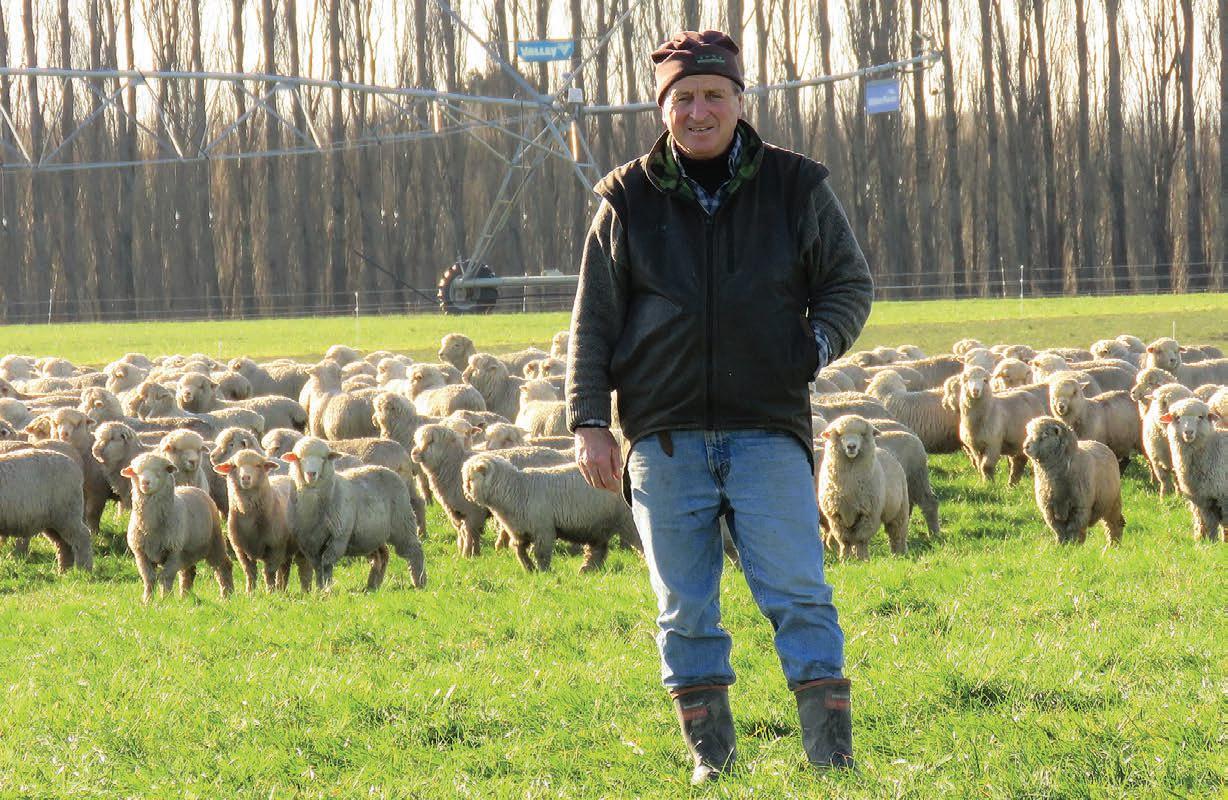
Waiting game for lamb finishing farm
Long-time Mid Canterbury farmer Simon Bonifant has faced one of his toughest years on the lamb finishing operation he runs with his son and brother. But with the prospect of a $10 lamb schedule come spring, he is holding on with the expectation of better times ahead.
NEWS 5

Abuse, dangerous roads forcing some truckies to quit the industry.
NEWS 6
Photo: Annette Scott
Rural Women stalwart takes the cake
Retired Elstow dairy farmer Lesley Berry is considered a legend when it comes to knitting together communities and making time to help others.
DAIRY 23-28
Ashburton dairy farm transforms into large-scale apple orchard.
NEWS 9
Internship for women providing launchpad for future ag leaders.
PEOPLE 16
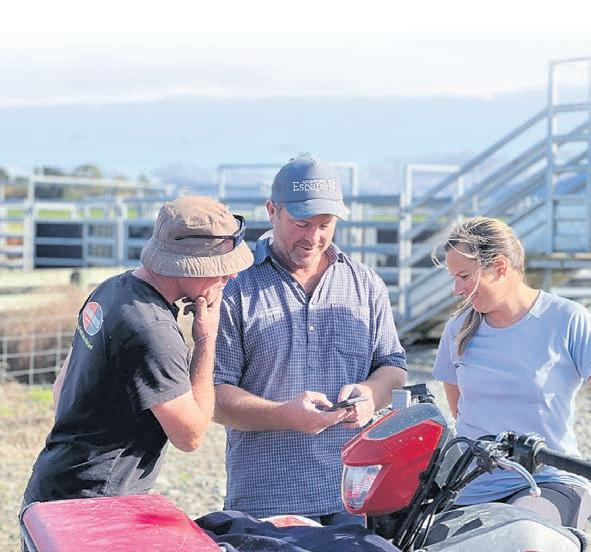
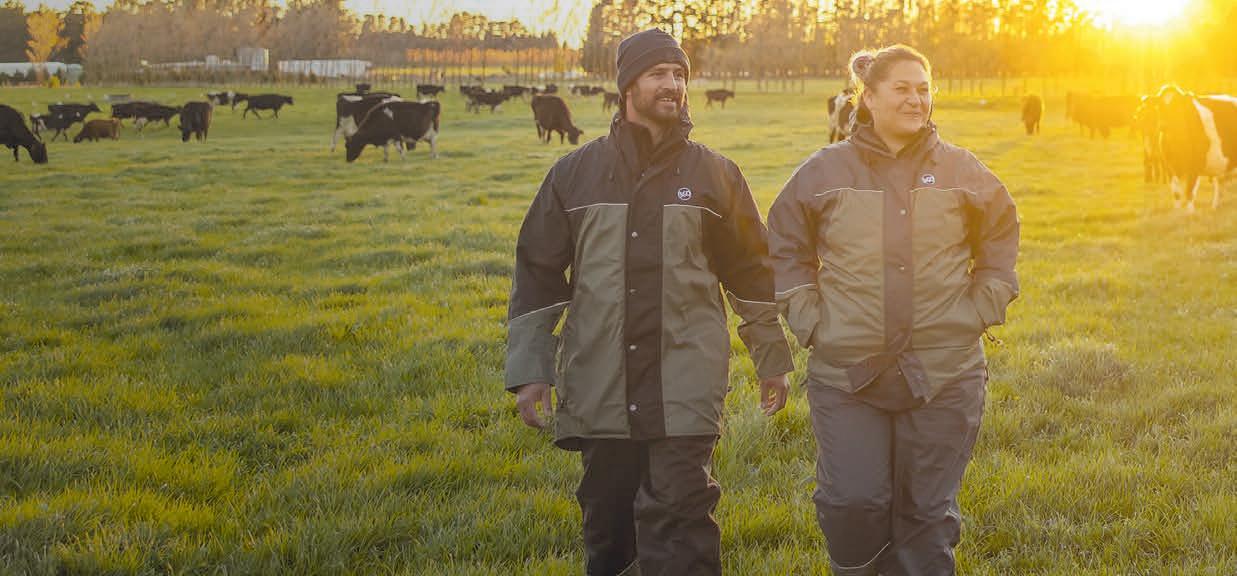
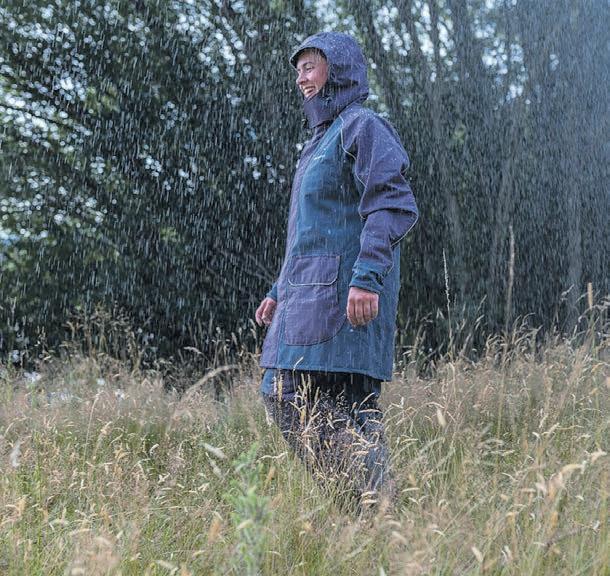


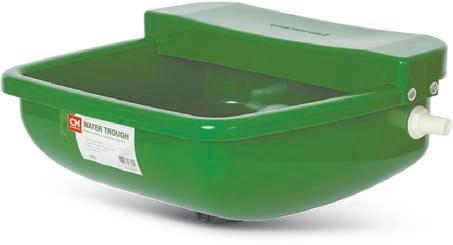




























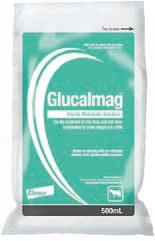


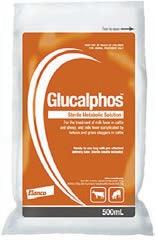



















































EDITORIAL
Bryan Gibson | 06 323 1519
Managing Editor bryan.gibson@agrihq.co.nz
Craig Page | 03 470 2469 Deputy Editor craig.page@agrihq.co.nz
Claire Robertson
Sub-Editor claire.robertson@agrihq.co.nz
Neal Wallace | 03 474 9240
Journalist neal.wallace@agrihq.co.nz
Gerald Piddock | 027 486 8346
Journalist gerald.piddock@agrihq.co.nz
Annette Scott | 021 908 400
Journalist annette.scott@agrihq.co.nz
Hugh Stringleman | 027 474 4003
Journalist hugh.stringleman@agrihq.co.nz
Richard Rennie | 027 475 4256
Journalist richard.rennie@agrihq.co.nz
Nigel Stirling | 021 136 5570
Journalist nigel.g.stirling@gmail.com
PRODUCTION
Lana Kieselbach | 027 739 4295 production@agrihq.co.nz
ADVERTISING MATERIAL
Supply to: adcopy@agrihq.co.nz
SUBSCRIPTIONS & DELIVERY
0800 85 25 80 subs@agrihq.co.nz
PRINTER
Printed by NZME
Delivered by Reach Media Ltd
SALES CONTACTS
Andy Whitson | 027 626 2269
Sales & Marketing Manager andy.whitson@agrihq.co.nz
Janine Aish | 027 300 5990
Auckland/Northland Partnership Manager janine.aish@agrihq.co.nz
Jody Anderson | 027 474 6094
Waikato/Bay of Plenty Partnership Manager jody.anderson@agrihq.co.nz
Palak Arora | 027 474 6095
Lower North Island Partnership Manager palak.arora@agrihq.co.nz
Andy Whitson | 027 626 2269
South Island Partnership Manager andy.whitson@agrihq.co.nz
Julie Hill | 027 705 7181
Marketplace Partnership Manager classifieds@agrihq.co.nz
Andrea Mansfield | 027 602 4925 National Livestock Manager livestock@agrihq.co.nz
Real Estate | 0800 85 25 80 realestate@agrihq.co.nz
Word Only Advertising | 0800 85 25 80 Marketplace wordads@agrihq.co.nz
PUBLISHERS
Dean and Cushla Williamson Phone: 027 323 9407 dean.williamson@agrihq.co.nz cushla.williamson@agrihq.co.nz
Farmers Weekly is Published by AgriHQ PO Box 529, Feilding 4740, New Zealand Phone: 0800 85 25 80 Website: www.farmersweekly.co.nz
ISSN 2463-6002 (Print) ISSN 2463-6010 (Online)
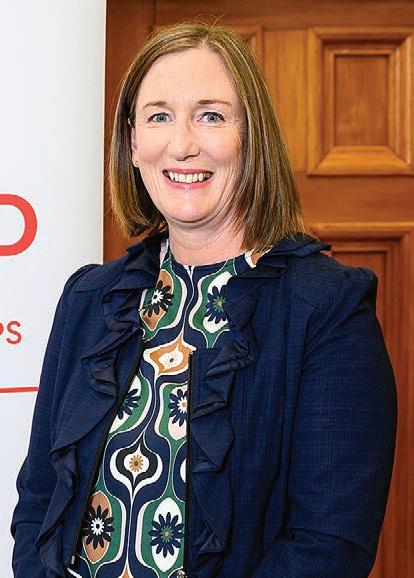
News in brief Fieldays boost Wool
More than 110,000 visitors went through the gates at Fieldays this year. New Zealand National Fieldays Society CEO Richard Lindroos said early indications suggest that exhibitors had a good event delivering momentum for the primary and fibre industries. He said the society is committed to growing Fieldays and will review this year’s event as planning begins for the 2026 event, which will run from June 10 to 13.
Superior strong wool took a hit in both the latest North and South Island wool auction sales.
PGG Wrightson said the Napier wool auction delivered mixed results, with the rising NZ dollar against the United States dollar dampening export demand and putting pressure on prices. In the South the Christchurch auction swung to more of a buyers’ market for most styles of crossbred wool, compared to recent sales.
takes a hit Solar support
An initiative to make the installation of solar energy on farms easier has been announced. The Energy Efficiency and Conservation Authority has allocated funding to support farmers cross the regulatory hurdles to install solar and battery storage systems either on buildings or as solar farms. Energy Minister Simon Watts said ASB and Farmlands have both launched programmes to encourage farmers to install solar systems, but inconsistent consenting regulations between local authorities have proven an impediment.
Banding together
Three national road transport associations have banded together to strengthen the sector’s role in the livestock value chain. National Road Carriers, NZ Trucking and Transporting New Zealand have established the National Livestock Transport and Safety Council, a new body for the livestock transport sector.



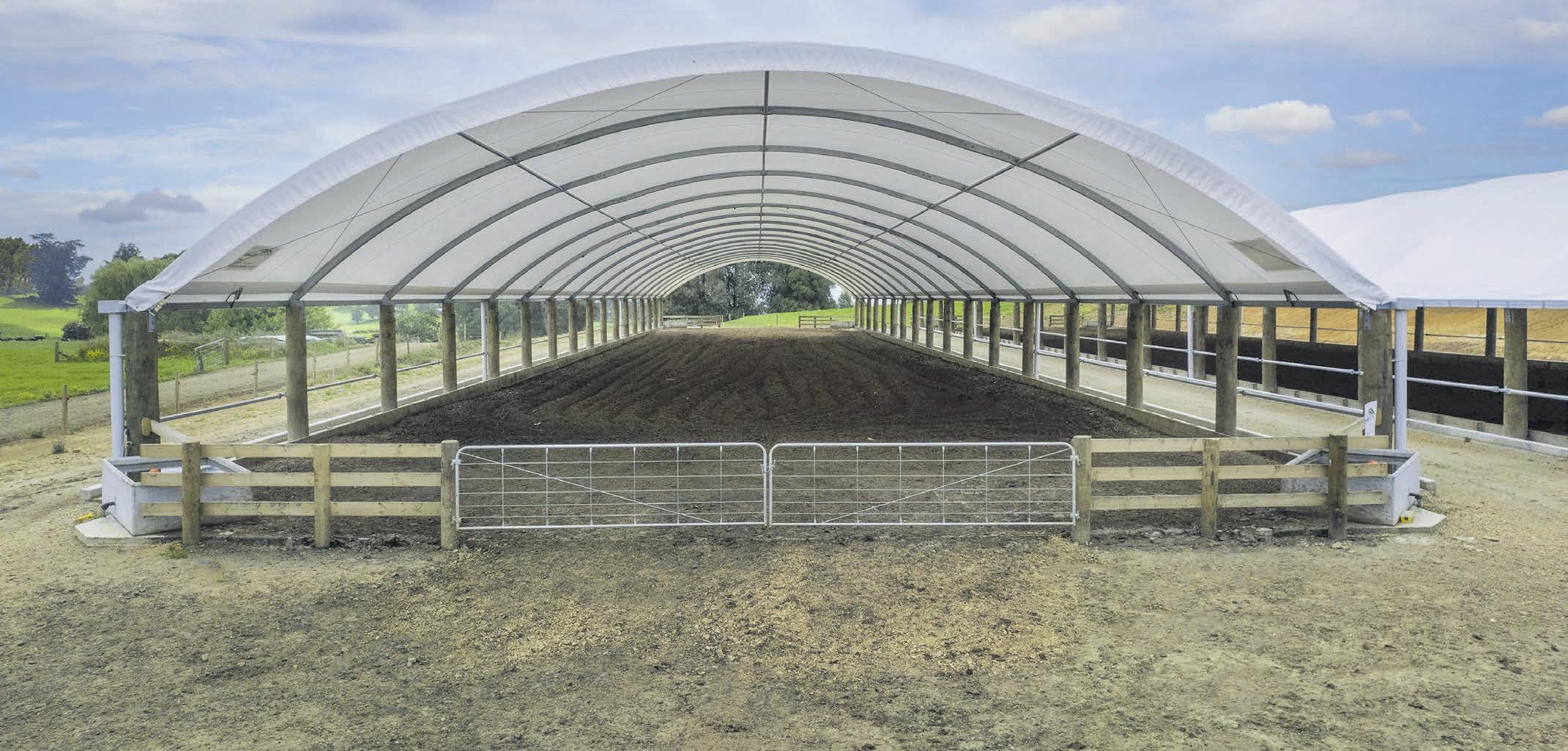

Lamb market lifts on $10.20 spring promise

Neal Wallace MARKETS Beef and lamb
AFFCO’s $10.20/kg winter lamb contract could reflect a new level in global markets for the immediate future at least, say industry leaders.
AFFCO is offering contracts at a minimum guaranteed price of $9.70/kg, peaking at $10.20/kg on September 21, prices AgriHQ senior analyst Mel Croad said are mostly grounded in market reality.
Croad said such is the strength of current markets, AgriHQ’s latest Livestock Outlook report is forecasting September and October North Island prices to average above $10/kg.
“But that is on the proviso that this export demand can at least be maintained and procurement pressure doesn’t take its place,” she said.
“From that point prices will seasonally ease as the new season gets underway.”
Croad warns the key to
managing farmer expectations is to not pressure export markets unnecessarily.
AFFCO chief executive Nigel Stevens said markets in the European Union, United Kingdom and United States are all strong, but the winter contracts are designed to secure supply and processing volumes for planning plant capacity and staffing requirements.
Stevens said if the spot market exceeds the contracted price, suppliers will receive the higher price, meaning all the risk rests with AFFCO.
“In a broader sense, given a continued decline in lamb numbers, we want to offer farmers certainty for their planning purposes, and the highest price possible to encourage ongoing lamb production and supply.”
New Zealand’s lamb shortage has created procurement tension, but Croad said cool stores are empty and tight supplies in the traditional UK and EU markets are driving demand and increasing prices.
“We are seeing some of the highest prices in our export markets for lamb ever for this time of the season,” she said.
Stats NZ is about to release May export values for lamb, which Croad believes could be at record levels, potentially pushing above $13.50/kg.
That is on the proviso that this export demand can at least be maintained and procurement pressure doesn’t take its place.
Mel Croad AgriHQ
In May last year they were $10.40/kg, well below the five-year average for that month of $11/kg.
Nationally the number of lambs processed for the season up to May 17 was 8.7% behind last year, 12.917 million compared with 14.146 million.
Croad said the South Island kill was 14% behind last year, 7.93
Waiting game for lamb finishing farm

Annette Scott MARKETS Beef and lamb
IT HAS been the toughest year farming in 40 years for Mid Canterbury farmer Simon Bonifant, who is holding out for better times with the expectation of a $10 lamb schedule come spring.
Bonifant, his son Harry and brother Roger farm a 550 hectare mixed cropping and lambing finishing operation.
The trio are re-enthused about farming sheep given the buoyancy in the sector.
“Last year the outlook wasn’t good. We chose to stay in but then nobody wanted them [lambs]. Now this year the question is being
asked why farmers are not letting them go.
“Well, it’s been a tough year since January, the toughest I’ve ever experienced in my time farming since the ’80s. Sheep didn’t go well last season, harvest was drawn out in a battle with the weather, so we were late getting winter crops in the ground.
“The reality now, given the big improvement coming off a low base with the lamb schedule, is to hang on as long as we can to maximise absolute potential from the lambs this year.”
This season the farm is carrying 9000 finishing lambs across different stages.
“Lambs are part of the whole farm system. We start buying in from March, carry them over
winter, shear in August, use them in spring to manage the ryegrass and clover crops until closing, getting them off through October.”
It’s been an expensive market to buy in this season, but Bonifant has done the maths; buying in at around $120 to $140 a lamb, finishing to an average 22-27 kilograms market weight.
“The schedule is around $9.30 now, so it’s on track to be $10 and that’s what we’re aiming for.
“The breeders have been rewarded this year and we certainly don’t begrudge them, they need that, and maybe this year the finishers will also be rewarded, we need it too.”
Bonifant has moved on from loyalty to any one company.
“Every year is different and we
Genomics has sped up genetic progress worldwide. With gNZI© and smart selection, Samen NZ delivers top sires to maximise your herd’s potential.
Don’t miss out, grab a Samen

million compared to 6.82 million.
This reflects the impact of a cold, wet spring in Southland and Otago and high store prices in MarchApril, which have encouraged winter finishers to retain them longer to reach higher weights.
Croad said heavier carcases have offset the lower kill, with the export volume processed in March, April and May higher than the five-year average for that period.
“Export markets could easily take more if we had it.”
Murray Behrent, Alliance Group’s manager of livestock and shareholder services, said the South Island lamb kill is more than 13% behind last year, which represents a shortfall of about 1.1 million lambs.
He is anticipating livestock flows to ramp from late July-early August through to October.
“We know that a large number of lambs from Southland have been sold as store lambs and moved to the Canterbury region.”
He expects global markets to remain firm for the remainder of the season.
Jarrod Stewart, the chief supply officer for Silver Fern Farms, said kill volumes have dropped off earlier than normal, which has created procurement pressure.
“Our markets are operating at near-record levels. However, some customers report uncertainty around potential further positivity, or whether a reset is on the horizon.”
Stewart said current pricing could have implications on processors’ margins and on servicing customers with consistent volumes at a price consumers can afford.
“In a competitive global environment, shelf space is hard won, and relatively easy to lose.”
Stevens said traditional markets are performing strongly, but the Middle East and China are flat after recent price increases.
Soft economic conditions in China and strong domestic lamb production are factors, as is increased availability, with 10 additional Australian processing plants recently licensed to export meat to that market.
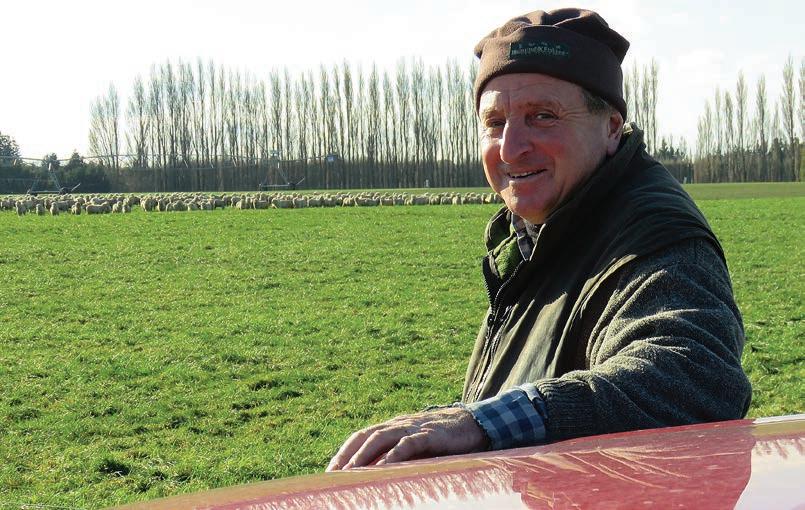
have to make decisions for our own business. It just got too hard because all the companies wanted was gold-plated lambs.


“We play the markets now. Mostly lambs can go in a paddock lot sold, processed and paid for. It’s working well for us.”
FATTENING PROFITS: Simon Bonifant says the aim is to hang onto lambs as long as he can to maximise potential from the rising lamb schedule this year.
Photo: Annette Scott
Livestock truckies face a raft of irksome issues

SHONA Robertson says her truckies face so many challenges that some have quit the industry.
Robertson and husband Bruce are owner operators of Road Transport Logistics from Tapanui, and she is chair of the National Livestock Transport and Safety Council.
The 2025 National Road Freight Survey showed rural and livestock transporters, and drivers across other industries, often cop abuse from the public over issues they don’t have control over.
Congestion is a daily frustration, but dangerous driving is the worst, Robertson said.
“Cameras in our trucks show the public passing on double yellows or blind corners, not understanding the weight and stopping
Continued from page 1
so far in favour of carbon farming that even dairy cannot financially compete.
Citing Ministry for Primary Industries carbon sequestration tables, he calculated that 16 years after planting, a 410ha carbon plantation of pinus radiata earning $60/tonne of carbon dioxide equivalent will generate $24,600/ ha.
“Dairy can’t compete with that. It’s a massive return on investment.”
Wilkshire said the environmental damage caused by forest slash following Cyclone Gabrielle has driven change to plantation compliance and management and created uncertainty for forestry companies.
Bousfield said pastoral land will still be converted to forestry as
distance of trucks,” she said.
Drivers quit the industry because of the carnage on the roads, she said.
There’s also increasing disruption from animal rights groups protesting animal slaughter.
“Our guys and girls just want to do their job and earn a living.”
Head of policy and advocacy at Transporting New Zealand Billy Clemens told Farmers Weekly that voluntary terms of trade are needed between rural livestock transporters, processors and farmers.
Three national road transport associations recently united to form the National Livestock Transport and Safety Council, a new livestock transport sector body that aims to strengthen the sector’s role in the livestock value chain.
Transporting New Zealand is scheduling de-escalation training at an upcoming conference after
government changes are bedded in.
He anticipates increased demand for LUC Class 7 and 8
rural operators said drivers are put in tough situations.
Livestock transporters have a lot to worry about, having pressure from the Ministry for Primary Industries, processors and farmers, he said.
Jim Crouchley, membership adviser for the rural/livestock sector at Transporting New Zealand, said the transport industry is highly regulated, and depends on farms, processors and saleyards for business, but these entities come with a raft of issues.
There’s no means to deal with issues from a legal and regulatory perspective, and it often falls back on drivers and owners of transport businesses
Crouchley said drivers who, for example, deliver a sick or injured animal, often see that animal for only a few seconds before having to make a call on whether it is fit to load, but they can be fined for transporting it.
land, where planting is allowed to continue, but “more genuine farmer competition” for Classes 1-6 land, which will be unavailable



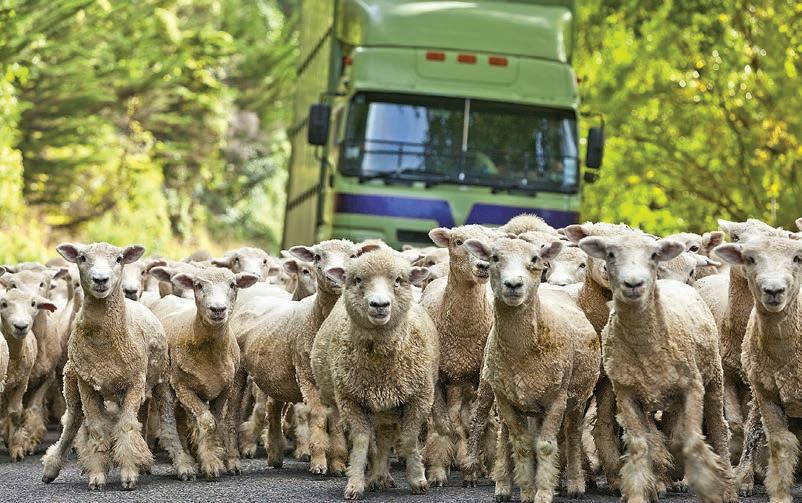
Likewise, some processors seemingly reach a cap on their consent for effluent storage and do not provide facilities for drivers to empty effluent tanks.
Drivers are then in trouble for spilling effluent on roads.
“We don’t have robust chainof-responsibility legislation,” Crouchley said.
The dairy industry culls cows once a year, but farmers don’t adequately prepare cows for transport.
for whole-farm planting.
ASB rural manager Aidan Gent said recent property transactions were the busiest in at least a decade.
CHANGE: Conrad Wilkshire says the environmental damage caused by forest slash following Cyclone Gabrielle has driven change to plantation compliance and management and created uncertainty for forestry companies.
Rabobank’s manager of country banking, Bruce Weir, said activity has been picking since Christmas after a quiet couple of years.
He said prices for quality, productive properties have lifted between 5% and 10% in Taranaki, Mid Canterbury and Waikato.
“Properties with a strong production history and low input are particularly sought after.”
Gent said demand has taken off this year.
“The market was sticky pre-Christmas but since then confidence has lifted on the back of improved prices and farm working expenses and interest rates which are lower.”
A price deferential has emerged
“They should feed them dry feed, boost them with magnesium, make sure they travel well.”
Often cows go straight from the milking shed to a truck, arriving at a plant sick. The transport company and the drivers are then in trouble.
Regulation should govern this, he said.
Clemens said stock effluent is an easy fix, with government and local councils needing to create better effluent facilities on roads.
for properties with high quality infrastructure, resource consent compliance and location over those with poorer quality.
“For all sectors, the maths of buying the neighbours’ is working out better than it has for a long time.”
Wilkshire said Property Brokers has sold 39% more properties in the past 12 months than it did in the comparable period a year earlier, with most of that increase occurring in recent months.
He expects it to be a busy year for land sales.
Bayleys Waikato manager Mark Dawe said there is a growing pool of older dairy farm owners seeking to retire.
“Many of them will be looking at the dairy sector optimism and thinking this next year or two is their best opportunity to move,” he said.



LEGAL: Jim Crouchley, membership adviser for the rural/livestock sector at Transporting New Zealand, says the transport industry depends on farming, processing and saleyards for business, but these entities came with a raft of issues.
Gerhard Uys NEWS Transport
Native forests are mighty CO2 sponges

Richard Rennie NEWS Environment
NEW research suggests New Zealand’s native forests are soaking up far more carbon dioxide than previously believed – a finding that is likely to affect climate policy, carbon accounting and land-use decisions.
NIWA atmospheric scientist Dr Beata Bukosa and her team analysed a decade’s worth of atmospheric data from 2011 to 2020 using advanced modelling and NIWA’s supercomputer.
The findings revealed New Zealand’s land ecosystems absorb around 171 million tonnes of CO2 annually, well above earlier estimates of 24-118 million tonnes.
“This research shows our mature

native forests, particularly in the South Island, are far from carbon neutral,” Bukosa said.
“They’re playing a bigger role as carbon sinks than we thought.”
The team, including scientists
Middle East looks to stock up on butter

Hugh Stringleman MARKETS Dairy
GLOBAL Dairy Trade prices
eased a further 1% overall in the second auction of June and the second for the 2026 New Zealand dairy season.
Whole Milk Powder prices were down 2.1%, skim milk powder and anhydrous milk fat both down 1.3%, mozzarella down 1.9% and lactose down 3.6%.
The two commodities to rise in price were butter, up 1.4%, and cheddar, up 5.1%.
WMP has now eased 6.6% since its recent high point in early May but remains above US$4000/tonne to underpin the farmgate $10/kg milksolids forecasts for the new season.
“The demand outlook seemed to be weakening over the past few weeks as buyers wait for new season product,”
NZX dairy analyst Lewis Hoggard said.
“However, we believe there was a degree of stockpiling pressure due to elevated geopolitical risk in the Middle East, which helped ease the fall in commodity prices.”
Hoggard said the heightened tensions in the Middle East had sharpened the appetite for butter, with buyers from that region taking one-third of the latest GDT offering compared with nil purchasing in early June.
GDT butter prices for the different contract periods remain at or near their record highs of $8000/tonne.
from GNS Science, Manaaki Whenua and international collaborators, used a method known as inverse modelling. It combines atmospheric CO2 readings with air transport models
to pinpoint carbon sources and sinks. These results were compared with New Zealand’s official greenhouse gas inventory and other “bottom-up” estimates, based on land use and ecosystem behaviour.
Significant differences were observed in the South Island, especially in mature native forest areas and some grazed lands.
Seasonal patterns also showed less CO2 released during autumn and winter than previously assumed.
The findings follow a 2017 pilot study in Fiordland that hinted at greater carbon uptake by native forests, but at the time it was unclear if this was temporary or localised.
NIWA principal scientist Dr Sara Mikaloff-Fletcher said this work opens new possibilities for land management as a climate solution.
This week’s poll question: Have your say at farmersweekly.co.nz/poll Do you support the introduction of biodiversity credits that recognise on-farm environmental improvements?
“Improved understanding of our native forests could help reduce reliance on offshore offsets, and provide biodiversity benefits too.”
While not yet part of official carbon reporting, the study could eventually influence how New Zealand meets its Paris Agreement commitments and manages its natural carbon sinks.
Sheep sector running into ‘market reality’

Annette Scott MARKETS Sheep and beef
THE New Zealand sheep and beef industry has provided an excellent financial platform for NZ and its people for a “long, long time”, but the time for change is here, specialist agribusiness accountant Pita Alexander says.
Addressing the potential collapse of the sheep industry in his Pita’s Perspective newsletter, Alexander recalled some 54 meatworks of various sizes closing over the past 55 years as sheep numbers dropped 50 million, to stand at around 23 million presently.
“I have suggested at several recent meetings that unless the sale value of lamb is near $200 per head at the farm gate, and strong wool increases to $6 a kilogram, then sheep numbers will keep dropping.”
This is similar to where the NZ sheep industry was in the 1980s. Presently there are about 16.8


million lambs to spread across the total lamb processor sector, compared with 39 million in 1984.
“One cannot expect the NZ banking system to keep funding any industry that is not facing market reality, which deep down is what is happening in this case.
“It is hard to see government wanting to find capital to inject into the exercise.
“Any potential stakeholder would want to see an annual return of 15% every year.
“A 5% return would not even be vaguely sufficient. The problem needs heavy money.”
Alexander suggested the present farmer controlled “freezing works structure” is past its use by date.
“The key issue is that there may be 15,000 sheep and beef farmers in NZ but each of them has such a small stake in their freezing works that if they lost it all it would not be the end of the world.
“More importantly, if they get a better price for any stock they have to sell, they will take it.
“Loyalty on these issues is spelt with a very small l.”
In financial terms NZ sheep and beef farming over the past 10 years has not, in any real sense of the word, been an income game in the main; it has been a “sound balance sheet game”.
Reducing the industry’s existing debt is not a solution unless at the same time there is a very strong plan to improve profitability.
“At the moment there is nothing on the table to answer this issue.”
It’s inevitable more meat processing works will have to close, just who and where is the question.
“Don’t lose sight of the answer here, that is yes, more works will close.
“Industry ‘collapse’ is the wrong word; it is a further restructuring with increasing focus on why the private ownership structure seems to be more appropriate than the co-op structure when the livestock numbers and throughput is much lower.”
Are you involved with a project that’s making a positive impact in your local rural community? Whether your local sports club needs a lick of paint, or your community hall needs a makeover, we’d love to hear from you!
Your project could receive a day of labour and $5,000 cash from the teams at Rabobank and The Country radio show to help bring your community initiative to life. We’re committed to helping rural communities thrive, and your project could be the next to benefit.
Entries can be submitted at rabobank.co.nz/good-deeds Entries close 30 June 2025 T&C’s apply.

2024 Rabobank Good Deeds Winner Te Mata Tennis Club
OLD SOAKS: NZ’s native forests have shown themselves to be bigger carbon sponges than first estimated, based on latest NIWA research.


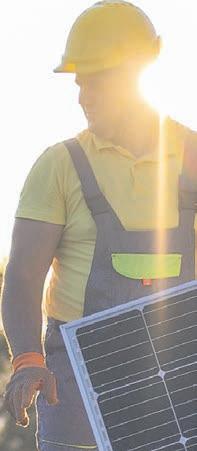


Dairy farm moving into apples at scale

Annette Scott NEWS Horticulture
ACOASTAL dairy farm in the Ashburton district is transitioning into an orchard, setting a new benchmark for large scale horticulture in New Zealand.
It will also mark the first commercial scale operation of the new apple variety Joli in Canterbury.
The Torea orchard development is fully owned by the NZ Super Fund (NZSF) and managed by rural investment management company FarmRight, which has managed NZSF’s horticulture and dairy assets since 2010.
FarmRight owns the orchard and will manage all growing and harvesting activities.
FarmRight’s general manager or the NZSF rural portfolio, Ed Tapp, said the company has considerable experience in managing apple orchards and the teams involved in the activities on the properties.
The 460 hectare seaside farm, formerly running up to 1200 dairy cows, currently has 250ha undergoing staged conversion to a large-scale apple orchard while the remaining land will continue as a dairy operation.
The initial phase involves
planting 125ha of Rockit apples and 25ha of Joli.
Launched in 2023, Joli is T&G’s newest global premium apple. T&G partnered with FarmRight to license their growing in Canterbury.
The first 150ha of trees will start going in the ground at the end of June, with planting of the remaining 100ha of Joli scheduled for early 2026.
Canterbury came up strong for these apple varieties, but you are not going to see apples all over Canterbury.
Gavin Tayles FarmRight
By October 2026, 900,000 trees, in a mix of Joli and Rockit, will be in the ground set to produce 116 million apples, 72,500 bins of fruit a year.
Initially the apples will go to Nelson for grading and packing but future plans include the development of a packhouse at the Ashburton site.
Accommodation facilities will be built near the site for picking and pruning workers brought into the region.
Orchard manager Matt Bentley
said about 60 staff are currently working on the structural work with further staff recruitment underway.
“We need another 70-85, a total 150 once we start planting in a couple of weeks and over the picking period up to 450 people will be employed; during thinning and pruning we’ll need about 150.”
Tapp said FarmRight will be looking to create synergies with other local seasonal workforces to help extend periods of work for people.
FarmRight chief operating office Gavin Tayles said extensive research identified the latitude of Mid Canterbury as a suitable location for growing apples using modern, trellised growing systems that will incorporate canopies for frost and hail protection.
“With its climatic conditions, temperature, reliable irrigation, soil types and land suitable for development at scale, Canterbury came up strong for these apple varieties.
“But you are not going to see apples all over Canterbury.”
An added benefit to the development is the reduced environmental impact with modelled reductions in annual carbon emission of 81%, nitrogen loss reductions of 82% and irrigation water use reductions of 40%.

T&G chief operating officer apples Shane Kingston said the agreement to expand the growing of Joli into Canterbury reflects both companies’ shared growth strategies.
“At T&G we have built an exceptional global apples business, underpinned by the world’s best varieties and an end-to-end worldclass system, focused on meeting growing consumer demand for our premium global apple brands.”
For consumers, Joli is a vibrant
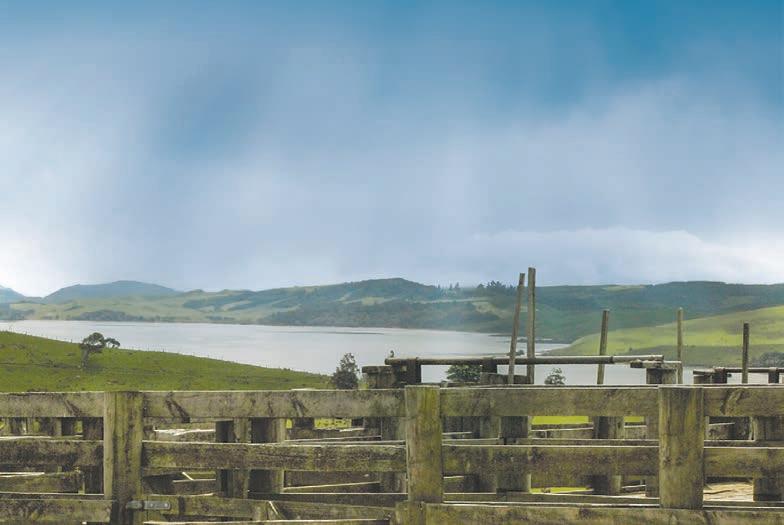
large red apple, bursting with juiciness and sweetness.
“This is a flavour profile that consumers across Asia are actively seeking out, and we have customers and consumers eagerly awaiting the first commercial Joli fruit in 2027.”
Both the Joli and Rockit apples at Torea Orchard are licensed and destined for the export market, Rockit predominately to Asia and US markets while Joli’s first key market will be Asia.



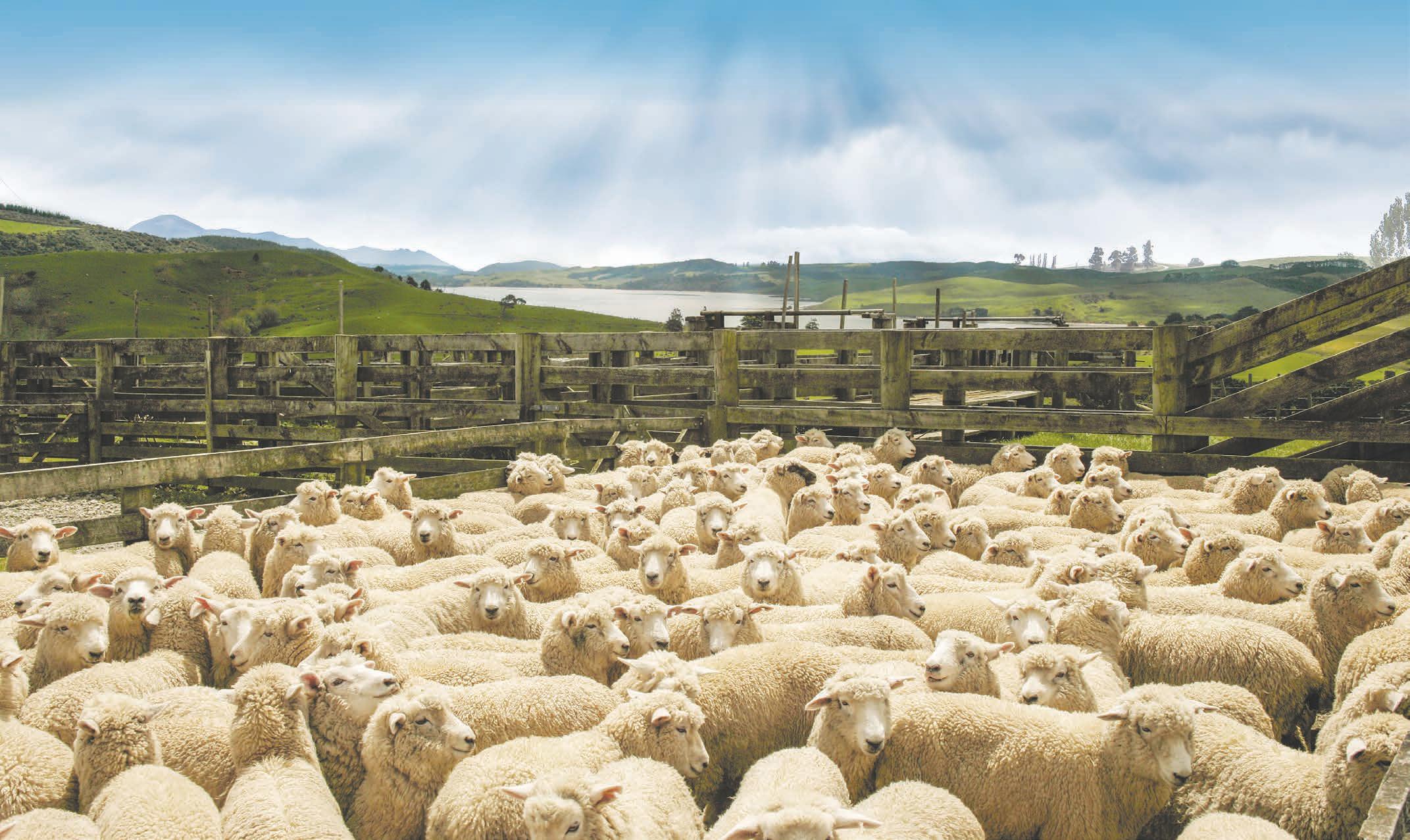

WIRING: Sarlo Kalren and Torea Orchard manager Matt Bentley work on the infrastructure wiring.
Photo: Annette Scott
Record bull prices spread through south

Hugh Stringleman MARKETS Livestock
SOUTHERN breeders have continued the very strong average prices and good clearances for two-yearold beef bulls with a selling season of personal highlights.
Matariki Herefords, Clarence Valley, made a breed record price of $80,000 for Matariki Qualifier Q361 and an extraordinary average price of $14,921 for the full clearance of 63 bulls bred by the Murray family.
The record price was paid by the Humphreys of Wilencote Polled Herefords and the Reeves family of Mokairau Herefords near Gisborne.
Matariki also made $40,000 for Lot 52, Quick Shot Q124, paid by Maungahina Herefords, Masterton. Clarence neighbours Woodbank Angus sold 65 from 70, averaged $11,532 and had two high prices of $30,000, paid by Grampians Angus and Oranga Angus.
Taimate Angus, Grassmere, sold all 96 bulls offered for an average pf $13,541 and the top price of $62,000 was paid by Riverlee Angus, Kimbolton, for Taimate U60.
Umbrella Range Angus, on Argyle Station at Waikaia, Southland, made $50,000 for Lot 13, bought by the McFadzean Cattle Company, in Wairarapa.
Johnie McFadzean said he went south to find an easy-calving sire and paid $33,000 for Lot 2.
When Lot 13 also presented with a stacked medium frame and good data, he had to compete strongly with other buyers up to the $50,000 hammer-fall.
In North Canterbury, Hemingford Charolais had a full clearance of 64 bulls and a top of $50,000 paid for Lot 1 by Te Pukerakau Herefords and Charolais, Eketahuna.
The Hemingford average was $12,125 and stud transfers went to Longhill at $23,000, Kia Toa at $20,000, Tawa Ridge at $19,000 and Windy Ridge at $15,000.
Meadowslea Angus, Fairlie, sold 68 out of 76, averaging $8742. The top price of $30,000 for Lot 1 was paid by Delmont Angus, Clinton, and Stern Angus, Pleasant Point, paid $18,500 for Lot 16.

Herefords, Awakino, for $11,000.
CROWDED:
Competition was keen for 70 Angus bulls at Grampians Angus stud, North Canterbury.

Grampians Angus, Culverden, sold 68 of 70 and had a top price of $28,000 paid for Lot 11. The average price was $12,911.
Sudeley Angus, Irwell, sold 63 from 66 and averaged $11,067 with top prices of $21,000 paid by Kenhardt Angus, Nuhaka, and $20,000 by Pine Park Angus, Marton.
Beechwood Herefords and Richon Herefords, Amberley, sold all 28 bulls, averaging $10,000 with a top price of $30,000 paid by Lochaburn Herefords, Luggate.
Other stud transfers were to Polled Monymusk Herefords, Te Anau, for $28,000 and to Bexley
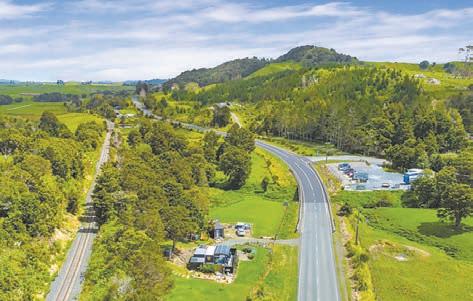
Kakahu Angus, Geraldine, sold 54 from 59 with an average of $11,180 and two top prices of $30,000 paid by Tinui Station and $17,000 paid by Mt Peel Station.
Red Oak Angus, Weka Pass, sold 31 from 33, averaged $8800 and had a top of $15,000.
Kaiwara Angus, Culverden, sold 26 of 29, averaged $8200 and had a top price of $12,500.
Koanui Polled Herefords, Havelock North, sold all 50 bulls, averaging $11,730, with a top of $18,000 and a transfer at $17,500 to Sarona Herefords.
Elgin Angus, Elsthorpe, sold 28 out of 29 and averaged $13,566 with a top price of $23,000 paid by a commercial farmer.


RESOUNDING:
Hemingford Charolais, Culverden, finished the winter sales of two-year-old bulls for that breed with $50,000 top and $12,125 average.
Brackenfield Angus, Awatere Valley, sold 19 from 20 bulls, averaging $9315 with a top of $15,000, paid by Alice and Ben Norton.
Wilencote Hereford Stud, Gisborne sold 28 from 28, averaged $12,821 and had a highest price of $16,000.
Leefield Station, Waihopai Valley, sold 16 from 17 and averaged $8700, with a top of $12,000 paid for Lot 1, Leefield 2339.
Blacknight Angus, Blenheim, had a full clearance of 16 and averaged $9218, with a top price of $15,000 paid twice by commercial farmers. Snake Gully Limousins, Waiotira, sold 18 from 19, averaged $7150 and had a top price of $11,700 paid by Waikura Station.

Chinese utes rev up interest at Fieldays

Richard Rennie TECHNOLOGY Transport
THE ute market, long dominated by established brands Toyota and Ford, is facing a shake-up as Chinese manufacturers muscle in on the market.
Fieldays highlighted what an alphabet soup of brand names the market has become, with GWM, BYD, JAC and LDV all in the market mix.
Vehicle sales data indicates they are still in the single digits for market share, with GWM registering 300 sales in 2023, and LDV 700 for its combined vehicle types.
But predictions are GWM will more than double those numbers this year, while BYD’s Shark ute had sold 350 in just the first quarter this year.
Batch milking dairy bot crosses Tasman

Rennie TECHNOLOGY Dairy
GERMAN dairy tech company
GEA has launched a robotic milker that balances increased automation with the typical Kiwi pastoral dairying system.
Appearing for the first time at Fieldays, the DairyRobot R9500 milking system is already well established in Australia, with almost 70 farms running GEA units.
Craig Lowry, head of GEA’s farm tech division in NZ, said the system takes a different approach to the type of roboticised milking most NZ farmers would be familiar with.
That system will typically have cows moving to their own milking clock, voluntarily entering and exiting the robotic milking shed at leisure, moving via a laned system back to paddocks.
“But if you look at how NZ has farmed for many years, we looked at how do we utilise that system while introducing robotic milking into it, with minimal disruption or changes to the infrastructure?”
Voluntary robotic systems can result in limitations to cow grazing patterns, often dictated by the cowshed’s location.
The GEA machine works on a “batch milking” method, with
From a small base, the sector has stirred up competition and interest in the popular sector in a country where Ford Ranger accounted for 28% of the ute market in 2024, followed by Toyota HiLux at 18%.
We are finding we are getting interest from lots of young dairy farmers in these.
Claire Dalton LDV
Claire Dalton, LDV’s national sales manager, told Farmers Weekly at Mystery Creek that the offer of a seven-year warranty, roadside assistance and WoF provision all helped, while the government’s 20% depreciation allowance announced in the Budget was a bonus.
“That really represents a decent sort of deposit on a new vehicle.”
She said the seven-year warranty was helping ease any misgivings new buyers may have about Chinese brands, some which were marred by quality issues in earlier models.
“We are finding we are getting interest from lots of young dairy farmers in these.”
LDV used Mystery Creek to launch its Terron 9, a 2.5 litre turbo diesel ute with 3.5 tonne towing capacity. During Fieldays, Dalton said, a fleet deal had been signed, and several of the vehicles sold to farmers.
A GWM spokesperson at Mystery Creek said the ANCAP 5-star safety rating its models have acquired is also providing prospective buyers with peace of mind.
Earlier Chinese models had reported dubious safety ratings.
“People are spoilt for choice now, and you simply cannot come to the market with bad products.”
Mystery Creek was also the
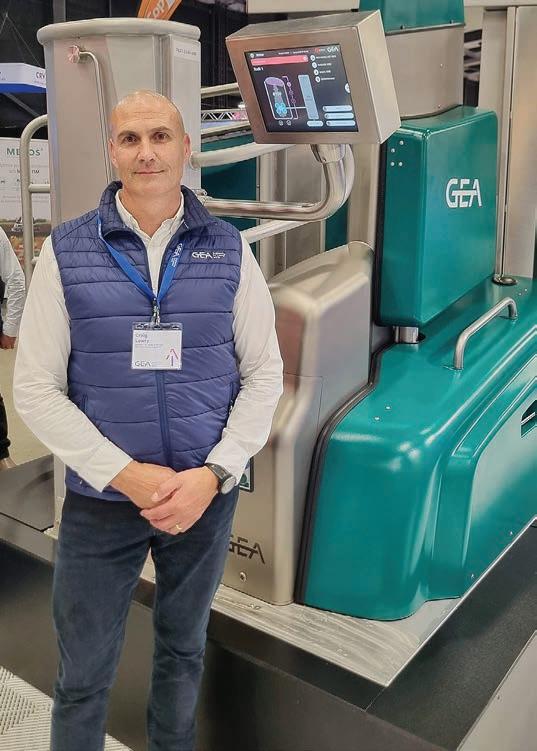
cows bought in as they have always been, and milked by a fully automated robot stall processing about 60 cows per milking.
There are options to bring in groups of cows through the day, or use multiple machines to bring the entire herd in as they have always been. A typical average 420-cow herd would require eight units.
For a farm converting to the system, this would represent an outlay of about $1.8 million.
Lowry was confident the company would have at least one installation complete within the farming year.
The main driver for farmer interest in the machine at Mystery Creek was labour constraints.
“The constraint around labour will always be a driver. Even if farmers have good labour, they are looking to future proof their farm,” Lowry said.
“And we have an aging farmer base. Farmers are asking ‘What am I going to do with the farm,

launch for the BYD Shark plugin electric hybrid ute, essentially more electric than petrol powered with two electric motors and a small 1.5 litre turbocharged petrol engine for auxiliary power and battery recharge.
Farmers spoken to about the Shark appreciated the presence of a petrol engine to deal with range anxiety, and the machine’s high
level of power (320kW) and torque (650Nm).
Plug-in electric hybrids have also been given a boost with the launch of the GWM Cannon that comes as either a 2.5 litre turbo diesel or a 2.0 litre turbo petrol hybrid.
“With an entry level pricing of $43,440, you are looking at a very sharp sub $50k ute,” said sales specialist Tim Elliott.
Confidence still at near-record highs
Staff reporter NEWS Agriculture
BATCH BOT: DairyRobot R9500 is already well established in Australia, with almost 70 farms running GEA units.
The constraint around labour will always be a driver.
Craig Lowry GEA Farm Technologies
I might be over the milking aspect, what can I do to continue farming without having to milk?’”
The machines have a preset process that kicks off with teat simulation and moves on to milking, measurement and sampling, teat spraying and finally rinsing the cups before the next cow steps up.
Victoria and Tasmania have had “significant” uptake of the robotic tech, said Lowry.
The government’s 20% depreciation figure up front as announced in the Budget is likely to be a strong motivator for farmers, Lowry predicted.
“It is the closest thing to a subsidy we have seen in NZ for some time.”
FARMER confidence in the agricultural economy remains at a near-record high, according to the latest Rabobank Rural Confidence Survey.
Farmer confidence in the broader agri-economy was unchanged at a net reading of +44% following consecutive lifts in the previous three quarters.
Alongside last quarter, this is the second-highest net reading recorded across the past decade, with only Quarter 2 in 2017 higher at +52%.
Completed in early June, the survey found 48% of farmers were now expecting the performance of the broader agri economy to improve in the year ahead, slightly down from 52% in the previous quarter, while the number expecting conditions to worsen had also fallen to 4% (from 8%).
The remaining 44% of farmers expected conditions to stay the same (36% previously).
Rabobank chief executive officer Todd Charteris said sentiment is high among producers across all of New Zealand’s major agri sectors.
“This broad-based positivity is largely being driven by strong commodity prices for our key agri exports,” he said.
Since the previous survey, Fonterra has announced a record opening forecast, and prices for beef and sheepmeat have also surged.
Horticulture products and export revenues have also lifted, and the latest Situation and Outlook for Primary Industries report, released at Fieldays, forecast horticulture export revenues to increase by
19% in the year to June 30.
“With all this positive pricing news coming in over recent months, it wasn’t a surprise to see close to two-thirds of farmers and growers in our Quarter 2 survey citing rising commodity prices as a key reason for their upbeat view on the outlook for the agri-economy.”
Improved marketing and overseas markets/economies were cited as key reasons for optimism. Among the 4% of farmers expecting conditions in the agri economy to deteriorate, “falling commodity prices” (66%) and “rising input prices” (46%) were the major factors cited.
Farmers’ expectations for their own farm business operations lifted from +37% to +40%. Dairy farmers and sheep and beef farmers’ confidence in their own businesses remained strong and was relatively unchanged from March, while horticulturalists were now much more upbeat.
“In our March survey, we actually saw horticulturalists dip into negative territory on this measure, but confidence has come roaring back this quarter and growers are now up to a net reading of +21%,” Charteris said.
“This upwards shift comes off the back of recent strong export revenues and elevated prices for a host of key horticultural products including kiwifruit, apples, pears and vegetables.”
Investment intentions are now at their highest level since 2018.
“Close to a third of farmers are now looking to increase investment, with only one in 20 looking to invest less, and this lifted the net reading on this measure to +25% from +16% previously,” Charteris said.
Richard
NEW UTE SMELL: Sharp pricing for entry-level Chinese utes is prompting more farmers to consider a new vehicle over a secondhand one, says Claire Dalton, national sales manager for LDV brand.
Ballance eyes imports as fert market shifts

Richard Rennie NEWS Fertiliser
THE over-capitalisation in phosphate plants has made Ballance’s Mount Maunganui shutdown inevitable and will bring a shift in fertiliser market dynamics, says CEO Kelvin Wickham.
Speaking to Farmers Weekly at Fieldays, Wickham said four super plants in New Zealand are simply too many, particularly when all are running at only 50% of capacity.
It costs us three times as much to move a tonne of product from the South Island to the North Island as it does to bring it in from China.
Kelvin Wickham Ballance
Ballance could double production out of its Awarua Southland plant, but the constraints are the complexities and costs within NZ’s logistics and supply chain network.
“For example, it costs us three
times as much to move a tonne of product from the South Island to the North Island as it does to bring it in from China.”
He confirmed Ballance will be bringing imported product into
NZ to support local supply but also expects NZ will start to see some different fertiliser types as companies respond to rising transport costs by importing more high analysis products – those with a higher percentage of essential plant nutrients.
“In places like Ireland and the UK you see them doing a lot of bespoke compound nitrogenbased fertilisers.
“Our view is we need to start embracing them here too, versus pushing something because we happen to be making it. We have to be more versatile and agile in our offerings for farmers.”
Wickham pointed out 85% of NZ’s fertilisers are already imported, including 60% of its nitrogen-based products.
Recent commentary on how secure NZ’s gas supply is has also been front and centre for Ballance executives, given it is the country’s second largest industrial gas user after Methanex.
“Of course, we are concerned on where gas will come from as
the long-term supply starts to come down, and we all need gas to transfer to a greener energy economy too. It is a stress point.
“We thought we had 10 years supply, but that is not so certain now. The government is trying to incentivise exploration options.”
His views on where future fert sources will be found was shared by the latest entrant to the NZ market, Australia-based Marnco.
Marnco’s NZ commercial manager, Jamie Thompson, agreed the costs of logistics and shipping will compel more high analysis fertilisers. However, he pointed to the supply risk that comes with this, with China recently tightening up on all phosphatebased products.
“And that seems to have continued beyond the usual spring period for them. There is good product available out of Europe, but this is quite a long way to bring it from.”
Wickham said sheep and beef operators are now firmly back in the fert market and he anticipates a lift in demand for nitrogen and phosphate products, while potash and sulphur are likely to remain steady.
Meantime dairy farmers are relatively cashed up, and about to kick off a new season with a $7.40/
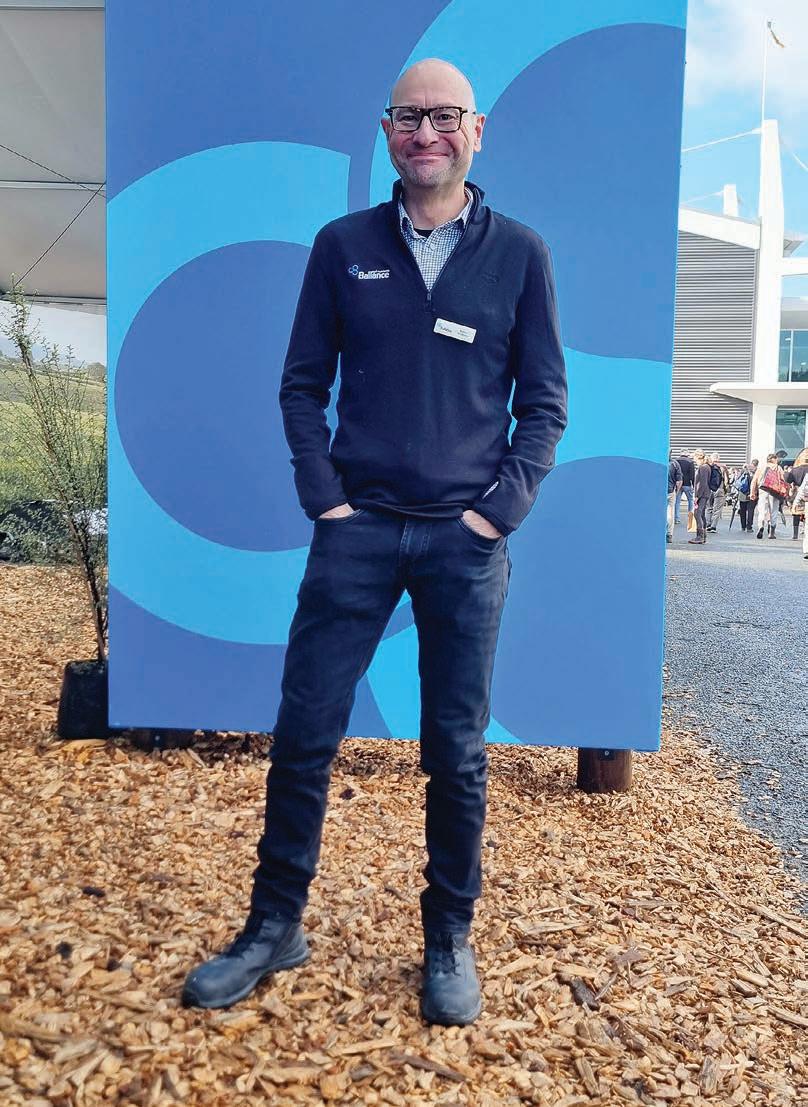
kg milk solids advance, meaning they are in a reasonable cash position right from the start of the season.
“The challenge for us will be to ensure we can estimate demand as best as possible heading into spring.”
Students drive agriculture uptake at girls’ school

TWO senior students at Napier Girls’ High School are cultivating a future for agriculture at their school as they prepare for a second crack at the 2025 New Zealand Junior Young Farmer of the Year Grand Final next month.
Still buzzing from their thirdplace finish at last year’s Grand Final, Liana Redpath and Kaela Brans entered the FMG Junior Young Farmer East Coast competition in March, a regional qualifier to secure a spot at this year’s nationals.
But their ambitions go beyond trophies. They weren’t just competing, they were shaping the future of agriculture.
The two 17-year-olds who grew up on sheep and beef farms have reinvigorated Napier Girls’ High School’s Young Farmers Club, transforming it from a quiet, oncea-year gathering into a thriving hub.
Redpath and Brans are making sure young women passionate about farming and agribusiness have opportunities to connect, compete, and learn about NZ’s agricultural export industry.
“We put our feelers out and got the ball rolling, now it’s a club with real momentum,” Redpath said.
The club’s resurgence began in Year 11 when Brans drafted a proposal to school leadership, gauging school interest in
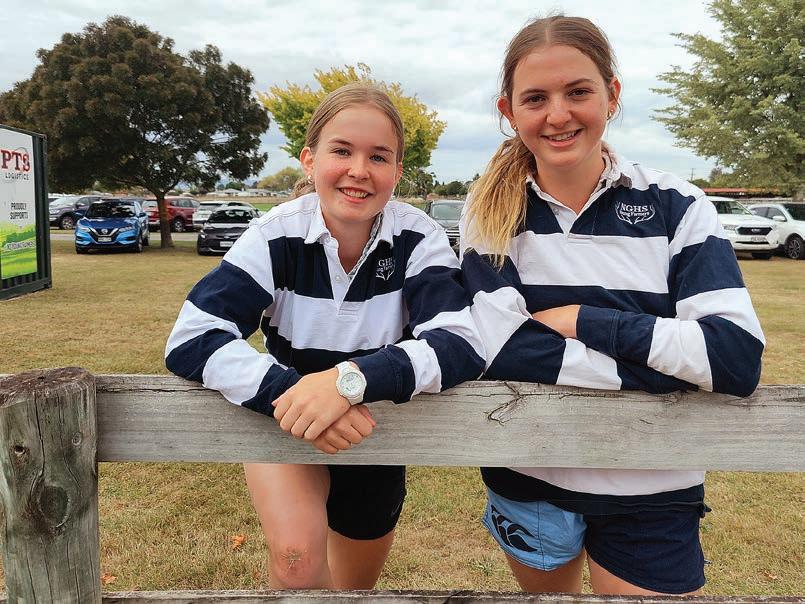

reinvigorating the club and on receiving the school’s support she called for club membership registrations.
NGHS’s Hewett House hostel is now host to 50 club members, most from rural backgrounds.
The annual regional FMG Junior Young Farmer of the Year competition, an event grown out of the historic flagship Young Farmer of the Year contest, has helped drive interest.
“Our third place at the grand finals last year really put us on the map. It encouraged more girls to give it a go,” Brans said.
At this year’s regionals in Masterton, NGHS had six teams enter the 25-team competition.
Alongside Brans and Redpath in
We put our feelers out and got the ball rolling, now it’s a club with real momentum.
Liana Redpath Napier Girl’s High School
first place, fellow club members Emma Brady and Georgie Wilson placed sixth, while Brady also won contestant of the day.
NGHS acting principal Megan Mannering said the school is “especially proud” of both students.
“Particularly for their contribution to our kura, their leadership, and especially their
outstanding success in the Junior Young Farmer of the Year competition.”
NGHS currently offers a primary industry course focused on practical, hands-on experience.
The young co-leaders and their growing club hosted quiz nights, guest speakers, organised a raffle to cover club apparel, and supported students for a Lincoln University presentation.
Meanwhile, both Redpath and Brans, with support from the school, plan to pursue a NZ scholarship for agricultural and horticultural science this year. Beyond high school, both are looking to study veterinary science at Massey University.
With the national Grand Final fast approaching, their focus is on the Grand Final where they’ll once again put their skills to the test across a range of presentations, exams and practical and theoretical challenges during two days of competition in Invercargill, July 3-5.
“You can’t help but be a little nervous, but it’s an incredible opportunity, and we’re grateful to experience it again.”
The girls are also thinking about the future having established a Young Farmers committee to ensure the school club continues when they move on.
“Our main goal is making sure it has solid foundations.”
Annette Scott PEOPLE Skills
AMBITIOUS: While winners in their field, Liana Redpath and Kaela Brans’ ambitions go beyond trophies. Photos: Supplied
PASSION: Liana Redpath and Kaela Brans are making sure young women passionate about farming and agribusiness have opportunities to connect, compete, and learn about NZ’s agricultural export industry.
OVERSEAS: Ballance CEO Kelvin Wickham says sourcing fertiliser offshore in more concentrated forms is one way to deal with high transport costs.

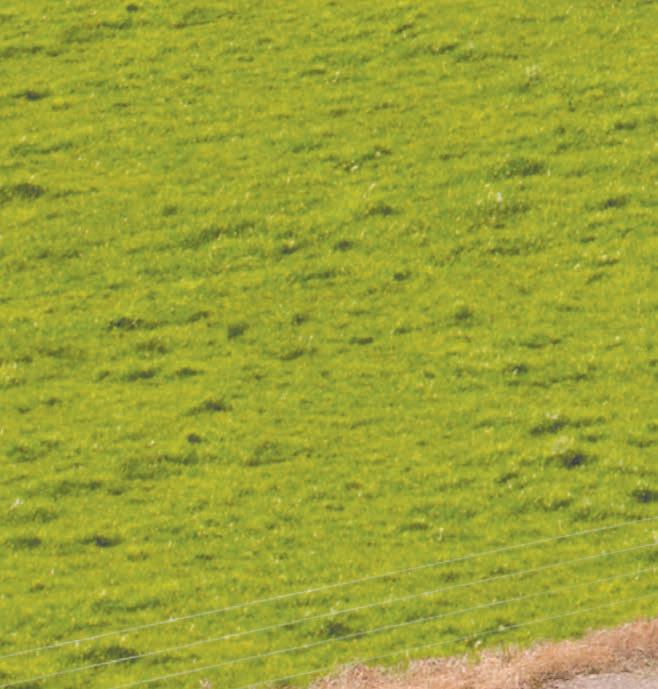
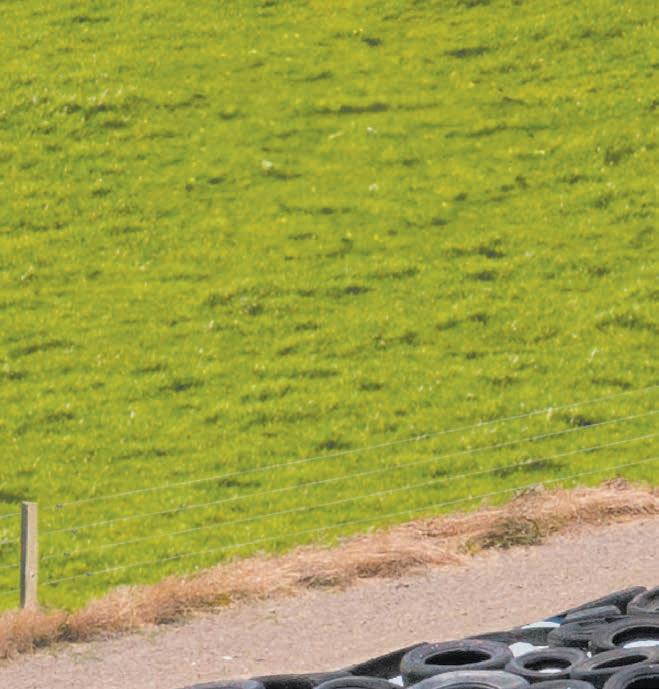


PERFECT PARTNER PASTURE’S
















Scholar finds GE rules need broader touch

Richard Rennie TECHNOLOGY Genetics
WITH a background in veterinary science, sharemilking experience, and a leadership role in MyFarm’s apples division, Nuffield scholar Rachel Baker is well equipped for a broad view on genetic technology’s impact on New Zealand’s food production.
How this country manages the technology, monitors its risks, and capitalises on its gains was the subject of her 2024 Nuffield scholarship work.
As the Gene Technology Bill passes through Parliament, Baker has raised several timely questions on how the tech will sit within NZ’s coveted “clean green” image as a trusted food producer.
Scientists have lambasted NZ’s GE regulations for the tight, expensive constraints that put this country increasingly at odds with trading partners’ more progressive approach.
However, Baker said being a slow
starter in setting GE rules may not be such a disadvantage.
She found that a global saturation of broad acre GE crops has seen planted land area plateau, with soybeans and corn dominating particularly throughout the United States, Brazil and Canada.
We must be upfront and all trade partners be clear on defining what ‘minor’ changes means.
Rachel
Baker Nuffield scholar
“There is also, however, a global shift underway from those early productivity-focused gains GE delivered in those broad acre crops, to use CRISPR technology to address the challenges of food security, sustainability and viability.”
She agrees the tech has run the risk of overpromising and underdelivering since those early gains.
“There is a need to manage

expectations. There is an emerging conservatism as we enter a new phase after this saturation, ensuring new crops will deliver beyond productivity, and be safe.”
She also found NZ risks being solely focused on safety and economic outcomes with its regulation, without allowing for environmental, social and governance implications of the tech and the potential impacts on trade and markets.
“This more holistic approach would require case-by-case assessments of the technology. My concern is we are losing many scientists and social scientists whose skills would help in this area.
“Their expertise is needed not only to bring transparency to the process but also answer questions and help build trust among the sector’s growers and farmers, the public and our trade partners.
“This includes whether we deregulate for those minor GE changes that are indistinguishable from conventional breeding changes.
“And if we do, that we have

a registration process for transparency.
“We must be upfront and all trade partners be clear on defining what ‘minor’ changes means.”
NZ’s approach is going to need to start with more sector engagement within different farming/orchard types.
Taking all growers and society along together is vital, and signals from NZ’s organic sector are that it is already being left out of final regulations and conditions.
“We need to acknowledge the concerns, not only of organic farmers over cross-contamination, but also of conventional farmers
SHIFT: Nuffield scholar Rachel Baker says there is a global shift underway from early productivityfocused gains to using GE to address the challenges of food security, sustainability and viability.
who may not want to use GE technology. We need to know what successful co-existence would look like.”
Consumer acceptance is likely to be greater when there is an understanding about what the personal and societal benefit of the tech may be.
“We are very much at the beginning of the journey and need to avoid making GE a binary argument. We need to find middle ground with general acceptance within and across sectors and the public. This is a time for leadership to ensure we have those conversations.”
Comvita warns of loss and impairments

Hugh Stringleman NEWS Apiculture
COMVITA has advised an expected net loss before tax between $20 million and $24m in the 2025 financial year, ahead of the annual results publication date in late August.
It will be the second year of net losses of this magnitude and the listed mānuka honey producer and exporter has warned of significant non-cash impairments in the forthcoming results.
Revenue in the year ended June 30
is expected to be slightly down on the year before and gross margins will be down because of aggressive proving and channel loading by competitors in the core product, mānuka honey.
“Price discounting to sell surplus higher cost inventory is expected to continue through the next two quarters,” the company said.
On the positive side, targeted cost savings of $15m-$20m annually have been running ahead of target and the head count is down 70 fulltime equivalents.
Operating expenses are expected to be lower than in FY24 but there have been significant restructuring costs
and the main benefits will come in FY26.
Net debt has fallen from $82m at December 31 to about $63m on June 30.
The directors say further action is required to reduce debt further and the company is working with its investment bankers and legal advisers.
“As part of year-end processes, the company is assessing the level of a non-cash impairment of assets and provision against inventories, which are expected to be material.”
Comvita’s share price is sitting at 55c, down 50% over the past year.



































































DOWN: Comvita’s share price is sitting at 55c, down 50% over the past year.

MARKETS: Otis Oat Milk founder Tim Ryan says new markets represent a significant portion of their production.
New oat milk markets good news for rural NZ

Gerhard Uys NEWS Arable
THE opening up of new markets by oat milk companies Boring Oat Milk and Otis Oat Milk has benefits for entire farm communities, say industry experts.
Boring Oat Milk recently announced that its Original and Barista oat milk varieties will hit shelves in 953 Woolworths supermarkets in Australia, with Otis Oat Milk founder Tim Ryan saying they are specifically eyeing specialty food services in Japan and Taiwan for their locally grown and made oat milk.
Ryan said the new markets represent “a significant portion of our business”.
“A high tide lifts all boats. The more we can drive oat beverages to a thirsty world, the better we set our growers up for success in future years.”
The general manager of business operations at the Foundation for Arable Research, Ivan Lawrie, said any signs of expansion in markets for New Zealand-grown grains and its derived products is extremely positive.
Lawrie said this expansion highlights the high quality of locally grown grains and local products that can compete on the world stage.
“It is important that the expectations for growth are clearly communicated to the growers,” he said.
Southland oat grower Graeme Gardyne said the industry will have enough supply to meet an increase in demand.
Gardyne said Harraways is currently upgrading its mill, which will allow it to process more oats in future.
Managing director at Plant Research Adrian Russell, who works with Southland and Otago oat growers on a breeding programme, said Southland is New Zealand’s main oat growing region.
He said increased demand trickles down to more than just growers, but to contractors, cartage companies, chemical companies, seed developers, storage facilities and distribution networks.
Harraways chief executive officer Henry Hawkins said Harraways is well placed to meet the future needs of any expansion Boring may undertake.
Ultraviolet seed process shines a light on NZ

Neal Wallace TECHNOLOGY Arable
ANEW Zealanddeveloped seed treatment process could be about to break into the massive corn and rice growing sectors.
Corn is an initial target for Palmerston North-based BioLumic, which uses ultraviolet light backed by data science to alter the behaviour of seeds, such as increasing yield and energy levels, without altering their DNA.
Treated ryegrass seed will soon follow.
BioLumic founder and chief science officer Jason Wargent said 40 million hectares of commercial corn is grown in the United States each year from about 400,000ha of parent or foundation seed production, making it a lucrative market.
Ultraviolet-treated parent corn seed will be planted next year.
The technology alters a seed’s genetic expression 90% faster than traditional methods to improve yield, stress resilience, weed and pest tolerance and nutritional composition.
Wargent said other opportunities being looked at include rice, soybean, and following investment from Fonterra’s Ki Tua Fund earlier this year, ryegrass.
Laboratory trials on UV-treated ryegrass reveal lipid levels can be increased, which has been proven to reduce methane emissions and improve plant energy levels, root growth and pest and disease tolerance.
Wargent said this will potentially boost pasture productivity and energy density, with laboratory trials showing a 30% improvement in dry matter yield.
“Even if we get a 5% gain in productivity in the field, it will

TRIAL CROP: BioLumic’s head of research and development, Leyla Bustamante, checks a trial crop of ryegrass. The seed has been treated with ultraviolet light to enhance desirable traits.
translate into a huge increase in milk solid production.”
Lipid levels have been increased 6% in the laboratory, which could translate into a 12% decrease in methane emissions, data Wargent said needs to be ratified in field trials.
As with all seeds undergoing the process, ryegrass seeds are diagnosed in the laboratory to determine the UV light pulses needed to alter desired traits followed by hothouse trials, which can take up to 18 months.
This is followed by field trials which, for ryegrass, should start next year, with market release potentially in 2027-28.
Wargent said once parental seed has been treated with UV light, those traits are imbedded in commercial seed.
A recently oversubscribed capital raising round, which included investment from Fonterra’s Ki Tua Fund, is assisting BioLumic’s commercial launch of a seed category known as xTraits.
The capital raising attracted interest from investors as diverse as Azolla Ventures, a climatefocused agtech investor, and iSelect Fund, a US-based food, agriculture, and healthcare innovation fund.
US-based seed supplier Gro Alliance has been licensed by BioLumic to use the UV activation system to produce xTrait seed for its pure-bred or corn inbreds, and corn hybrid varieties.
Wargent said field trials have shown light-activated hybrid corn achieved over 20% yield gains and 8% gains in activated inbred parent lines.
These hybrid varieties will be commercially released for the 2026 US planting season.
The foundation UV technology has been around for more than 20 years but Wargent said it actually dates back to when plants first started growing on Earth.
The modern-day scientific adaption of the technology was refined at Massey University when Wargent joined in 2010 and researchers determined the precise UV treatment needed to unlock seed traits.
Initially the process was not viable due to the cost of technology and the unreliability of lights and associated equipment.
“We can only do it now because technology has progressed and has got us to this point,” Wargent said.
He said all crops could be treated including fruit and vegetables.





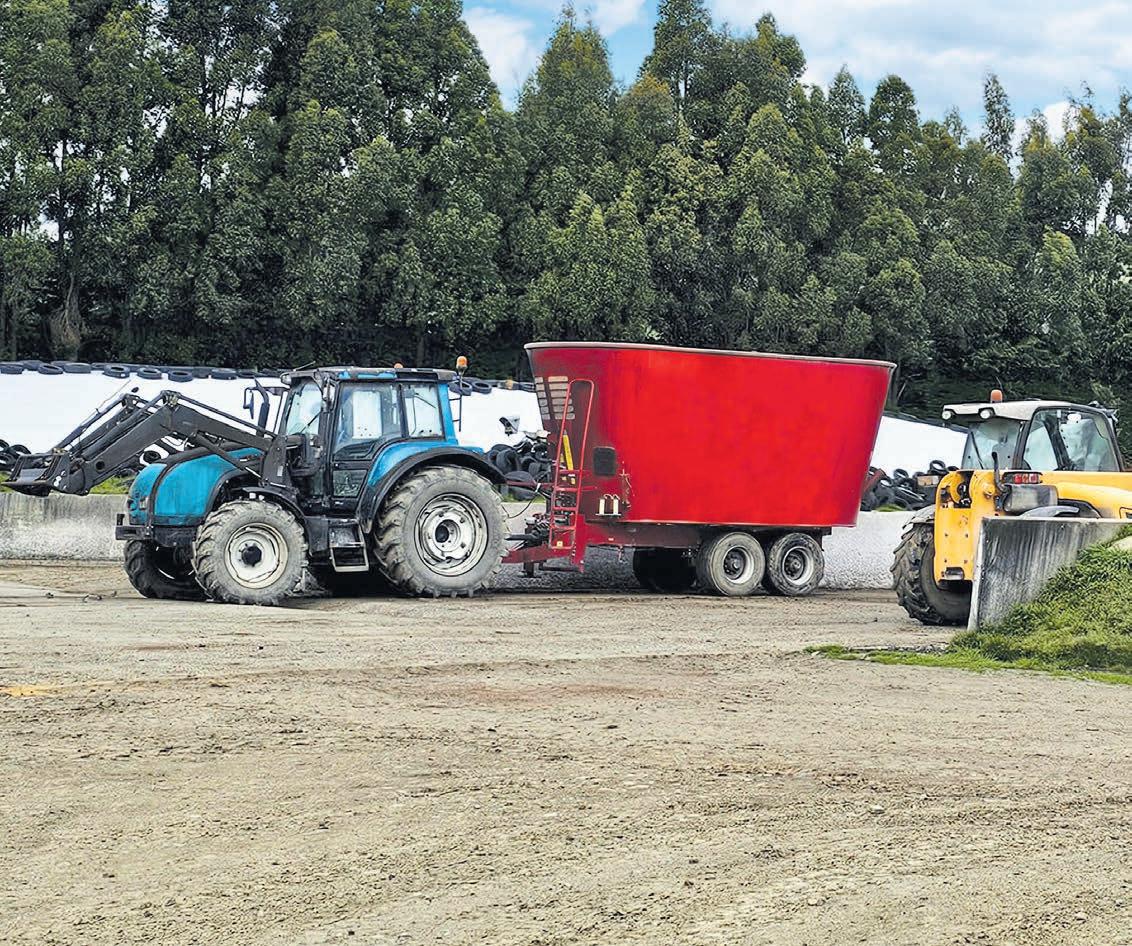



























Fairlight a springboard for women in ag

Rebecca Greaves PEOPLE Training
THE Fairlight Foundation’s unique internship programme for women is providing a launchpad for future leaders in agriculture, and has the potential to be replicated by other industries in the food and fibre sector, an independent report has found. The report, carried out by Dr Lesley Petersen and funded by the Food and Fibre Centre of Vocational Excellence, evaluated the impact, relevance and sustainability of the Fairlight Foundation internship programme.
Now in its fifth year, and run at Fairlight Station in Southland, the programme accepts three female interns annually for its year-long course. It provides a winning blend of hands-on practical experience, leadership development and robust mentorship. Mentorship was identified as a cornerstone of the programme’s success.
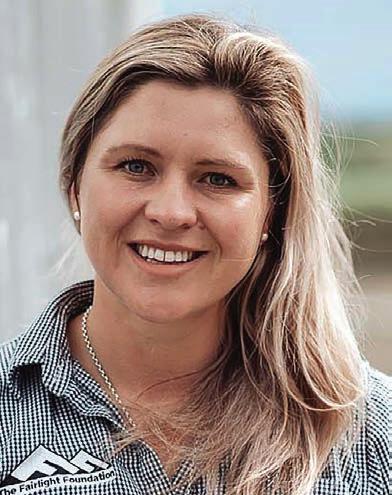

The foundation works to address the underrepresentation of women in management roles in agriculture.
The report says the programme’s emphasis on leadership development and promoting female representation is a defining strength, and called it a “highly impactful” initiative.
It also found the programme has broader potential as a replicable model for other industries, advancing gender equality and professional development across the food and fibre sector.
Graduates of the programme and employers of graduates were interviewed as part of the evaluation. Graduates cited it as being instrumental in preparing them for leadership roles, highlighting confidence building, the core value of “wellness” and mentorship as other strengths.
“The programme is highly regarded by employers for producing skilled and capable graduates ... able to handle responsibility and fit in well with farm teams,” the report says.
Fairlight Foundation executive director Laura Koot said the report was amazing, but the foundation would not be resting on its laurels.
“I feel we are on track. We’re excited to have independent feedback on our programme, but all it does is cement our purpose. It is encouraging that someone outside the organisation can see value in what we’re doing.”
Koot said the foundation regularly conducts its own interviews with interns and graduates and is constantly reviewing and fine-tuning its offering to ensure it meets the changing demands of the industry.
“We’re here for 100 years. It’s not set and forget, it has to be fit for purpose, every year ... we’re giving them the tools they need to navigate the industry as they want to, to advance their career in any area of the sector.”
The report does identify some areas for improvement, such as more practical skills and education around financial management, some of which the foundation has already addressed.
This year it introduced a financial literacy programme in conjunction with ANZ bank, which takes interns from basic budgeting right through to building equity in a farming business, Koot said. She was quick to pay credit to Doug and Mari Harpur (majority owners of Fairlight Station), who provide the endowment that allows the programme to run,
and to the work done by Fairlight Station managers and shareholders Simon and Lou Wright, particularly the high-quality pastoral care provided under their watch.
“One of the biggest reasons the programme is a success is because it’s being run on Fairlight Station. It’s the incredibly supportive family environment, it’s a safe place to learn, combined with Simon’s skills and experience – his farming skills are of the highest quality. You could not run this programme on just any station,” she said.
“I want all farmers to look at the environment they’re providing, particularly if they’re taking on young people.”
More broadly, the foundation is now moving into the wider community and schooling space, running its first one-day workshops for secondary school girls last month, with the support of Land Based Training and its tutors. It also has plans to run twoday Pasture Camps.
Koot sees the benefits as twofold – there’s an industry good element, and the creation of a pipeline for future internship applicants.

GE Bill a fork in road: organic sector

Rennie TECHNOLOGY Genetics
ORGANIC Aotearoa New Zealand
CEO Tiffany Tompkins cautions that NZ’s agri sector is at a fork in the road as it contemplates its genetic technology options. Her organisation is continuing to push back on government plans to deregulate and open the gene technology sector, pushing aside legislation that is more than 20 years old, and regarded as some of the most restrictive in the world today.
But Tompkins is cautioning against swinging to a deregulated extreme where she says NZ risks losing not only any value a “GMO free” claim may hold, but also eroding value in organics, the fastest growing sector within the primary industry.
The release of OANZ’s four yearly industry report earlier this month highlighted how the sector had broken through the $1 billion-
a-year value point, experiencing industry-leading year-on-year growth of 12% in a global market expected to be worth US$650 billion by 2033.
Tompkins said she is concerned at the speed with which the government wants to push legislation through. It is aiming the Gene Technology Bill will be an Act by year’s end, and first applications through by late January 2026.
She said OANZ’s concerns remain as they were when they submitted on the Bill. These include how deregulated the sector was likely to become, and the lack of research and understanding on the technology’s “unintended consequences”.
She cites the case of gene-edited poll cattle exhibiting antibiotic resistance, discovered by the United States’ Food and Drug Administration.
“Globally there is a huge push right now for more countries to accept more GE type crops, due to
pressure to reduce sprays and crop treatments.”
But, like Canterbury University’s Professor Jack Heinemann, she questions whether NZ is likely to see true value from a technology that has so far delivered only broadacre results to commodity type crops, namely corn, soybeans and cotton.
“So far the results have been relatively underwhelming. The hype has been there but it has not really delivered.”
In a Spinoff article last year Heinemann pointed to a failure in the tech to deliver on drought-, heat-, flood- or salt-tolerant crops to date.
Meantime Tompkins maintains the downside losses from seed contamination into NZ’s organic food production are far greater than what gene tech can deliver.
“At present we only have 0.6% of our farmland area in organics, earning over $1 billion a year.
“Globally we need 11-14% of land area to keep up with demand.
Imagine if NZ moved from 0.6% to even just 3% of farmland area. We are not playing in the commodity game here, we have a massive and growing market.”
The International Federation of Organic Agriculture Movements (IFOAM), to which OANZ belongs, is steadfast in its non-acceptance of gene editing technology and its integration into organic farming systems.
It cites the concerns echoed by OANZ, including unintended consequences, consumer trust issues should organics adopt the technology, and unforeseen environmental risks.
A review paper released by exGrasslanz CEO John Caradus in 2023 said GE crops had improved yield, quality and environmental outcomes to farmers while delivering benefits to consumers, and said they were unlikely to have an impact upon overseas markets.
“We are not anti-science. Biotech is a great industry but the risks associated with it are being

ignored. You need to regulate GE crops and everything has to be contained.
“The economic consequences of GE needs to be considered, and no economic evaluation has been done on the impact to organics.”
MOVING ON: Fairlight Foundation’s 2024 interns celebrate at their graduation with former graduates. From left are Holli Robinson, Aggie Burgess, Ella Clarke, Monique Mellow, Mikayla Beaumont, Lily Priest, Emma Foss, Ella Eades, Yvonne van Baarle and Samantha McKelvey. Photo: Patrick Fallon
Richard
PUSHING: Organics Aotearoa NZ CEO Tiffany Tompkins says no analysis has been made about the impact of GE tech on organics, NZ’s fastest growing food producing sector.
VALUE: Fairlight Foundation executive director, Laura Koot, says it is encouraging that ‘someone outside the organisation can see value in what we’re doing’.
INTERNS: Fairlight Foundation 2025 interns with Fairlight stock manager Sam Wright. From left, Tegan Butler, Sam Wright, Nerida Bateup and Maddi Hubers. Photo: Clare Toia-Bailey
Innovators honoured with Fieldays awards

Gerald Piddock TECHNOLOGY Awards
RUMINANT Biotech and Miti were big winners at the Fieldays Innovation Awards, receiving the Prototype Award and Early-Stage Award, respectively.
Rounding out the winners were CropX, whose Evato 1 product won the Growth & Scale Award, and St Paul’s Collegiate School, who won the Young Innovator Award with KiwiPrune.
There were five short-listed finalists in each awards category, who had their entries judged by a panel of 18 sector experts on June 11. This year’s awards had 63 overall entries.
Auckland-based Ruminant Biotech has created a slow-release bolus called Emitless, which delivers over 75% methane reduction in cattle for 100 days from a single treatment.
George Reeves said they were elated to win and also surprised given the calibre of the other finalists.
“It’s pretty humbling to win it when you’re amongst so many other good innovations.”
Oamaru’s Alps2Ocean Foods Tapui, the company behind Miti, has created a protein snack produced from surplus dairy calves. Company founder Daniel Carson said he was blown away at the win.
“It’s an incredible honour, especially knowing how many bold, innovative technology ventures are out here trying to make a difference.
“We didn’t come to Fieldays for awards, we came to share an idea, to invite feedback, and to kōrero with the people who this matters most to: farmers, food lovers, and the next generation of innovators.”
It was one small step on a much bigger journey, he said.
“We’re here to reshape the red meat value chain, for the good of people, animals and the land.”
CropX, from Wellington, won the Growth & Scale Award. The judges were impressed by the development and introduction of the Evato1 evapotranspiration sensor, a transformative addition to the CropX platform.
CropX sales and business development manager Julian Ramirez-Luna said he built the sensor, called Evato 1, in his garage.
“It’s a very simple, smart Kiwi innovation.”
It measures and monitors water evapotranspiration for irrigated crops and pastures, conveying the information to farmers and growers in an online dashboard, CropX.
The system also measures and displays soil moisture and rainfall, allowing farmers to make responsible decisions around when to irrigate.
The KiwiPrune team from Hamilton’s St Paul’s Collegiate School won the Fieldays Young Innovator Award for entrants 19 years old and under.
KiwiPrune was designed and developed as part of coursework for the AgriBusiness in Schools programme, to simplify the labourintensive task of removing the plastic clips used to secure the kiwifruit vine.
The device is designed to remove clips from kiwifruit vines on orchards, improving productivity, reducing strain, and enhancing sustainability.
“Usually people have to take the clips off with their hands. There’s thousands of them and it’s a bit of a pain,” co-creator Madeleine Anderson said.
KiwiPrune removes the clips without damaging the vine or the wire. It also has a serrated side to cut through ties, she said.
Co-creator Courtney Malloy grew up on orchards, having firsthand experience of manually removing the clips while working the vines during the school holidays.
“We came up with the idea to make it easier for all growers and workers.”
Both said it had been hugely popular with visitors to their Fieldays site, resulting in a list of people who want to order the tool.
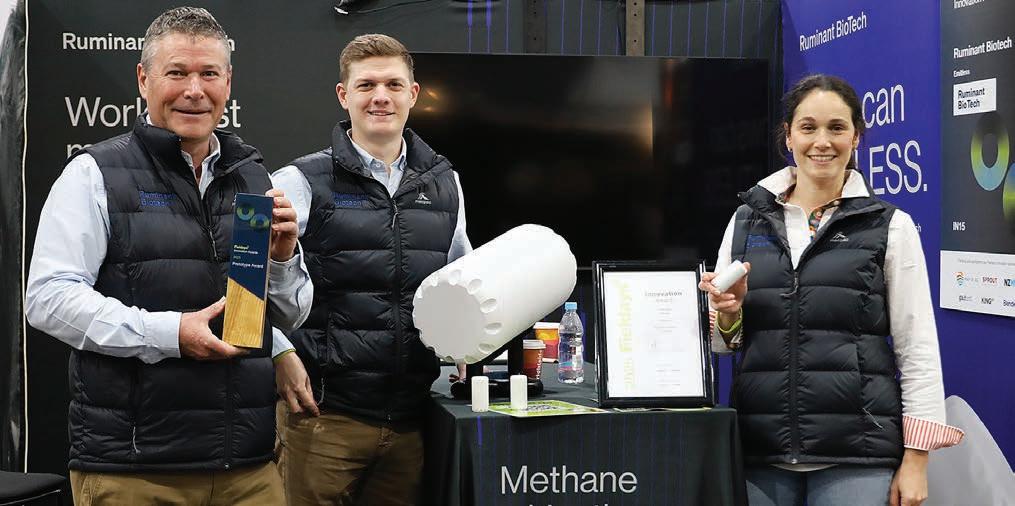

Are you a member of a community group or club?
Your community group or club could be an incorporated society
Recent law changes mean that every incorporated society must reregister before 5 April 2026 to keep its status and assets.
Learn more about the law changes by scanning the QR code, or go to: is-register.companiesoffice.govt nz/ law-changes
PROTOTYPE: Ruminant Biotech won the Prototype Award at the Fieldays Innovation Awards for its slow-releasing bolus. The Ruminant Biotech team were, from left, head of intellectual assets and strategic partnerships George Reeves, senior business development manager Ian South and head of research studies Kirsty Bardoul.
Science takes a scythe to fert waste

SOUTHLAND dairy farmer
David Dodunski pulls no punches when it comes to environmental stewardship.
To him, it’s not optional – it’s essential.
“We need to encourage fellow dairy farmers to use technology and modern science to reduce the wastage and contamination of artificial contaminants into our waterways,” Dodunski says.
Dodunski is the founder of the Fortuna Group. Fortuna has 23 dairy farms, producing 7.6 million kgMS from 16,500 cows at peak milk.
The group also has 2800 effective hectares of support land, making it largely self-contained and in full control of youngstock development.
It did not start this big but began four decades ago, when Dodunski started sharemilking with just 31 cows.
Very early on Dodunski became convinced that we need to do better.
His epiphany came to him when he was driving along a rural road and his windscreen was pelted with fertiliser granules, even though the bulk spreader was some distance away from him.
He realised how much fertiliser must be entering waterways –and decided to do something about it.
He began setting up buffer zones near waterways.
Without digital tools, he’d mark exclusion zones by hand on paper maps, fax them to drivers, and trust that they would use them correctly.
Fast-forward to today, and digital tools are at the heart of Fortuna’s nutrient management –
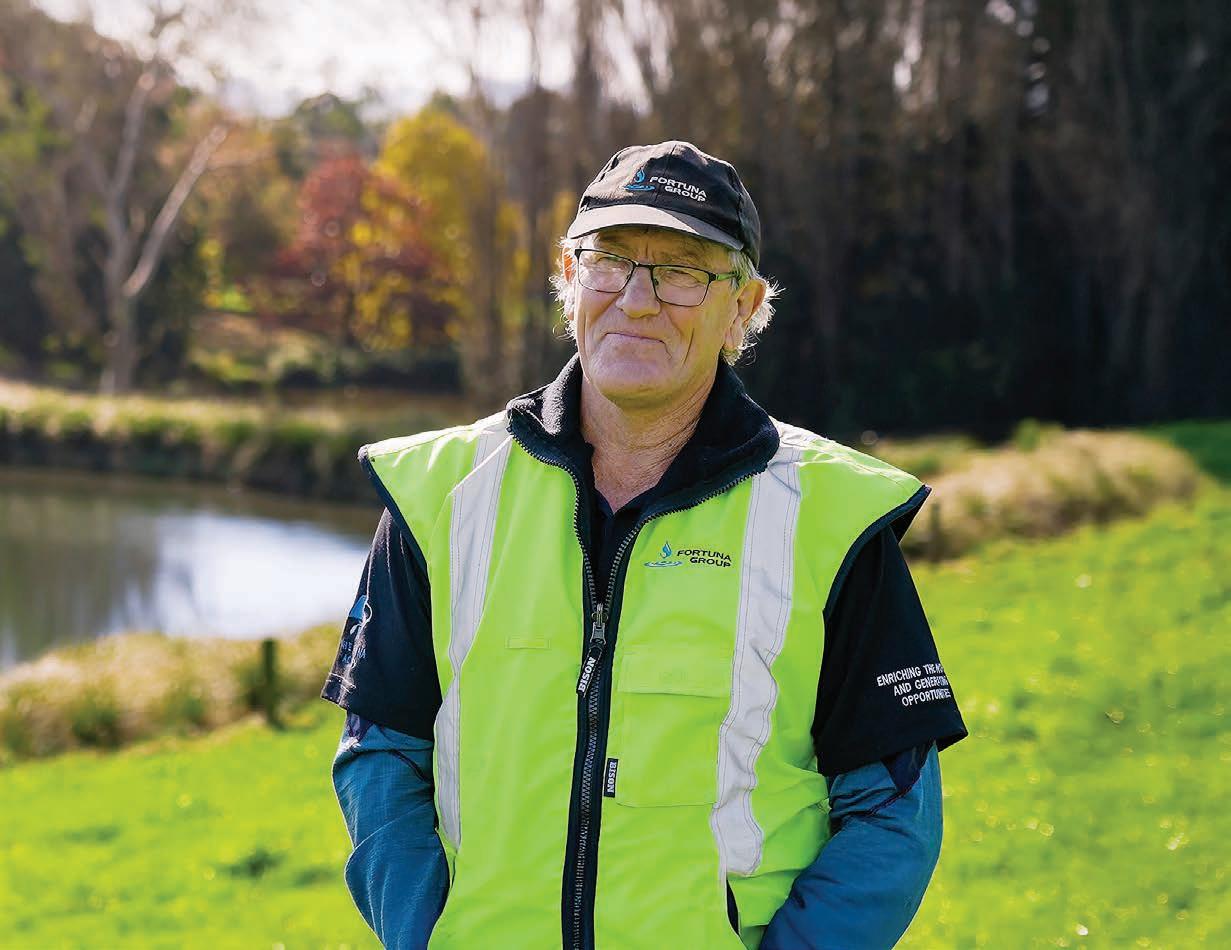
particularly Ballance’s SpreadWise platform.
SpreadWise gives the Fortuna team the info they need. With an advanced digital mapping tool, nutrient application on farms are optimised.
By identifying areas within paddocks naturally enriched by stock movements, such as gates, troughs and other hotspots, nutrients can be applied precisely where they’re needed, saving up to 10% on nutrient costs.
This means reduced nutrient use, improved efficiency, less waste and a lower environmental impact.
SpreadWise maps key farm features and uses Artificial Intelligence to create exclusion zones where nutrients aren’t needed.
These enhanced maps are integrated into every MyBallance spread journey request.
The tech helps the Fortuna team practically implement their
philosophy of only applying what’s really needed.
On-farm examples illustrate this best.
Trial work done at Fortuna Group showed that (potassium) K levels at the back third of paddocks were half the levels in the front twothirds, with levels in the gateways and troughs especially elevated.
We call an effluent pond a nutrient storage vessel. We know what the nutrients are in the effluent, we treat it just like artificial fertiliser.
David Dodunski Fortuna Group
MyBallance comes in handy in such a situation and Dodunski said they now do variable rate applications in paddocks, applying
double the amount of K on the back third of a paddock, compared to the front two-thirds.
Dodunski said the nature of farming means it’ll throw a curveball every now and then – so you have to be ready to adapt and change.
For example, certain paddocks seem to be higher in some nutrients than others.
Tests on a farm the group just took over showed a paddock with an Olsen P level of 62, and another with an Olsen P level of 15.
“That’s why we test all paddock soil every four years,” he said.
“Testing is key to making decisions. Then we have a big sitdown with Ballance specialists and we come up with solid plans.”
Asked how you make every dollar and decision count, Dodunski said,
“just do what’s right”.
It’s a waste of money to apply any nutrient if it is already present in high levels in a paddock.
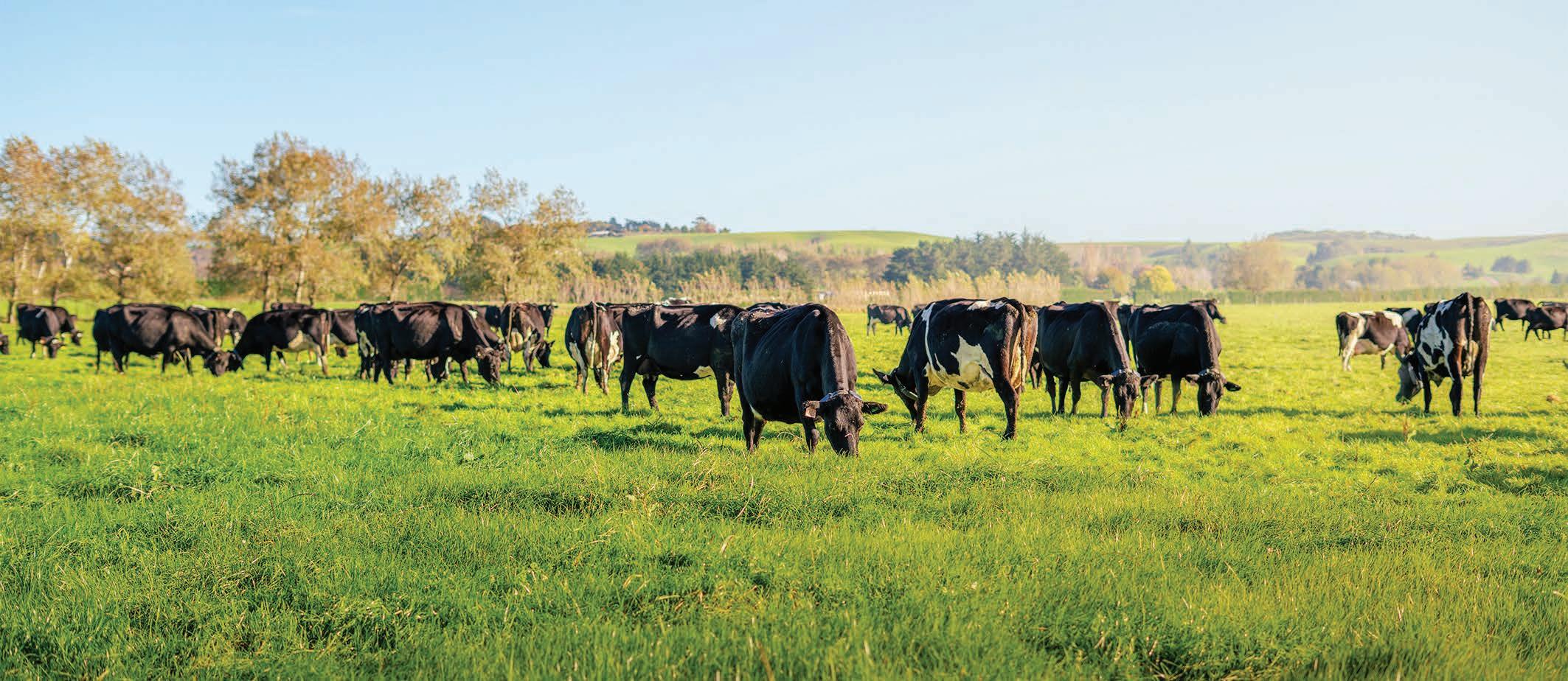
Gerhard Uys TECHNOLOGY On farm
MEASURE IT: Fortuna Group founder David Dodunski said technology is the key to environmental success.
Photos: Supplied
STEADY ON GIRLS: By managing grazing better, root zones can develop, which leads to better nutrient uptake, says David Dodunski.
On Farm Story
On Farm Story
Data from Ballance shows that last year the average spend on a Fortuna Group dairy farm was just shy of $500/ha.
Data from Ballance shows that last year the average spend on a Fortuna Group dairy farm was just shy of $500/ha.
With 65% of the nutrient plan made up of nitrogen, and 35% PKS (phosphorus, potassium, sulphur), SpreadWise was applied to the PKS portion.
With 65% of the nutrient plan made up of nitrogen, and 35% PKS (phosphorus, potassium, sulphur), SpreadWise was applied to the PKS portion.
Using SpreadWise for the PKS portion, and reducing effective farm area by 5-7%, approximately $8.75 - $12.25/ha can be saved.
This can be saved outright or redistributed to areas of the farm with higher nutrient requirements.
With SpreadWise costing around $5/ha, this is a return on investment to take note of.
Using SpreadWise for the PKS portion, and reducing effective farm area by 5-7%, approximately $8.75 - $12.25/ha can be saved. This can be saved outright or redistributed to areas of the farm with higher nutrient requirements. With SpreadWise costing around $5/ha, this is a return on investment to take note of.
This will also become more beneficial where higher rates of PKS are applied and when fertiliser pricing is higher.
This will also become more beneficial where higher rates of PKS are applied and when fertiliser pricing is higher.
On the farm, effluent is also part of the equation.
On the farm, effluent is also part of the equation.
“We call an effluent pond a nutrient storage vessel,” he said.
“We call an effluent pond a nutrient storage vessel,” he said.
“We know what the nutrients are in the effluent, we treat it just like artificial fertiliser.”
“We know what the nutrients are in the effluent, we treat it just like artificial fertiliser.”
By entering effluent data into MyBallance, this accounts for effluent nutrient content, enabling Ballance specialists to factor this in when making fertiliser recommendations.
By entering effluent data into MyBallance, this accounts for effluent nutrient content, enabling Ballance specialists to factor this in when making fertiliser recommendations.
By applying effluent and fertiliser in the right place, at the right application rates, Dodunski said he can make money – a point he is keen to share with fellow farmers.
By applying effluent and fertiliser in the right place, at the right application rates, Dodunski said he can make money – a point he is keen to share with fellow farmers.
“We can all make more money by growing more grass.”
“We can all make more money by growing more grass.”
Of course, it is not all about nutrient application.
Of course, it is not all about nutrient application.
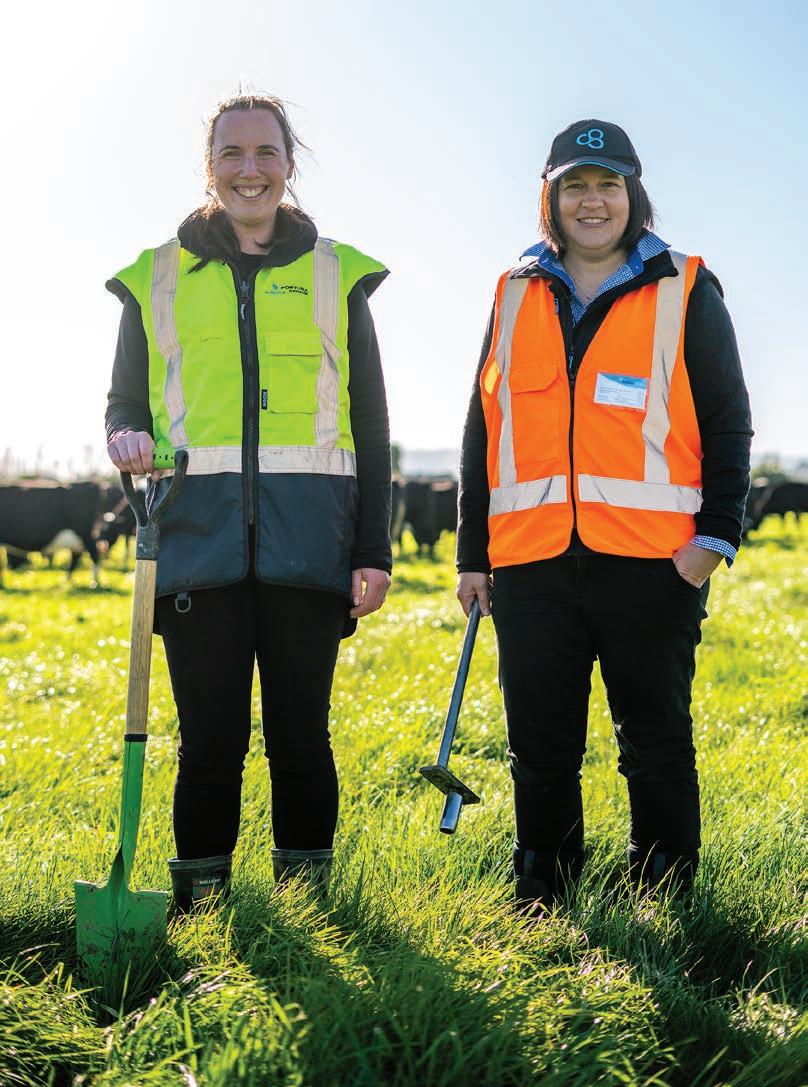
“The team has a saying, ‘Keep it in the root zone’.”
“The team has a saying, ‘Keep it in the root zone’.”
Fertiliser in the root zone feeds plants. Below that, it’s leached and is wasted money and an environmental liability.
Fertiliser in the root zone feeds plants. Below that, it’s leached and is wasted money and an environmental liability.
“The deeper the root zone, the less chance you’ve got of nutrients going below the root zone. Once nutrients are below the root zone they’re going to find their way to a waterway. The money you spent on fertiliser is gone.”
“The deeper the root zone, the less chance you’ve got of nutrients going below the root zone. Once nutrients are below the root zone they’re going to find their way to a waterway. The money you spent on fertiliser is gone.”
By managing grazing better, root zones can develop, which leads to better nutrient uptake.
By managing grazing better, root zones can develop, which leads to better nutrient uptake.
“If you’ve got a paddock set stocked with cattle, the root zones are probably going to be fairly shallow, because they’ve been hammered every single day.”
“If you’ve got a paddock set stocked with cattle, the root zones are probably going to be fairly shallow, because they’ve been hammered every single day.”
But with, for example, a 30day round, roots are given time to develop and so increase their ability to take up nutrients.
But with, for example, a 30day round, roots are given time to develop and so increase their ability to take up nutrients.
“When you think it through in a holistic manner, if it’s good for the environment then chances are it’s good for your back pocket.”
“When you think it through in a holistic manner, if it’s good for the environment then chances are it’s good for your back pocket.”
When you think it through in a holistic manner, if it’s good for the environment then chances are it’s good for your back pocket.
When you think it through in a holistic manner, if it’s good for the environment then chances are it’s good for your back pocket.
David Dodunski Fortuna Group
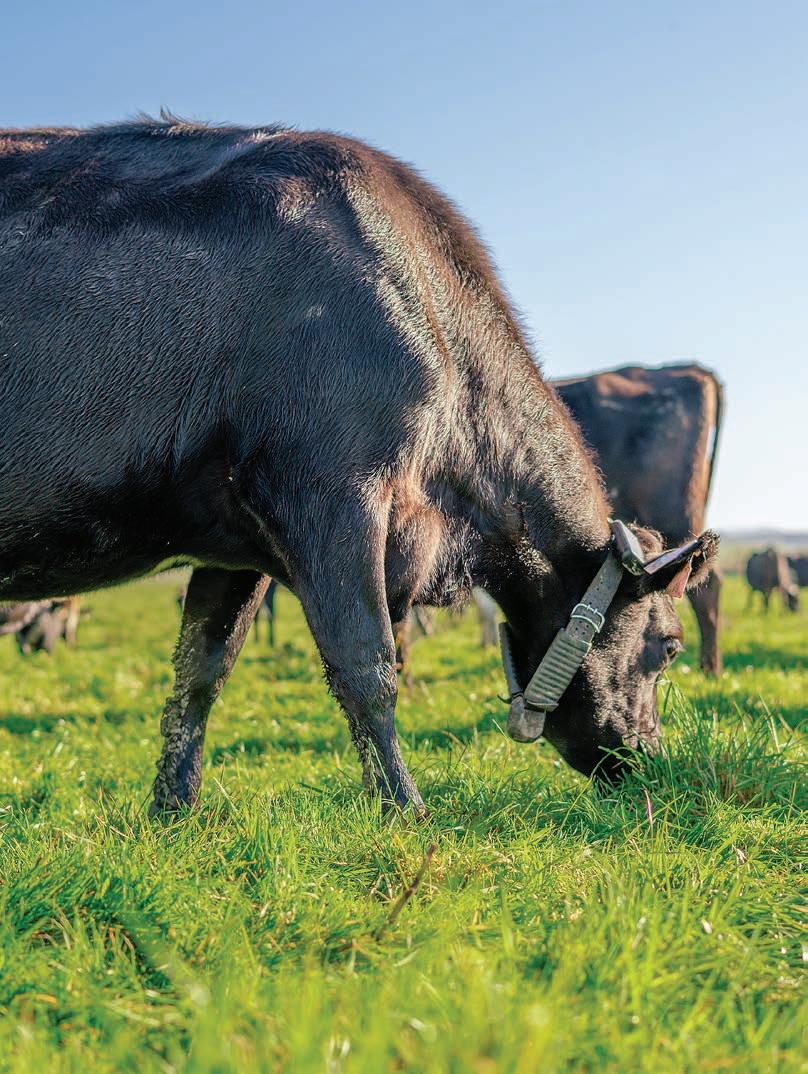
Such a group also has the means to make decisions that have real lasting impact.
Such a group also has the means to make decisions that have real lasting impact.
Dodunski said the structure they have at Fortuna was intentional.
He wanted a company that looks to the future for farming in general, and Fortuna farmers in particular.
Dodunski said the structure they have at Fortuna was intentional. He wanted a company that looks to the future for farming in general, and Fortuna farmers in particular.
But he also wanted a company that could be inter-generational.
But he also wanted a company that could be inter-generational.
Fortuna farmers can buy into the company and a corporate structure allows someone to sell shares and move on without seriously impacting an operation.
Fortuna farmers can buy into the company and a corporate structure allows someone to sell shares and move on without seriously impacting an operation.
Not only does this future-proof family assets around capital and liquidity, but by pulling in people with the same values, the environmental and people custodianship also lasts.
Not only does this future-proof family assets around capital and liquidity, but by pulling in people with the same values, the environmental and people custodianship also lasts.


For example, the group is very focused on environmental work, and plants 10,000 to 15,000 plants a year, with some carex secta seed sourced on farm.
For example, the group is very focused on environmental work, and plants 10,000 to 15,000 plants a year, with some carex secta seed sourced on farm.
Riparian planting on both sides of open waterways is a locked-in strategy.
Riparian planting on both sides of open waterways is a locked-in strategy.
So far, about 20 sediment traps have been built across the farms to prevent runoff entering streams.
So far, about 20 sediment traps have been built across the farms to prevent runoff entering streams.
Dodunski said Fortuna aims to build 100 sediment traps “before I get too old”.
Dodunski said Fortuna aims to build 100 sediment traps “before I get too old”.
To make all of this work, a good team is key.
To make all of this work, a good team is key.
“The more scale we have, the more horsepower we have to do sexy stuff.
“The more scale we have, the more horsepower we have to do sexy stuff.
“If you’ve got a team of people that can specialise in different areas, you can have a very powerful team to build something special with.
“If you’ve got a team of people that can specialise in different areas, you can have a very powerful team to build something special with.
“But the root of all this is that the key people are farmers. The highest paid person in the company is happy to milk cows, is happy to lay tiles and is happy to present a board report or speak to council,” Dodunski said.
Likewise, collaboration with industry experts is key to driving sustainable farm practices, said Dodunski.
“But the root of all this is that the key people are farmers. The highest paid person in the company is happy to milk cows, is happy to lay tiles and is happy to present a board report or speak to council,” Dodunski said. Likewise, collaboration with industry experts is key to driving sustainable farm practices, said Dodunski.
“If we can get academic, intelligent people alongside practical farmers that have a spiritual attachment to the land, then we can come up with some real winning formulas.”
“If we can get academic, intelligent people alongside practical farmers that have a spiritual attachment to the land, then we can come up with some real winning formulas.”
Meet the people behind the farm gate


SPOT ON: By identifying areas within paddocks naturally enriched by stock movements, nutrients can be applied precisely where they’re needed.
DRIVERS: Fortuna Group sustainability manager Rosie Forbes and Ballance corporate accounts manager Jessica Ruddenklau.
David Dodunski Fortuna Group
SPOT ON: By identifying areas within paddocks naturally enriched by stock movements, nutrients can be applied precisely where they’re needed.
DRIVERS: Fortuna Group sustainability manager Rosie Forbes and Ballance corporate accounts manager Jessica Ruddenklau.
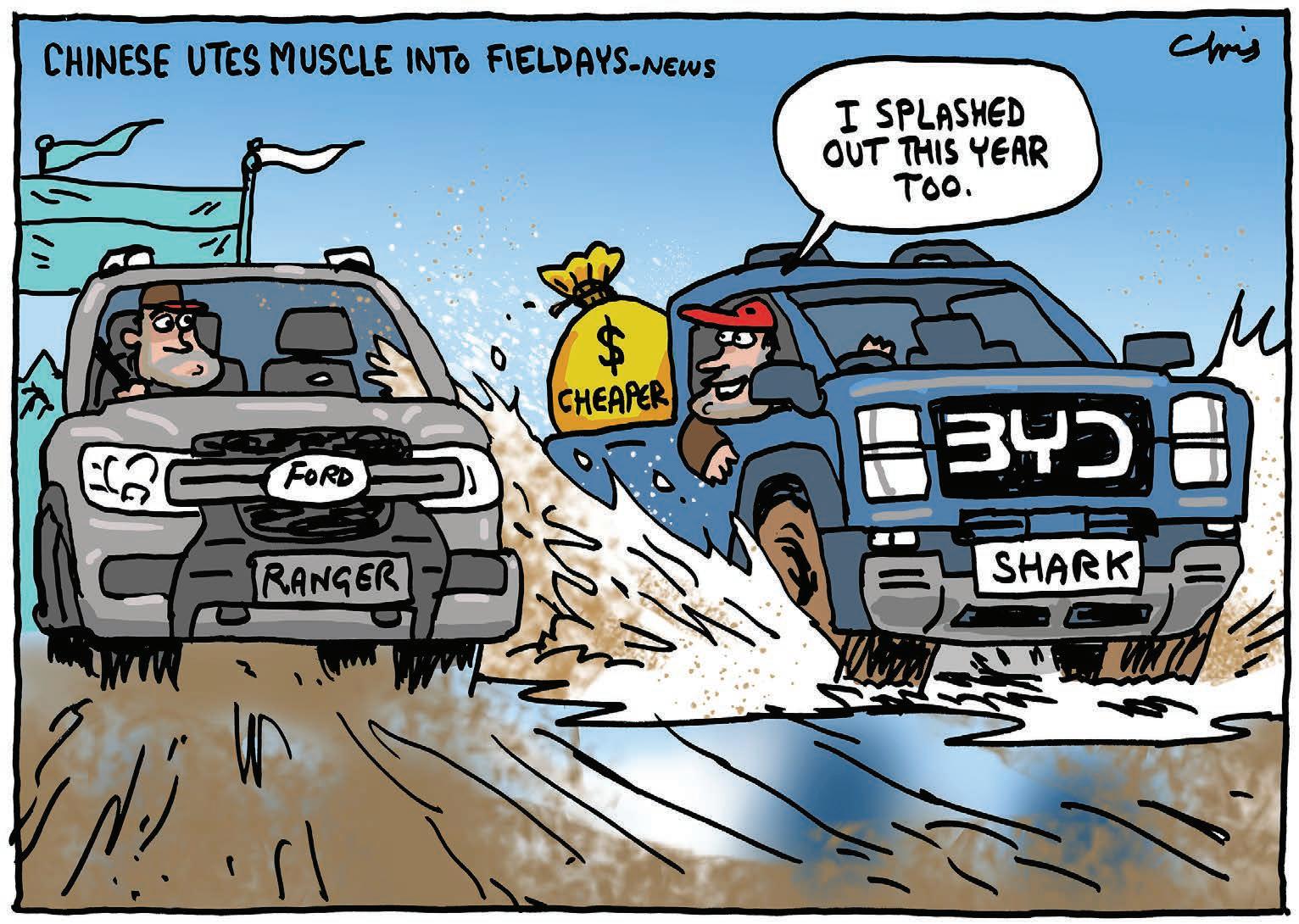
From the Editor
Economic uplift in the air at Fieldays

TNeal Wallace Senior reporter
HERE was a spring in the step and a smile on the face of many of the 110,000 people who thronged Fieldays this year.
It was a sign the regions are once again leading New Zealand’s economic recovery. If anyone doubted that, they were not at Fieldays.
Crowds at the big-ticket tractor, implement and utility vendor sites indicated farmers were spending proceeds from recent buoyant prices to catch up on deferred capital purchases, repairs and maintenance. Sales were definitely being made, but buyers were not being reckless. Cautious and considered were more accurate descriptions.
Dairy prices have been relatively stable in recent years, but the scale and speed with which dairy and meat returns rose in the past six months has been a surprise. A year ago, who would have thought
Fonterra would be forecasting a farmgate milk price of $10/kg; that mid-season lamb prices would be 30% higher and winter contracts of $10.20/kg would be on offer, $3/ kg a head more than a year ago?
This also follows a record year for horticulture, with exports in the year to June 30 on track to reach $8.5 billion.
That primary sector confidence was underlined by the Rabobank Rural Confidence Survey, released last week, which is at a near-record high with investment intentions at their strongest level since 2018.
The recent aligning of multiple planets has transformed the fortunes of the livestock sector, desperately needed by sheep and beef farmers after several tough years and by an economy needing a shot of adrenalin.
A key driver for these resurgent markets is unsatisfied demand from global markets.
Those markets can’t get enough of our meat and dairy products, but of some concern is the shortage of sheep.
As we have previously reported, the persistent decline in sheep and beef numbers due to afforestation will have significant, widespread repercussions.
Beef + Lamb NZ has calculated that more than 300,000 hectares have been planted in forestry since 2017 with the subsequent loss of 2 million stock units.
Calculating the number of lambs still on farms and available for slaughter this year has become a lottery. The situation is
LAST WEEK’S POLL RESULT
leading to procurement pressure, which is underpinning a portion of current farmgate prices.
A topic discussed at Fieldays was what this means for our network of meat plants, with the consensus that it will mean closures. The speculation centres on which company will blink first.
On a positive note, two other topics widely discussed were farmers having to pay income tax bills which, while painful, is a sign of prosperity.
History consistently shows it is the primary sector that leads the economic recovery and this is once again the case.
The other topic was the incentivising impetus on capital purchases from the government’s 20% depreciation rate.
Not discussed but very apparent was the comparison between the resurgence of the regional economy and the ongoing flatness of economies in Auckland and Wellington.
History consistently shows it is the primary sector that leads the economic recovery and this is once again the case.
The multibillion-dollar question is whether livestock numbers and international markets have reached a level that can sustain these elevated prices – or will we return to fortunes that fluctuate each year?
ALMOST 90% of voters thought more needed to be done to halt the march of pine forests across New Zealand. “Our own government is subsidising largely foreign companies to buy our productive farm land and plant it in almost worthless pine trees to buy and sell carbon credits to our own NZ companies,” one said.
Letters of the week Climate change: the real question
Jason Barrier Waerenga
I RESPECTFULLY disagree with the recent article by Ben Anderson, “Why we deny and why we shouldn’t” (June 11), which paints a picture of farmers as climate “deniers” and exhorts us to do more to address climate change – for the sake of our children.
My view is that most farmers do indeed understand that climate change is real but we are also deeply sceptical of the climate policy responses – for three good reasons.
Firstly, is climate change really some sort of existential threat to our children? I would argue that it is not and that we should stop telling our kids that it is.
Climate change is a challenge, yes, but no more so than a large number of risks facing humanity, including artificial intelligence, depopulation, nuclear conflagration and geopolitical tantrums.
Compared with other threats, the climate risks are more gradual and perhaps more manageable.
Secondly, let’s consider the net effect on rural New Zealand of our shambolic climate policy responses to date. Vast areas of our productive exporting grasslands have been converted into non-productive pine tree wastelands with the collateral damage of unemployed shepherds, hollowed-out communities, beaches piled up with slash, and a rapidly developing overcapacity crisis in our meat industry. All for what gain? No wonder some of us are a little sceptical.
Thirdly, are consumers really demanding lower carbon meat? If so then this should make our current naturally raised and lowcarbon product vastly more valuable than all of our competitors’ offerings.
Finally, the “denier” name calling needs to stop. The public questioning of our current climate policy trajectory is a good thing. We need to move beyond the bickering scientists and the hectoring columnists, to a more reasonable place, where the likely economic costs of climate change policies are calculated and then carefully considered against the infinitesimally small contribution we can make to reducing global warming.
So perhaps the real question we need to start asking ourselves is, “How do we adapt to climate change whilst preserving the integrity and profitability of our farming industries?”
Our children deserve nothing less.
Best letter each week WINS a quality hiking knife farmers.weekly@agrihq.co.nz
Last week’s question: Do you think the Forestry Conversions Amendment Bill does enough to slow the conversion of farms to forestry?
Do you support the introduction of biodiversity credits that recognise on-farm environmental improvements?
This week’s poll question (see Opinion page and page 7): Have
“That is a massive transfer of wealth from taxes on our productive export sector into the hands of foreign forestry investors. Should we do that? No!”
“Too slow, too many loopholes,” said another. “Still allowing trees smothering farmland to be included in ETS.”
Of those who voted yes, many thought more work was needed to reduce New Zealand’s emissions profile. “The government doesn’t take global heating seriously. If it wanted to make an actual difference it should make sure the financial benefits of carbon farming go to NZers not foreign corporates.”
The day the local beach turned green
Eating the elephant

David Eade is a Whanganui sheep and beef farmer with a finance background, specialising in investments within the primary sector. eating.the.elephant.nz@gmail.com
WHEN we think of climate change, we tend to picture smokestacks pumping out fumes, cracked, drought-ridden earth in Africa and melting glaciers at home and in faraway places.
What we don’t usually picture is our coastlines, and certainly not the beaches we know and love, suddenly transformed by invasive species. But climate change doesn’t always arrive with fire or flood. Sometimes it creeps in under the surface and quietly takes hold – as we discovered this summer when caulerpa, a fast-spreading invasive seaweed, turned a familiar bay
into a green carpet overnight.
We encountered it first hand when trying to squeeze the last of summer out of a late autumn holiday at the beach. A beach we know well, a familiar family favourite, changed overnight. Where there was once golden sand and clear water, there was now a thick green mat stretching across the shoreline.
The transformation looked like something out of a Dr Seuss book, but there was nothing whimsical about it.
We rallied as a small group and attempted to clean it up on our own. After a few loads, we realised that our small attempt was going to fall far short of achieving the desired outcome.
A fortuitous phone call from a softly spoken man led to a full-scale, iwi-led community mobilisation. Over two days, dozens of people arrived with sacks, rakes and a clear purpose. People gave their time, their energy and their resources.
It was incredibly effective and, from a social point of view, fascinating.
Uplifting as our little collective victory over caulerpa was, the massive scale of this threat is becoming increasingly clear.
Research shows that New Zealand’s economy risks a $9.4 billion hit over the next 30 years as it gains an increasing foothold along our coastlines.
The invasive seaweed is now found at 90-plus sites from Cape Reinga to the East Cape. Warming ocean temperatures are creating
ideal conditions for its rapid spread.
Knowing this is just the first of many caulerpa days on the beach to come made me wonder: what is it that actually motivates people to act? Why did this particular event move so many, so quickly? And, more importantly, how can we channel that same motivation before other environmental crises land on our doorstep?
How do we create that sense of shared ownership without the pain of a visible collapse?
Currently, funding for caulerpa tends to flow towards research and containment efforts. There are programmes in place aimed at slowing the weed’s spread – marine monitoring, signage, education. But these are, by nature, institutional responses. What we saw on that beach was something else – local, decentralised and driven by values. Not because anyone was told to act, but because they felt it was theirs to protect. So how do we create that sense of shared ownership without the pain of a visible collapse? Is it about place-based connection? Leadership from within communities? Tangible, visible threats? Or is it simply that we’re more reactive than proactive by nature?
This isn’t just a philosophical question, it has real implications
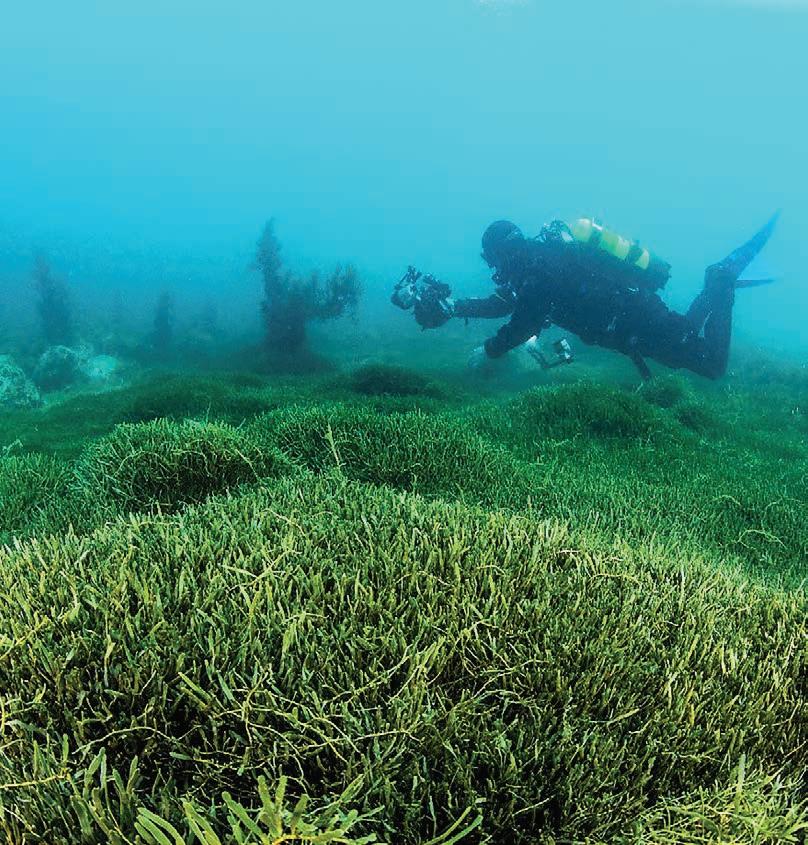
for policy, funding and environmental planning. If we want to build resilience into our systems, perhaps the key lies in studying these moments of collective action.
What was the trigger? Who mobilised first? What resources were needed, and which were already on hand?
The caulerpa outbreak is a reminder that the environmental challenges of our time won’t
always announce themselves with slow-moving graphs and reports. Sometimes they arrive overnight, washing up at our feet. When they do, our best chance of response may not come from central planning, but from communities who already feel equipped – socially, emotionally and practically – to protect what’s theirs.
The question is, how do we prepare them before the beach turns green?
Opportunities for farming in biodiversity credits
In my view
EMBRACING New Zealand’s unique biodiversity isn’t just an environmental commitment – it can and should be viewed as a strategic financial decision.
Which is why I am encouraged to hear that the government is exploring whether a biodiversity credit system could help incentivise protection and restoration of native wildlife.
For those new to the concept, biodiversity credits are a marketbased instrument designed to promote conservation and at the same time create significant financial opportunities for farmers. Similar to carbon credits, they can be sold to businesses seeking to offset their environmental impacts.
So, by restoring native habitats or preserving existing ecosystems, there’s the potential for farmers to generate biodiversity credits as an alternate income stream.
It’s still an emerging approach globally but several countries,
including Australia, the United States and Canada, already have forms of biodiversity credits.
Others are actively considering them, with the United Kingdom and France working on a joint initiative.
It is not hard to see the New Zealand farming sector being able to present a compelling proposition to businesses globally.
Our isolation has fostered unique flora and fauna seen nowhere else on Earth. With more than 37% of New Zealand’s total land area devoted to agriculture, much of this biodiversity, so crucial to ecological balance, is found on farms.
Whether that has been preserved or developed by design, such as new wetlands, or is simply not
effective for farming – those areas present financial opportunities for New Zealand farmers.
creating a quantifiable means to assess and promote conservation outcomes.
CONSERVATION:
Biodiversity credits are a marketbased instrument designed to promote conservation and create significant financial opportunities for farmers, says Jo Finer.

That’s underpinned by the manifold of associated benefits of integrating biodiversity into farming practices, which can lead to healthier soils, improved water quality and natural pest control, reducing reliance on chemical inputs. Diverse plantings are increasingly being used to enhance crop yields and quality.
A 2024 report from the World Wide Fund for Nature and EY suggests that halting and reversing biodiversity loss could save New Zealand more than $270 billion over the next 50 years.
Biodiversity credits are also a way to finance conservation and restoration efforts. They represent a unit of biodiversity value, often linked to habitat restoration, species protection, or other conservation projects.
Advantages include financial incentives for landowners, which in turn provide new funding streams and incentives for conservation projects that might otherwise lack resources.
A credit system also acts as a form of stakeholder engagement, encouraging broader participation from businesses and the public in biodiversity conservation. Credits allow for measurable impact,
Inevitably, there would be challenges. Transparency, accurately measuring benefits, effective monitoring and verification mechanisms would be essential to the integrity of a credit system.
Getting the strategic framework and the credit system settings right would be absolutely critical.
Getting the strategic framework and the credit system settings right would be absolutely critical to ensure they ultimately lead to more sustainable and profitable agricultural systems.
However, if we can get this right, both for farmers and for New Zealand as a whole, biodiversity credits represent an innovative and promising approach to incentivise conservation and ensure the sustainability of our country’s rich biodiversity while strengthening our hugely valuable primary sector.

David Eade
CAULERPA: The invasive seaweed is now found at 90-plus sites from Cape Reinga to the East Cape as warming ocean temperatures create ideal conditions for its rapid spread.
Photo: NIWA
Jo Finer Finer is chief executive of the New Zealand Institute of Primary Industry Management.











STAY GROUNDED, GET FUTURE FOCUSED.
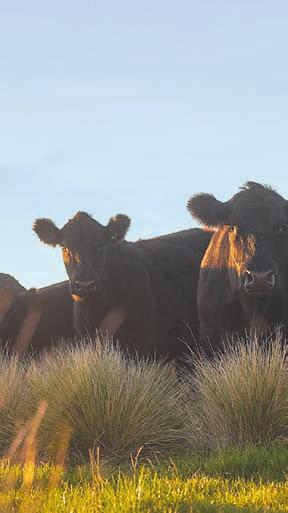

In a world where change is the only constant – shaped by unprecedented geopolitical shifts, evolving consumer expectations and a dynamic global trade environment – staying grounded and future focused has never been more important.
Our Plate to Pasture Farmer Conference is your opportunity to cut through the noise and focus on what’s really important.
We’re hosting a lineup of industry leaders and expert speakers, plus the Boning Competition National Finals, and of course the Plate to Pasture Supplier Awards.
We’re inviting everyone who creates goodness with us – farm owners, managers, stock hands and shepherds; wise old hands and keen young guns.
Our conference is free to attend for all suppliers, shareholders and teams.

Sector Focus
A good grounding
Looking after pastures pays off

CDairy
LINTON dairy farmers
Mark and Madeline Anderson say a system change has been good for them, their cows and the land.
The family has a long history on the farm, with their children being the sixth generation. It was originally a mixed system, until Anderson’s father shifted to dairy in 1995.
The farm went through a series of expansions, adding more land, another dairy farm and more cows. By 2017 they were milking over 900 cows, up from an initial 650. Anderson said as early as 2000, when he was working under sharemilkers on one of the farms, he saw a lot of burnout.
This and other observations shaped the way he views systems.
In 2014 Mark and Madeline
moved back to the original farm, taking over from herd-owning sharemilkers. Through the years operations with sharemilkers had intensified, needing more inputs.
“It looked good on paper, but then we started to have consecutive dry seasons. I was buying a lot of supplement feed, it wasn’t working for the people, the land or animals.”
Anderson had also been diagnosed with Crohn’s disease, a condition linked to stress.
The dry spell triggered ongoing changes in the system. First Anderson began adding diversity into pastures, mostly done by direct drilling.
With winter cropping, rising sediment levels in local waterways, and mud being obvious issues, they introduced multi-species winter cropping, adding herbs and legumes. Ryegrass and clover had always dominated, with a 18kg/ha sowing rate of ryegrass.
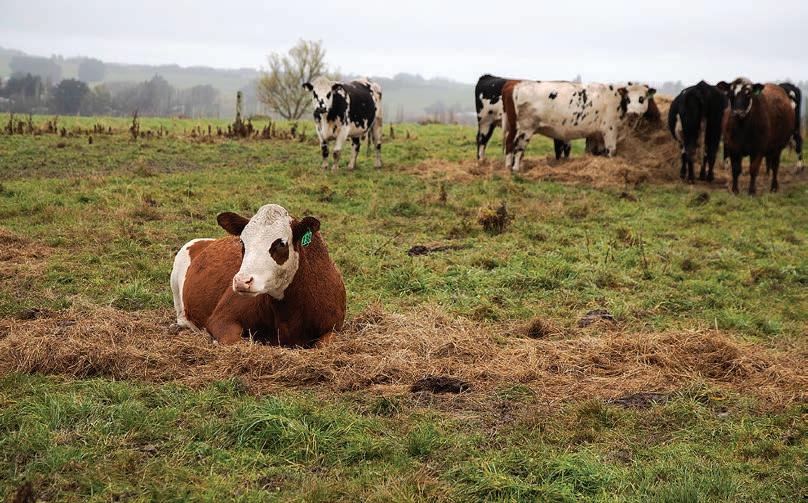
MUD: Cows on bales stay warm and, because bales are fed on pastures with cover of around 4500kg DM/ha when they go on, there’s less mud around as roots hold soil intact.
They now sow only 3kg/ha ryegrass, with the remainder made up of 30% clovers, modern cocksfoots, prairie grass, bromes, bird’s foot trefoil, deep rooted chicory, lucerne, plantain and more. Clover fixes as much as 200kg N/ha/year, and Anderson hasn’t applied N in almost a decade. His production has increased.
“With deeper rooted pastures, there’s negligible nitrogen loss.”
Grazing starts when an average number of plants hit the 3- to 3.5-leaf stage.
Anderson said this has a number of benefits.
At a later leaf stage grass contains more complete proteins, good for rumen function, and absorbs more light, leading to greater root depth and better aerated soils.
Grazing ryegrass too low leads to shorter roots and it is higher in crude protein, meaning higher leaching.
This shows up as subclinical acidosis and high milk urea on the milk docket, he said.
“We now have lower milk ureas, which translates to less concentrated nitrates in urine, less mastitis and less lameness.”
Because of their pasture mix, they top less, saving working hours and diesel. In cases where topping is needed, young stock do the job, a benefit of a closed system with young stock on hand.
They also harvest grass for silage, or skip paddocks for deferred grazing.
“We’ve tried to increase the leaf stage over the whole farm. It sends more sugars into the

In the past I think we were overstocked, which led to overgrazing, which led to soil compaction, more bacterial dominant soils, and consequently less grass growth.
Mark Anderson Clinton
soil, which feeds a diversity of microorganisms.”
Anderson said students from the University of Otago monitoring their soils initially found 10 to 20 worms per spade square.
After focusing on pasture recovery, they are finding over 100 worms per square spade, he said.
Soil tests show calcium increasing, without any lime input.
Greater worm activity means greater worm castings, helping feed and aerate soil.
“Soil tests show greater
availability of phosphate, with levels increasing
“Taking synthetics out of the system has allowed soil biology to regain a decent threshold.
“In the past I think we were overstocked, which led to overgrazing, which led to soil compaction, more bacterial dominant soils, and consequently less grass growth.”
Testing by Soil Foodweb shows increasing biological composition and activity in soils over time.
“We still do standard soil tests, but at 15cm depth because of our almost 50cm root depth, instead of the standard 6.5cm.”
They also reduced cow numbers, to become self-contained. They now milk 550 cows.
Fewer cows gave staff flexibility and they switched to a 5:2 roster. Around 2019 Anderson switched to once-a-day milking, year round.
“We could drop much of the inputs, like in-shed grain.”
Continued page 24





RETHINK: Clinton dairy farmer Mark Anderson says a complete system rethink has paid off. He introduced more diversity to pastures, introduced dual purpose animals and started milking once a day.
Photos: Gerhard Uys
Gerhard Uys ON FARM
New season gets off to a steady start
Sector perspective
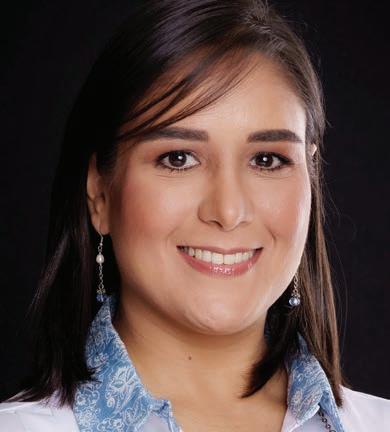
JUNE has been an eventful month for the dairy industry, continuing the momentum seen throughout the 2024/25 season.
With the new season now underway, Fonterra’s opening forecast for the 2025/26 farmgate milk price was announced at the
end of May, set at $10.00 per kgMS. What stood out, however, was the unusually wide forecast range of $8.00 to $11.00 per kgMS, highlighting the high degree of uncertainty present in global markets as the season begins.
At the time of writing, May’s official milk production figures had not yet been released for New Zealand. April remains the latest available data, showing milksolids production up a marginal 0.1% year on year, and total milk volume down -0.5%.
Globally, production trends remain mixed. Argentina continues to show strong growth, posting a 14.1% year-on-year increase in May. The United States recorded a 1.5% rise in April, while Uruguay saw a 6.0% lift. European production appears to be recovering, with the EU27 returning to 1.1% growth in April after a decline in March. In contrast, China’s March production was down -3.8%, indicating ongoing tightness in local supply. Australia remained flat at 0.4% in April, though concerns around drought in
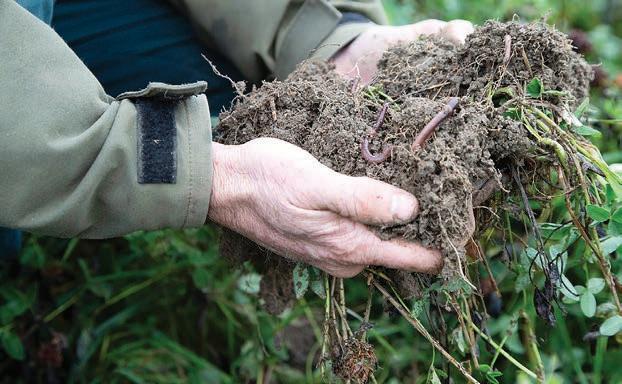

SOPI: Dairy remains New Zealand’s largest export category, according to the latest Situation and Outlook for Primary Industries report, bringing in 45% of total export earnings.
Victoria and major flooding in New South Wales may weigh on May figures.
Seasonally, GDT prices in June followed a softer tone, typical for this time of year, as northern hemisphere volumes increase and early-season New Zealand supply begins to build.
GDT Event 381 saw the index decline -1.6%, led by lower prices for whole milk powder (WMP), skim milk powder (SMP), butter, buttermilk powder (BMP) and cheddar.
GDT Event 382 followed with a further drop of -1.0%, though results were firmer than expected.
Despite pre-event selling pressure in the futures market, butter outperformed expectations with a 1.4% lift and cheddar surged 5.1%, supported by strong Middle Eastern demand.
Looking back, April export data underscored New Zealand’s
Continued from page 23
To eliminate bobby calves he began breeding dual purpose animals in 2017.
Calf rearers now receive robust animals.
The Normande and Fleckvieh genetics seem well suited to their context and hold condition well through winter and summer.
In 2019 Anderson began feeding hay bales as a winter feed option. Because paddocks are shut up from January onwards and not disturbed by machinery, roots keep the soil intact,
competitive position at the close of the 2024/25 season. Total dairy export volumes rose 11.3% year on year to 323,200 tonnes, while total export value surged 31.5%. Yearto-date figures show volumes up 5.2% and export values up 22.1%. Product-level highlights included strong growth in SMP, AMF, milk protein concentrate (MPC), cheese, and infant formula.
SMP shipments to China rose 70%, with a further 31% increase to broader Asia. WMP rose 1%, while other products such as WPC80, WPI and BMP saw moderate YoY declines.
China’s April dairy imports rose 3.9% YoY, with import value up 17.2%. Elsewhere, March dairy export volumes were mixed: Europe down -1.8%, the US up 4.0%, and Australia down -11.9%.
Argentina’s exports fell -4.9% in April and are now down -10.5% YTD.
there is no mud and cows stay on clean dry ground during winter.
Cows maintain condition, with no feed transition needed.
Paddocks used for hay bale grazing are not reseeded mechanically but regain grass coverage easily and are brought back into the round in late spring.
Cows are wintered on paddocks that are to be bale-grazed and pasture cover is around 4500kg DM/ha, ideally.
The system works for the Andersons.
Cows are producing just shy of 400 kg/MS per cow, on once-a-day milking. This season there was no pre-mating
The Ministry for Primary Industries released its biannual Situation and Outlook for Primary Industries (SOPI) report at Fieldays. It was rewarding to see NZX’s data and analysis reflected in MPI’s dairy commentary.
The SOPI report confirmed that dairy continues to underpin New Zealand’s primary sector export earnings. MPI forecasts dairy export revenue to increase by 16% to a record $27.0 billion in the year to 30 June 2025.
This growth is attributed to firmer global dairy commodity prices and constrained global supply – particularly in China and Europe. The MPI’s milk production forecast for the 2024/25 season sits at 2.2% growth YoY, closely aligned with NZX’s forecast of 2.6%.
Dairy remains New Zealand’s largest export category, bringing in $26.2bn in the year to March 31 2025, or 45% of total export earnings. China accounted for 35% of this value, followed by Indonesia, Australia and the United States.
Looking ahead, the MPI anticipates dairy export revenue could grow to $30.1bn by 2029, supported by strong longterm demand despite growing geopolitical and trade-related headwinds.
The 2025/26 season has started on a steady footing, and how international supply and demand evolves from here will shape the tone for the rest of the year.
heat recording and no veterinary interventions.
For the three weeks of artificial insemination, 97% of cows were submitted, though the wet spring saw the 3-week in-calf rate drop to 53%, from 60%+.
By week 6, 86% were in-calf, with just 6.8% empty after eight weeks. Anderson said they continue to make changes, following regenerative principles.
“We have interest in systems that are self-regenerating. For nearly 10 years the health and financial indicators have kept improving,” Anderson said.






















MICROBES: Mark Anderson says they’ve focused on growing pastures longer to boost soil microbes. Tests on the farm show massive increases in worms found.
Cristina Alvarado Alvarado is NZX head of Dairy Insights
Rural Women stalwart takes the cake

Fiona Terry PEOPLE Community
THOSE who know retired Elstow dairy farmer
Lesley Berry describe her as a legend when it comes to knitting together communities and making time to help others.
As a member of Rural Women New Zealand for over 50 years, Berry has played a pivotal role in welcoming others from the rural community to the district, including organising social events for new families, as well as for those leaving.
“We had a social committee at Elstow and together with another member, Gloria Swney, every year, after the first of June, we’d call on every house and see if there were new people. Where there were, we’d give them an invitation to the welcoming dinner event we’d cater for between members of Rural Women.”
Berry and Swney would also deliver packs with information about local amenities and community groups to help them feel right at home.
So involved was Berry with the local school’s PTA that after 21 years’ service, when the busy mum of six’s youngest child left the school, she was awarded the honour of Life Member. She continued attending for a further 30 years, providing baking for each meeting, which proved a real drawcard to encourage others to join.
When an organiser was needed for the school’s gardening competition she stepped in too, and elsewhere in the community helped with fundraising dinners and afternoon teas. Whenever baking was required for fundraisers, Berry would always provide something irresistible the community would snap up raffle tickets for.
And while the mother of six,
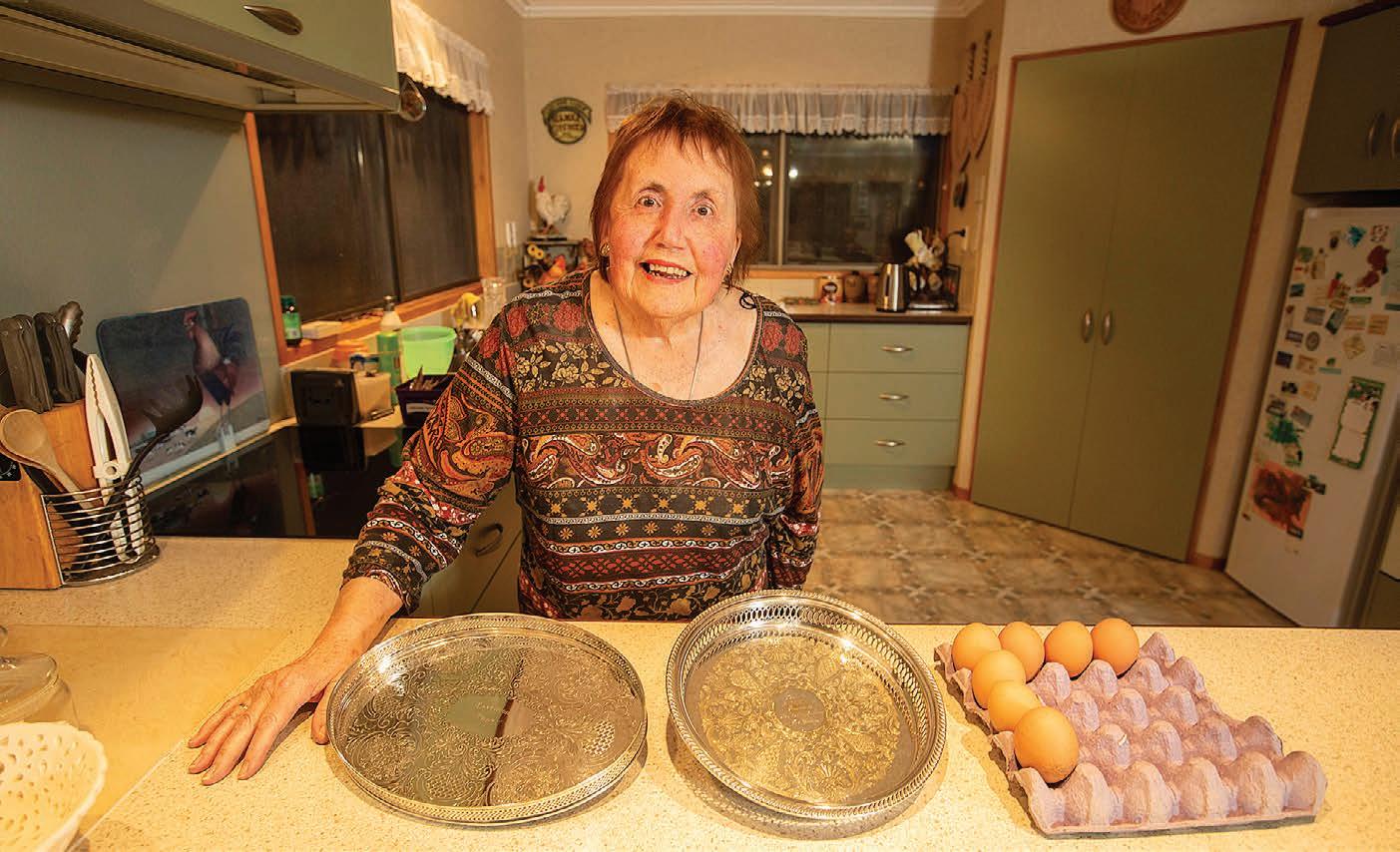
I liked to go out on the farm but if the haymakers were working, I had to do the scones and pikelets before I could go.
Lesley Berry Elstow
grandmother of 13 and greatgrandmother of 11 is too modest to describe herself as a trailblazer, for many years she was the only woman to attend local DairyNZ discussion groups, with her presence inspiring others to join too.
“I was happy to see more women join the groups and become involved,” she said.
Berry, now 84, moved to the area with husband Keith in 1971 after buying the 49 hectare farm. Prior to that they’d been sharemilkers in Wardville for 10 years. Despite being a busy mum, she’d get up early to pitch in milking the herd
of 120 Jersey crosses, which grew to over 150.
“I was fortunate that the cow shed was always close to the house,” she said.
Often she’d have also been up burning the midnight oil for another of her passions, baking and cake decorating, for which she forged a name as a serial trophy winner at the AP&H shows in the region.
“I’ve got over 1000 tickets for entries to AP&H shows,” she said.
“I believed that if you had a talent you used it! I entered lots of them – Matamata, Putāruru, Paeroa and the Waikato Winter Show. The toughest one for competition was Te Aroha because it had the greatest number of entries.”
She won the prized Eastwood Tray award at Te Aroha for her baking 32 times in a row. After the first eight years the organisers presented her with the tray to keep and bought a replacement for the
following year. She went on to win that so many times she was granted permission to keep that as well.
After a stroke in 2015 left her unable to bake due to an inability to stand for long periods, Berry donated a new tray to be presented going forward. It’s called The Lesley Berry Tray, and is much coveted.
“So now they compete for my tray, and since I was no longer able to bake, I became a judge instead.”
She retired from that role last year but is still a committee member helping to organise the show – a position she’s proud to have held for 54 years and for which she was presented the Life Member award.
Berry’s passion for baking started at an early age.
“I was brought up on a farm and left school at 14 due to ill health. I liked to go out on the farm but if the haymakers were working, I had to do the scones and pikelets
before I could go. It was also my job to cook the dinner every night – and we had to have pudding too, so I did a lot of cooking as I grew up.”
She started milking regularly from the age of 15 on her parents’ farm and these days loves seeing her great-grandchildren taking their own calves to Calf Club.
She still attends the monthly meetings of Rural Women New Zealand, of which she’s served as president a number of times and repeatedly been presented the special vase for the highest attendance. She’s also the delegate from her branch to the provincial meetings.
“Most of my voluntary work was through the school’s PTA and I was in demand for school camps as the cook,” she laughs.
“I used to make big apple sponge puddings and a great big meat dish, and I enjoyed the camps. With six kids I had quite a lot to go to!”



BERRY GOOD: Rural New Zealand has its very own version of British baking supremo
Mary Berry in local baking champion
Lesley Berry, a retired Elstow dairy farmer and Rural Women NZ stalwart.
Photo: Tim Cuff
Cream rises at the research centre on dairy’s frontier

Neal Wallace TECHNOLOGY Dairy
APART from the scale of it, the matrix of pipework and stainless steel mimics a normal dairy processing plant.
The difference between your everyday plant and the Fonterra Research and Development Centre in Palmerston North is in the subtle – and to the untrained eye hard to discern – changes to that piping configuration, as well as what you don’t see.
The centre is Fonterra’s frontline for the development of new products and processes.
In the fully operational dairy processing plant and its neighbouring laboratories and kitchens, 350 scientists, technicians and support staff seek to add to the list of recently developed products, such as six-hour-maturing mozza-
rella cheese and UHT cream.
Pierre Venter, the centre’s director of research and development, said the centre has for nearly a century been at the cutting edge of dairy product development.
Developments include spreadable butter to combat the challenge from margarine, and using whey protein.
Some of that development has been in partnership. It operates 60 such collaborations globally, and has more than 500 global patents registered.
Venter said its role is to constantly search for new products and solutions targeting different levels of the market. UHT cream has been a recent innovation.
It is aimed at the expanding mid-tier markets, which requires a certain functionality and price point.
Andy Smith, the centre’s manufacturing manager, said
the challenge is to ensure new processes do not affect the behaviour and functionality of protein.
While the actual processes and products being worked on are confidential, he said, the world seeks protein that assists with active and healthy lifestyles especially for older people.
The world’s population is aging and people want protein at the right level and in the right formulation to enhance their health.
A liquid drink containing 16% protein, one of the highest protein levels on the market, is targeting that market.
The UHT cream, which is called Anchor Easy Bake, is one of the centre’s latest innovations and in-house chef Simon Davey, who tests the various new products in the kitchen, said it behaves exactly like regular whipping cream.
Sarah Glyn-Jones,
the research

and development manager for advanced nutrition, said with a nine-month shelf life, Anchor Easy Bake means Fonterra can now reach markets that may have supply chain issues that would
Time right to talk about dairy expansion

THE time is right to have a renewed conversation regarding dairy expansion, says DairyNZ general manager for farm solutions and policy David Burger.
The conversation around dairy expansion has started in some regions, he told the DairyNZ Farmers Forum in Hamilton, referring to Farmers Weekly reporting on a new wave of dairy expansions in Canterbury.
While it is the right time to have that conversation, Burger warned it has to be done with care.
“This is also a unique opportunity for the sector to lead with solutions and the science to try to get ahead of this and stay
ahead of these environmental challenges, which we know we need to continue to solve across many of our catchments well into the future.
“Growth has to be within environmental limits. We can’t open the taps and not be conscious of the environmental impact that it will have.
“We can’t afford to go back on the 20 years of progress we have made in this sector, clawing back our social licence to the point where we are making really good progress.”
The wave of expansions are due to the removal of intensification rules.
As long as the landowner can demonstrate that their future footprint is the same or less than what the land is currently,
potentially there is room for expansion, he said.
Burger said the narrative around constraints and declines in the dairy industry has shifted over the past few years to one that is a lot more positive around what dairy can offer the country and help drive economic growth.
He pushed for a catchment approach to resolving water quality issues.
The dairy sector has been under the public magnifying glass over the past 20 years and the debate over water quality has really polarised farmers and communities and cost the industry millions in litigation.
“It’s also created significant uncertainty for you as farmers and for the sector as a whole.”
On top of that are rule changes
around freshwater management, with the industry waiting for a new National Policy Statement on freshwater, due out for consultation soon.
Freshwater policies have to be more enduring, he said.
“We can’t have a ping-pong of policies and we can’t have a whiplash either.”
While there is a perception that the current government is taking policies away, they are in fact simply being recast, which is a concern.
“We don’t know what this is going to mean next year or the years later.
“The last thing we want is more regulations coming and more regulations changing. We need an enduring solution and we need a more balanced approach.”
affect products with a shorter shelf life.
Anchor Easy Bake was developed in response to customers seeking a highly concentrated protein for baking.
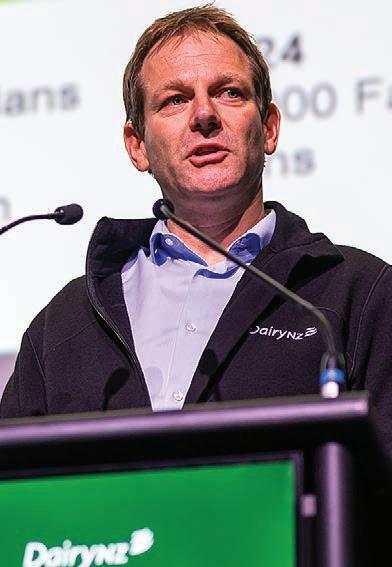
PROCEED WITH CAUTION: DairyNZ general manager for farm solutions and policy David Burger says discussions around possible dairy expansion have to be done carefully to avoid undoing 20 years of progress.
YOU’RE NOT JUST FEEDING CALVES YOU’RE BUILDING YOUR FUTURE HERD
Ancalf ™ is a calf rearing formula backed by research. Made primarily from whole milk powder it curds like raw whole milk, digests efficiently, and drives strong early growth
Easy to mix. Easy to feed. Keeps your vat milk earning where it should Start with future performance in mind. Start them on Ancalf TM today.




TESTER: Simon Davey, the in-house chef at the Fonterra Research and Development Centre, with baked products made from Anchor Easy Bake, a newly developed UHT cream.
Gerald Piddock NEWS Dairy
Kiwi dairy thrives in tropical S America

Hugh Stringleman NEWS Dairy
BRAZIL’S dairy industry is changing rapidly and a small group of New Zealand-owned farms are highlighting an intensive pastoral dairying approach to expansion.
The Douglas family from Northland, along with several investors, has been 12 years in Brazil and now runs over 2000 Kiwicross cows on two farms in southwestern Bahia State.
They are farming alongside a group of other Kiwi businesses, dairy farms and processing facilities, founded by Simon Wallace and his father David from Waikato.
Murray and Marcelle Douglas’s son Rodger heads the family’s Agropecuaria Sete Copas business with centre pivot irrigated farms with a total of 260 hectares under irrigation.
They are at 1000m altitude with cooling winds, water for irrigation and misting in the covered feed pads to help the cows cope
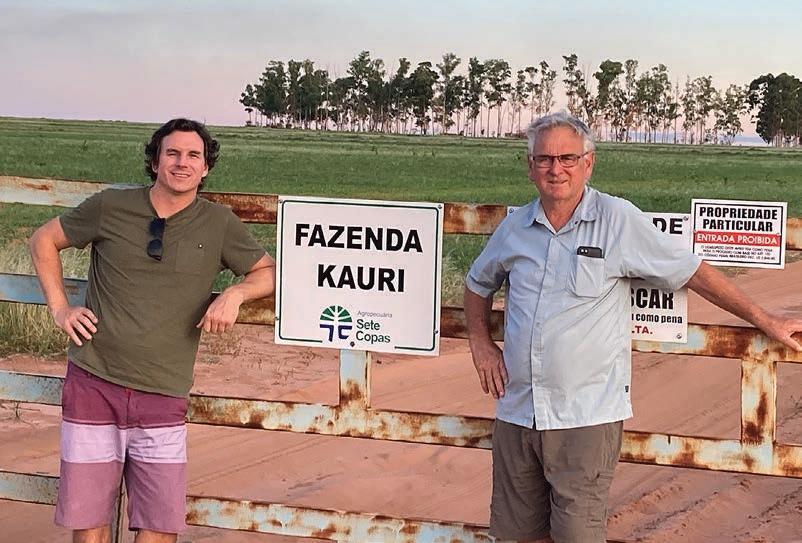
with the tropical heat and high sunshine hours.
Solar panels have been installed over the yards to power the farm dairies and provide shading for the cows.
Water is from a large aquifer about 40m down in the São Francisco basin.
Three wells provide water for
irrigation of pastures capable of 45 tonnes dry matter per hectare annually, twice to three times what can be grown in New Zealand.
Hence cow stocking rates of eight to 10 cows/ha, three times that of here, all behind single-wire electric fencing.
Milk production is around 5000kg/ha MS, or 500kg/cow,
Big herds get bigger in Brazil

Hugh Stringleman NEWS Dairy
LARGE dairy farms in Brazil are growing milk production at a double-digit rate annually and the category has quadrupled production over the past two decades.
An industry report says the rate of growth for the top 100 Brazilian dairy farms was 13% in 2024 –400% greater than in 2001.
The average daily output per farm was 32,555 litres (approximately 2700kg milksolids) and the top 10 producers were up over 74,000 litres.
The leading producer is Fazenda Colorado, with approximately
3 million kg MS during the year and a daily average approaching 100,000 litres.
These larger producers favour confined systems with free stalls and compost barns, the report says.
The majority run HolsteinFriesians (82%) and there are some herds with Girolando and Jersolando-Kiwicross breeding.
Average daily milk production is 34.8 litres a cow within the top 100 producers surveyed by MilkPoint, now collaborating with the Brazilian Dairy Producers Association.
The growth of the top 100 outpaces that of the Brazilian dairy industry, showing that they
have been key players in the modernisation and expansion of the industry.
“The gap may be linked to factors such as technological advancements, genetic improvement, professional management, and greater production efficiency – all of which have helped consolidate large-scale farms as benchmarks.
“Due to their production volume, quality and consistency, these producers often achieve price premiums.”
The average surveyed cost of production was 2.25 real per litre (NZ66c) and the premium price received from processors was 2.82 real (83c).
with 60% from pasture and the remainder from supplementary energy feed.
Pick up by relay of two tankers from a Piracanjuba processing plant 560km away is dedicated to one of the two Douglas farms and a neighbour when 34,000 litres are in the vat ready to fill the tanker.
The other farm supplies
Leitissimo, a processing plant on the next farm.
Milk is supplied and paid for on a monthly basis, in full at the end of the month following collection.
Milk prices vary considerably but the larger producers get paid more per litre.
Murray Douglas is impressed by the pace of development of dairying in Brazil and along with equity partners is keen to stay for another decade or more.
Until the recent surge in professionalisation, small family farms of 20 to 40 cows had low investment, no technology and poor quality. That is now changing quickly.
Confinement helps combat cattle pests and diseases, along with a move to North American genetics
and maize silage feeding.
“Sometimes NZ dairy farmers and leaders need reminding that our style of dairying is only applicable in limited places around the world.
“The genetic gains in other systems for cows and feed will challenge us as lower cost producers over time.
“Our black cow genetics for grazing are likely making slower genetic progress than those of confined cows given the larger population to select from in North America, Europe and now South America.”
Agricultural loans are difficult to secure in Brazil, so much of the dairy industry development has to be done out of profit-saving.
Primary sector development in roading and electricity supply has been driven by international demand for broadacre cropping, which is significantly improving infrastructure.
Brazil is not yet self-sufficient in dairy products. It imports tariff free from neighbouring countries or with 25% tariff from further afield.
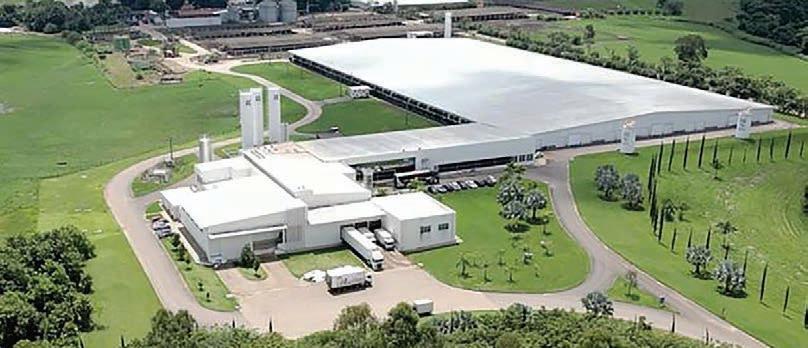
The top 100 farms produce about 5% of Brazil’s inspected milk supply, which comes from over 200,000 farms. But the total number of farms has fallen from over 600,000 in the past decade.
Over 10% the consolidated number of dairy farms now use
Set your farm up for a successful season with support from Farm Source. We’ve got proven products, the latest insights and practical advice to help your farming business thrive
confinement systems and they account for half of the national supply. Twenty-two of the top 100 operate as a group called Unium supplying four co-operatively owned processors, and 12 individual farms have their own processing plants.
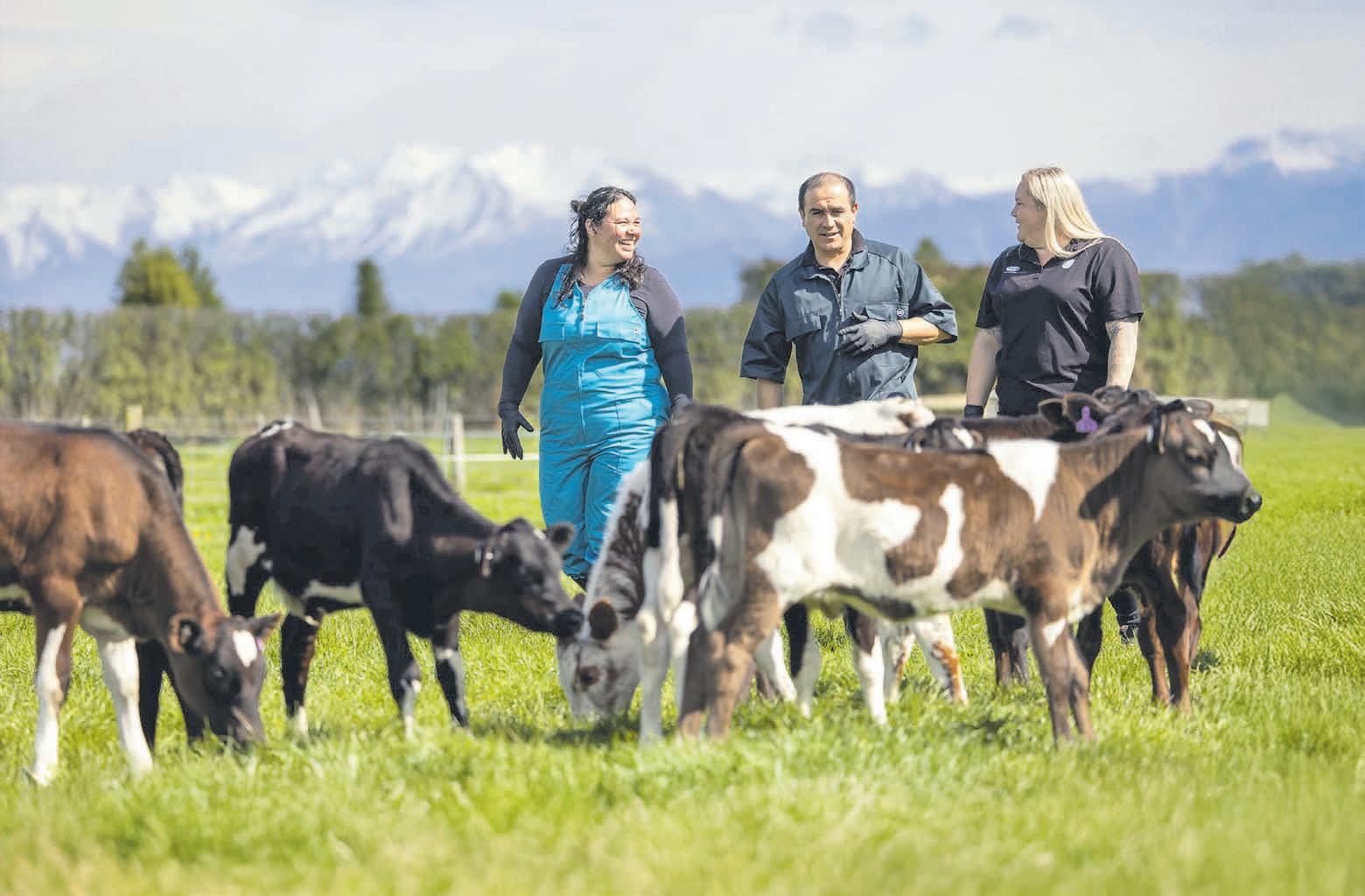
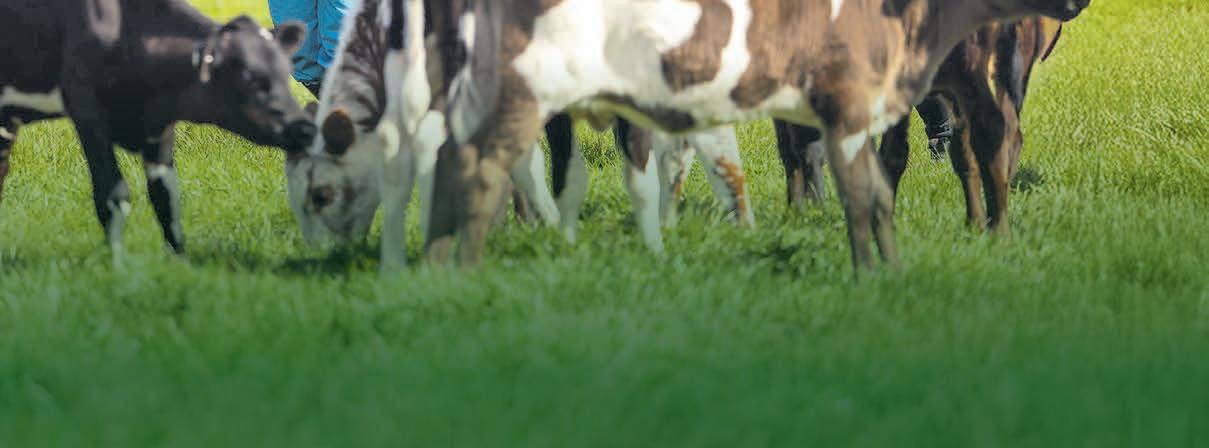
DEVELOPING: The rapidly developing Brazilian dairy industry has featured Rodger and Murray Douglas, their family and investors from New Zealand.
TOP: Brazil’s leading milk producer is Fazenda Colorado, with approximately 3 million kg MS during the year and a daily average approaching 100,000 litres.

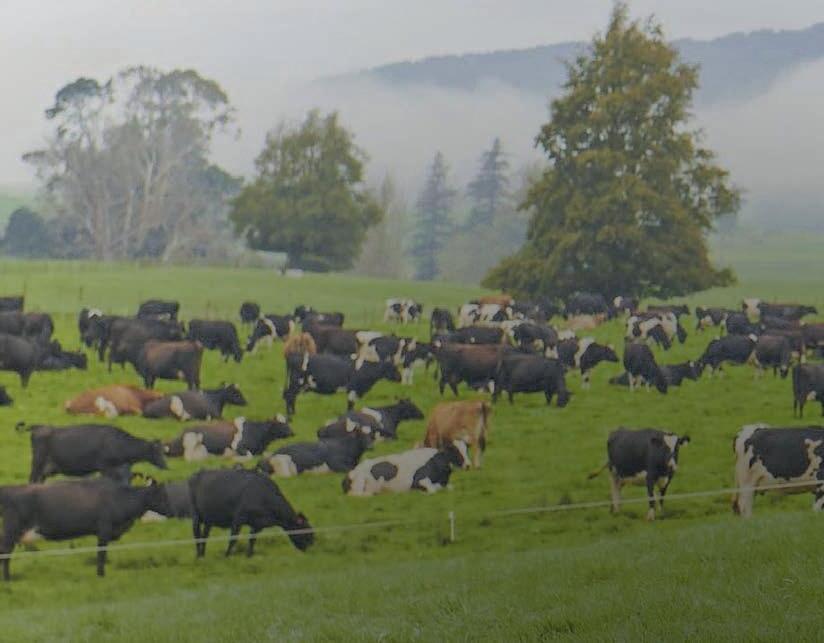











dence growing, but challenges remain



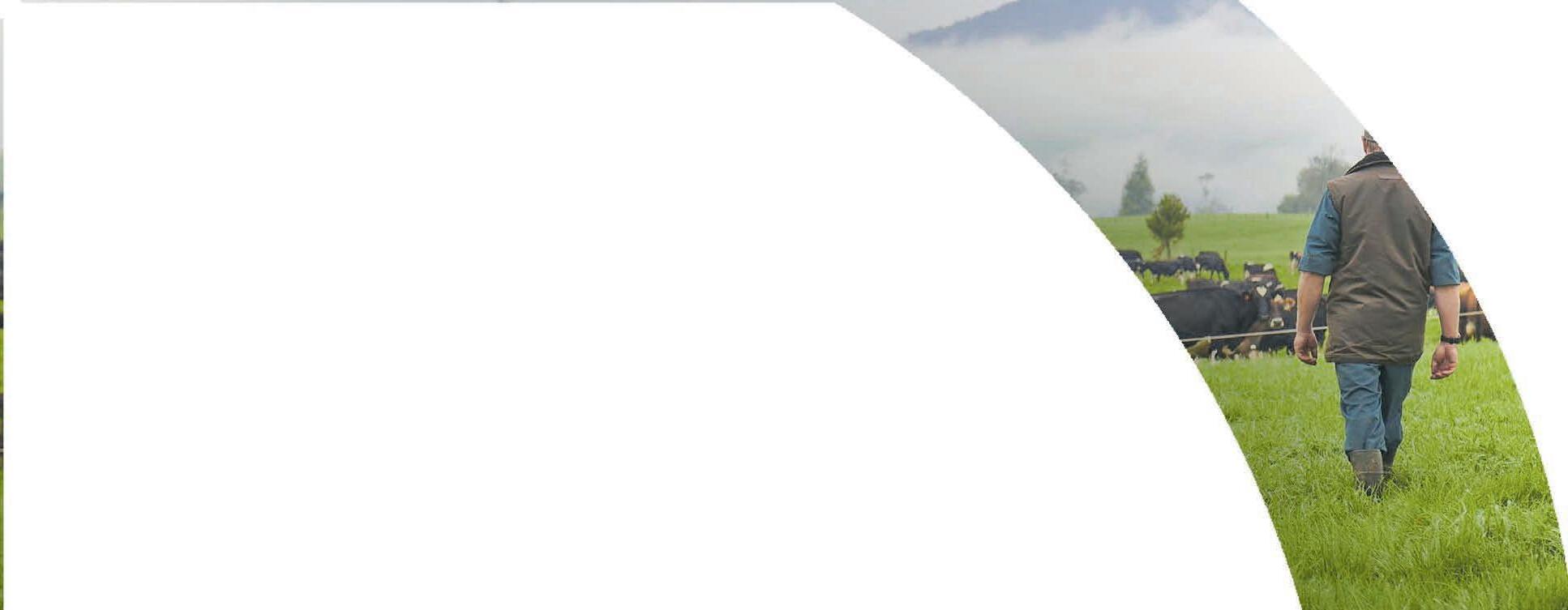



Farmer s play a pivotal role in our countr y and communities, helping to power New Zealand’s economy ever y day. Yet , like many Kiwis, they ’ve faced signifi cant challenges in recent year s .
From risin on-farm costs
g and inflation to ex treme weather events and evolving regulations, dair y farmer s have had a lot to contend with while continuing to care for their animal s, protec t the environment, and suppor t their local communities
D espite these pressures, the recent D air yNZ View from the Cowshed repor t has shown that our New Zealand dair y farmer s are feeling proud and increasingly positive about the future
The nationwide sur vey of dair y farmer s revealed that nearly 85 percent are proud to work in the se c tor, and over threequar ter s believe the outlook for dair ying will remain stable or improve over the nex t three year s This signal s a welcome lif t in confidence, even as challenges remain
What shines through clearly in the repor t is the deep pride
farmer s have in their work and their strong commitment to animal welfare, environmental stewardship, and their communities
At the same time, the repor t highlights key concerns that continue to weigh on farmer s
Rising expenses par ticularly for feed and fer tiliser were
identified as the top challenge at the farm level, closely followed by the impac t of regulator y compliance At a sec tor level, the need for greater long-term cer taint y around regulation stood out as the most pressing issue, with many farmer s wanting clearer, more prac tical and enduring rules
We hear those concerns That ’ s why D air yNZ is ac tively working across the sec tor and with both local and central government to advocate for prac tical, evidence -based policies that deliver lasting value for farmer s and their communities
Environmental and climaterelated challenges al so remain a top priorit y Farmer s are seeking bet ter access to tool s that will help reduce their environmental footprint and are asking for fit-for-purpose regulations that suppor t real progress on-farm
To help meet these challenges, D air yNZ invests in critical areas to suppor t profitabilit y and sustainabilit y such as animal care, pasture resilience, genetic gain, water qualit y, and robust biosecurit y
A s we navigate these complex challenges, collaboration and for ward planning will be more im or tant than ever D air NZ
p y is commit ted to working alongside farmer s and industr y par tner s to tackle these issues
head- on and co - create a thriving future for New Zeala dair ying
There is a lot to balance But with the right science, suppor and relationships grounde in evidence and trust we believe the future is bright for the sec tor, for farmer s, for rur communities, and for all New Zealander s who benefit from
their hard work
From






Wool carpet decision a major win for farmers
Kāinga Ora’s decision to use wool carpet in its social housing is a massive win for wool growers but won’t be enough to save the industry on its own, Federated Farmers says.
“Our wool industry is in major freefall, and this move from Kāinga Ora is the parachute we desperately need,” Federated Farmers meat and wool chair Toby Williams says.
“This will slow our drop a bit but, in reality, what we really need now is an updraft to lift wool back up into being the number-one fibre globally.
“It’s certainly a massive step in the right direction, though, and we’re very pleased with the announcement yesterday.”
Williams says Kāinga Ora is New Zealand’s largest landlord, so its contract has the capability to soak up large volumes of wool, which in turn will help drive up prices.
As well as transitioning to using wool carpet in its new social housing, Kāinga Ora will also use wool carpet in existing homes if the whole house needs recarpeting, such as when renovating older properties.
The decision comes after a recent Request for Proposal (RFP) inviting both wool and nylon carpet providers to tender for the supply of carpet and underlay in its properties.
“Last year Federated Farmers slammed Kāinga Ora for initially deciding to categorically rule out using woollen carpets in its social housing,” Williams says.
“Our homegrown wool is an incredible product and it beggared belief that Kāinga Ora weren’t even giving wool the chance to compete against nylon products.
“That was a total slap in the face for struggling Kiwi sheep farmers and rural communities, and we made it very clear it was a ridiculous, shortsighted decision.
“It’s great they saw sense and allowed wool to have a crack – and even better that a wool provider has won the contract.
Our wool industry is in major freefall, and this move from Kāinga Ora is the parachute we desperately need.
Toby Williams Federated Farmers meat and wool chair
“It just goes to show that when wool is given a fair chance, it comes out on top as a natural, sustainable and renewable alternative to cheap and nasty plastic carpet.”
Williams says the decision is the result of a massive collaborative effort across the entire wool industry.
“Federated Farmers and other groups have been working really hard for years to get the Government engaged with, and listening to, wool growers.
“We recently launched our SOS: Save Our Sheep campaign to hammer home the message that we need urgent action if we’re to keep our sheep and wool industry from collapsing entirely.
“Farmers are sick of woolly ideas –they want solid actions like this.
“It shows that strong leadership from the Government can be a factor in restoring confidence to our embattled wool industry.”
Williams says the housing agency’s decision is also a big step forward for environmental sustainability.
“Using cheap, nasty plastic carpets might save a few bucks in the shortterm, but at what longer-term cost to the environment?
“If Kāinga Ora had picked a fossil fuel-derived synthetic carpet over a sustainable New Zealand-grown woollen product, just because it’s cheaper, it would have been a disaster.”
Williams says he’s also really pleased that high-quality, sustainable Kiwi wool will be in the homes of some of New Zealand’s most vulnerable tenants.
Speaking in the Rural Advocacy Hub at Fieldays, Economic Growth Minister Nicola Willis said the result was a clear win for organisations like Federated Farmers.
She acknowledged the Federated Farmers meat and wool council for getting “rarked up big time” last year when Kāinga Ora ran its tender for nylon-only carpets.

“You made your voices heard and, as a consequence, Kāinga Ora realised the wrongs of their ways and stopped that tender and restarted it, allowing wool to apply.
“And I am pleased to announce today that the result of the reopening of the tender was that – no surprise to me or you – wool manufacturers turned up with a firstclass offer.
“When they were given that even playing field, they were able to win and they have won that tender.”


In March, the Government issued a directive to 130 Government agencies requiring them to purchase woollen products for building construction and refurbishment, wherever practical and appropriate.
“That’s great news for our wool industry. It’s a common-sense policy that we are proud to have put in place.”
Kāinga Ora will transition to using wool carpet in its new homes from 1 July 2025, when the supply arrangements come into effect.

BIG NUMBERS: Federated Farmers meat and wool chair Toby Williams says Kāinga Ora is New Zealand’s largest landlord, so its contract has the capability to soak up large volumes of wool, which in turn will help drive up prices.
On-farm solar boost a welcome move
Government moves to help farmers more easily access independent solar power and battery technology advice and finance are a positive step, Federated Farmers energy spokesperson Mark Hooper says.
Energy Minister Simon Watts announced a package of measures designed to boost use of solar power on New Zealand’s farms at the Federated Farmers Advocacy Hub at Fieldays.
“Early modelling tells us that if 30% of Kiwi farms installed larger solar power systems – of the size we see on some farms already – they could generate as much as 10% of New Zealand’s current electricity demand,” Minister Watts said.
Hooper agrees that sort of uptake would be a massive win for security of energy supply and self-sufficiency on farm – including when rural areas are hit by grid outages.
“The roofs of wool and dairy sheds can be a great platform for solar

panels. Small- and medium-scale installations can provide a great boost for farm businesses.
“Electricity costs are not a major component of most farms’ expenses,
unless they have irrigation, but as solar panel and battery technology improves and costs fall, farmer interest in this option will only increase.
Farmers drowning in data demands
Frustrated by mounting costs and repeated surveys, farmers say it’s time the Government made fixing New Zealand’s broken environmental data system a priority.
“The way environmental information is gathered and held right now is ridiculous,” Federated Farmers vice president Colin Hurst says.
“You’ve got different government agencies, councils, and industry bodies all asking farmers for variations of the same information –but they don’t talk to each other.
“So, farmers end up repeating the same work and footing the bill for it.”
His comments come as Simon Upton, Parliamentary Commissioner for the Environment, urges the Government to create a joined-up system for sharing environmental data.
In a recent letter to five Ministers, Upton argues they begin work
on a federated environmental information system, which would link existing data from multiple sources so it can be easily shared and used.
“We 100% support the Commissioner and we hear from our members all the time about this,” Hurst says.
“They’re paying consultants or taking time off the farm to do monitoring, mapping, or soil tests for one purpose – and then a few months later they’re asked to do the same thing again for a different agency or rule.
“That’s just not a smart way to run things.”
One dairy farmer told Federated Farmers he spends around $20,000 to $30,000 per year on providing data.
This includes the cost of soil testing, farm consultants,
environmental consultants, water monitoring, and his own time spent on it all.
Hurst says Federated Farmers supports the idea of redesigning regulatory systems so data can be shared more easily – with the farmer’s permission.
“If a farmer provides data for one regulatory requirement, why shouldn’t it be available for another use, so long as privacy and consent are respected?
“That would cut down not just on admin but also reduce the need for extra auditing and the cost that comes with it.”
Hurst points to a National Party policy commitment to introduce a ‘no duplication’ rule – a principle Federated Farmers supports.
“This is part of a wider issue. Too often, legislation gets passed without thinking through how
“Installing solar systems for self-sufficiency across our farms is certainly preferable to productive farmland being swallowed up, or compromised, by enormous solar farms.”
The Government package includes real life energy data for different types of farms, feasibility studies and technology demonstrations, and a partnership with the Centre for Sustainable Finance to accelerate access to finance, making it quicker, simpler and easier.
Hooper says the value of independent advice, and the chance to see and question how solar and battery technologies are already working on farms, shouldn’t be over-estimated.
“For some farmers thinking about the solar option, the only contact they currently have is with the company trying to sell them something.”
Installing solar systems for self-sufficiency across our farms is certainly preferable to productive farmland being swallowed up, or compromised, by enormous solar farms.
Mark Hooper Federated Farmers energy spokesperson
Support.

An important part of the package is access to advice on progressing consents and applications with local and regional bodies and electricity distribution businesses.
“Being able to supply excess power generated from on-farm solar back into the local grid, and to earn revenue, is a factor that could well get more farm owners across the line.
“Any help from the Government to ease those negotiations with electricity distribution businesses would be very welcome,” Hooper says.
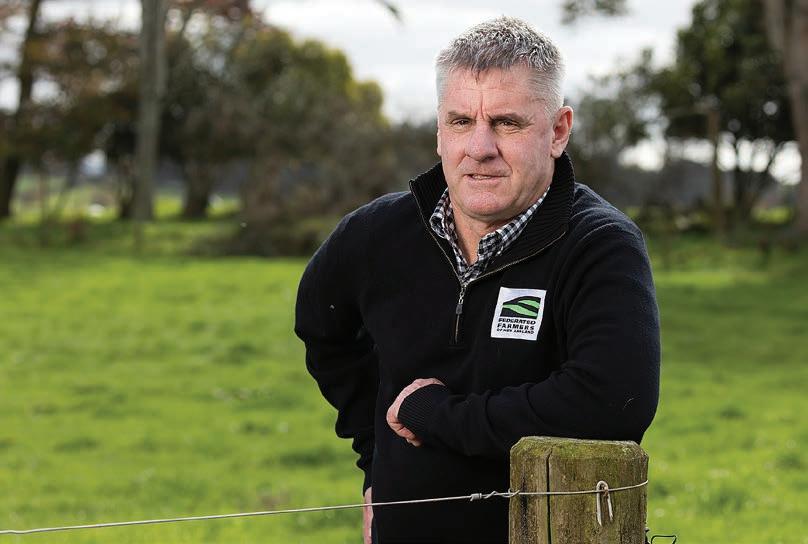
CUTTING DUPLICATION: Colin Hurst says smarter data-sharing between agencies –with farmers’ consent – could reduce admin, avoid extra audits, and bring down costs.
workable it actually is on the ground.
“If you’re going to regulate, at least make sure the systems are aligned and manageable – and that it leads to real, measurable improvements.
“At the end of the day, we want farmers focused on farming – not buried in paperwork or trying to navigate a maze of disconnected regulatory systems.”

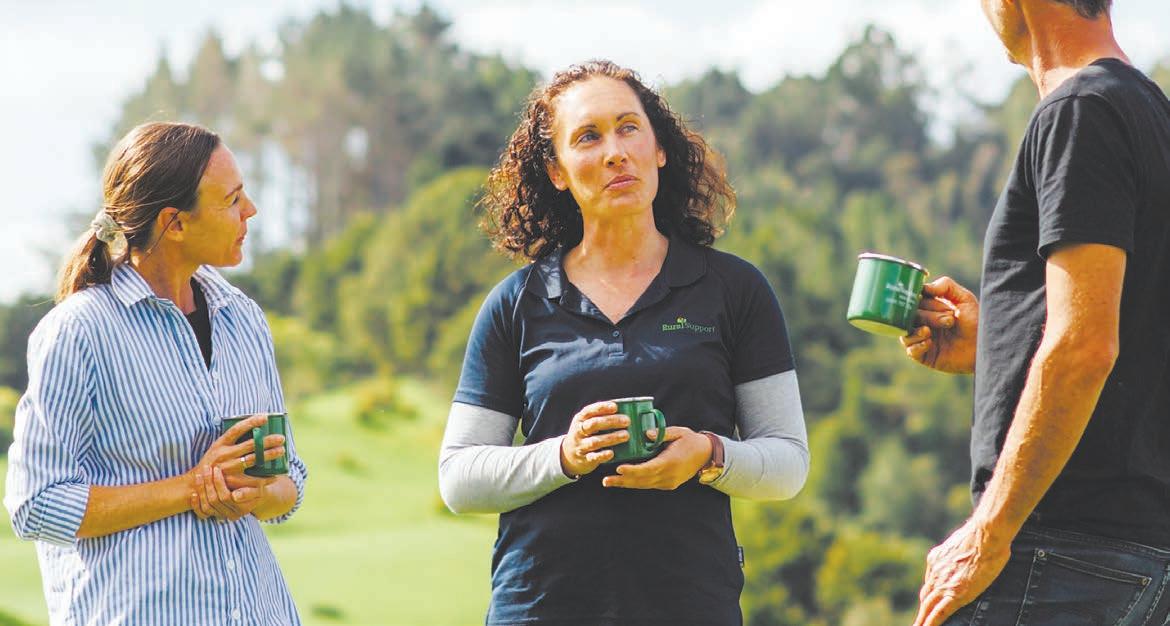
ENERGY INSIGHTS: Mark Hooper says farmers exploring solar need more than a sales pitch – they need independent advice and real-world examples to make informed decisions.
Feds push wellbeing fund across the line
A$4 million Rural Wellbeing Fund announced at the Federated Farmers Advocacy Hub at Fieldays is a great win for rural advocacy groups, Wayne Langford says.
The Federated Farmers president has led the way in pushing the Government to deliver increased investment into rural mental health –an issue close to his heart.
“It’s hugely rewarding to get this across the line. I’m absolutely stoked the Government are making such a meaningful investment in the mental health of our rural communities.
“Federated Farmers have been involved every step of the way – but we haven’t been alone. The likes of DairyNZ, Beef + Lamb, Young Farmers and Rural Women have been right there with us.”
Langford says the extra $4 million from both Ministers Todd McClay and Matt Doocey to expand the
investment in community-based wellbeing initiatives may be matched by industry partners, for a total pool of $8 million.
“The investment is significant in terms of the dollar amount, but the real value will come in having a much more coordinated approach that brings all the energy and focus into one place.
I’m absolutely stoked the Government are making such a meaningful investment in the mental health of our rural communities.
Wayne
Langford Federated Farmers president
“In practice, we’re going to see the sector coming together to ensure we’re investing in the initiatives that bring the best results and make a
real difference in people’s lives.
“That will cut out a whole heap of waste, remove all the duplication, and make sure every dollar invested in rural mental health is working as hard as it possibly can.”
Langford says, as a country, we’ve moved past the stage of simply acknowledging and building awareness of the importance of strong mental health.
“It’s great that we’ve come such a long way with rural mental health awareness, but now it’s time for action.
“Supporting groups like Surfing for Farmers, Farmstrong, FirstMate and NZ Young Farmers, who are doing the mahi on the ground, is so important.”
A five-member panel with representation from the primary sector will be established to assess project applications.
Projects must demonstrate strong local delivery, provide clear benefits
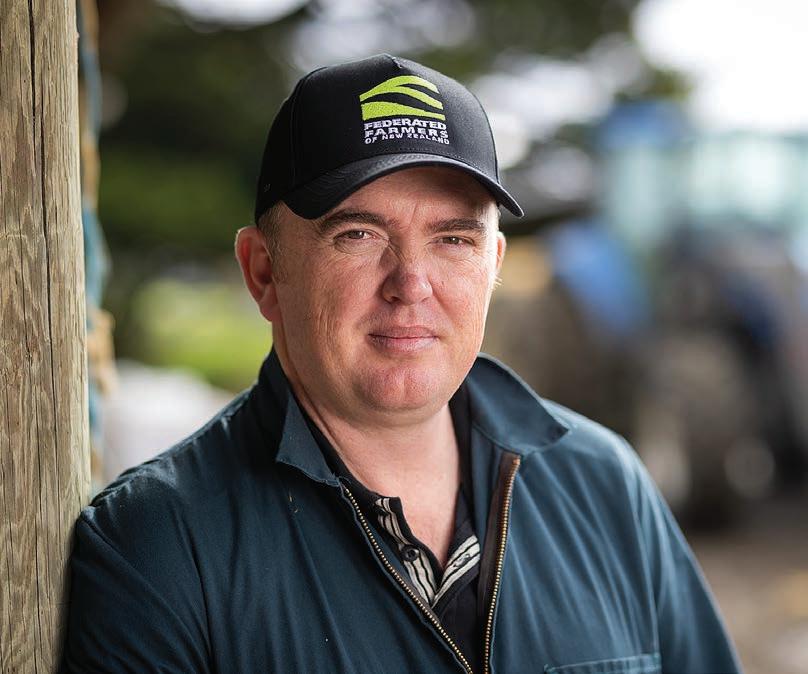
to rural people, and ability to attract co-investment from industry and sector partners.
In announcing the funding, Agriculture and Forestry Minister Todd McClay paid particular tribute to advocacy by Langford, who he described as a long-time champion
of rural wellbeing and mental health.
However, Langford says a strength of the initiative is that all the primary industry groups are united in the desire for action.
“With funding in place, we can now get some changes happening and make a real difference.”
Feds back launch of new fertiliser spreading standard
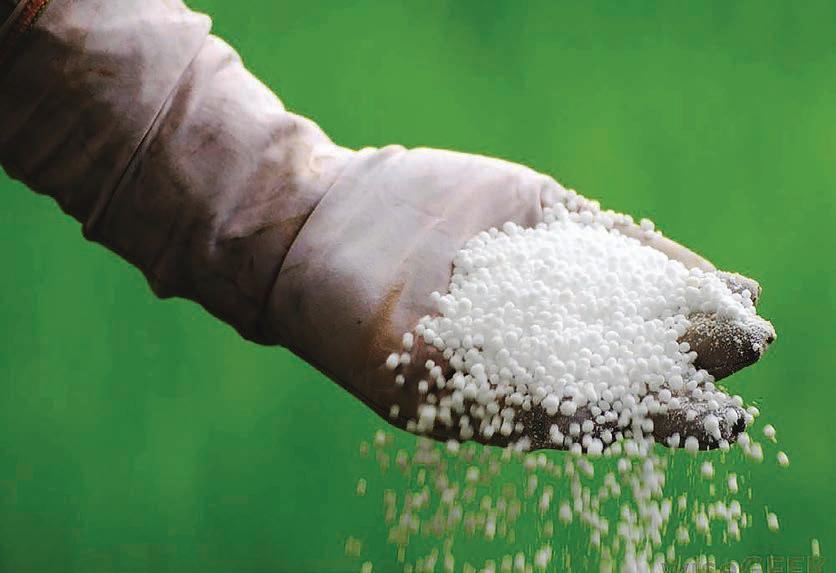
Federated Farmers says the launch of a new fertiliser spreading standard is a key step in efforts to improve nutrient management across New Zealand farms.
“Fertiliser is a significantly large spend for farmers,” Federated farmers board member Colin Hurst says.
“Having confidence that it’s being applied accurately and responsibly is essential – for productivity, profitability and for meeting environmental expectations.
“The launch of a modernised Spreadmark Assurance Programme at Fieldays is a milestone moment and we fully support it.”
Spreadmark, founded by Groundspread NZ and now managed by the Fertiliser Quality Council, is the national fertiliser

spreading assurance programme.
The new Spreadmark Code introduces updated standards that will help farmers and contractors lift the bar even further when it comes to nutrient precision and environmental care.
Hurst says Federated Farmers was proud to host the official launch at its Rural Advocacy Hub at Fieldays.
“We’ve had a long-standing connection with the Fertiliser Quality Council, which was formed by Federated Farmers in 1992.
“It’s a partnership rooted in practical, farmer-driven solutions –so it’s fitting that we helped launch this next chapter at the heart of New Zealand’s farming community.
“It was also great to have National Party MP Barbara Kuriger there to launch the Code.”
Hurst says assurance programmes like Spreadmark will play an important role as new regulatory requirements come into effect.
“As farm planning and environmental standards become more embedded across the sector, programmes like Spreadmark will be essential.
“They’re not just tools for compliance – they’re tools for good farming.
“We see this modernised Spreadmark Programme as a strong example of how the sector can lead from the front – delivering better outcomes for farmers, the environment, and the communities they support.
“We’re proud to be part of its continued evolution and success.”




SMARTER SUPPORT: A more coordinated rural mental health approach will ensure every dollar delivers real impact for rural communities, Wayne Langford says.
EXACT: The new Spreadmark Code introduces updated standards that will help farmers and contractors lift the bar even further when it comes to nutrient precision and environmental care.
Water price harmonisation could end up costing farmers more
While many Kiwis are welcoming moves to improve councils’ three waters services, some farmers are worried about a fishhook.
“For those farmers on councilowned or operated rural water schemes, the idea of price averaging or harmonisation is a concern,”
Federated Farmers local government spokesperson Sandra Faulkner says. “It could see farmers being asked to pay two, three or more times higher costs per cubic metre of water – including for stock water.”
For example, in Taranaki, city and town properties currently pay a flat charge for water services, with the water cost for every 1000 litres of water used landing somewhere between $2.50 and $3.50.
Rural properties on the Waimate West/Inaha scheme pay $1.16 per 1000 litres.
It’s proposed that New Plymouth, Stratford and South Taranaki councils form a new regional water councilcontrolled organisation (CCO).
If that comes about, it’s estimated with harmonisation and greater investment in pipes, reservoirs and treatment plants, over time every property owner will pay about $3.50/1000l.
EQUITY: An attraction of water service CCOs is that they’ll be able to borrow up to 500% of their operating revenues, and spread costs of expensive infrastructure renewal over a longer period.
“There’s a huge question around affordability for farmers, when they’re using large volumes of water for stock,” Faulkner says.
The previous Government’s proposed reform of three waters services (drinking water, stormwater, wastewater) involved setting up 10 new ‘mega’ water entities, with co-governance. It was highly controversial.
Price harmonisation
could see farmers being asked to pay two, three or more times higher costs per cubic metre of water – including for stock water.
Sandra Faulkner Federated farmers local government spokesperson
The current Government’s answer to lifting drinking water treatment standards and dealing with serious infrastructure backlogs is Local Water Done Well.
By 3 September, every council must submit a draft plan outlining how it will meet new standards for drinking water and wastewater in a financially viable manner.

That’s seen sometimes heated debates as councillors choose between keeping three waters services in-house, setting up a stand-alone council-controlled organisation (CCO) or going in with neighbouring councils in a joint CCO.
An attraction of water service CCOs is that they’ll be able to borrow up to 500% of their operating revenues, and spread costs of expensive infrastructure renewal over a longer period.
“Federated Farmers applauded the Government’s announcement last year that rural water schemes supplying fewer than 25 people won’t have to comply with onerous new rules,” Faulkner says.
“That was a practical and costeffective decision enabling schemes that have supplied rural families with safe drinking water for generations to continue, with quality assurance programmes already in place.”
Most Federated Farmers members are also outside Local Water Done Well reforms in that they’re supplied by private drinking water schemes, have on-site wastewater arrangements, and are not on urban stormwater networks.
“Nevertheless, as ratepayers, they’re very interested in ensuring their council’s three waters systems are efficient, successful, and do not rely in any way on funding from general rates,” Faulkner says.
Feds is also going to bat for the rights of rural families and businesses on mixed private/council operated or council-alone operated rural water schemes.
“The big concern in places such as South Taranaki, Whakatāne and Clutha is that in the pursuit of billing simplicity, or what’s seen as fairness, new CCOs will over time ‘harmonise’ charges across all users.”
In Whakatāne, former Federated Farmers dairy chair John Howard is
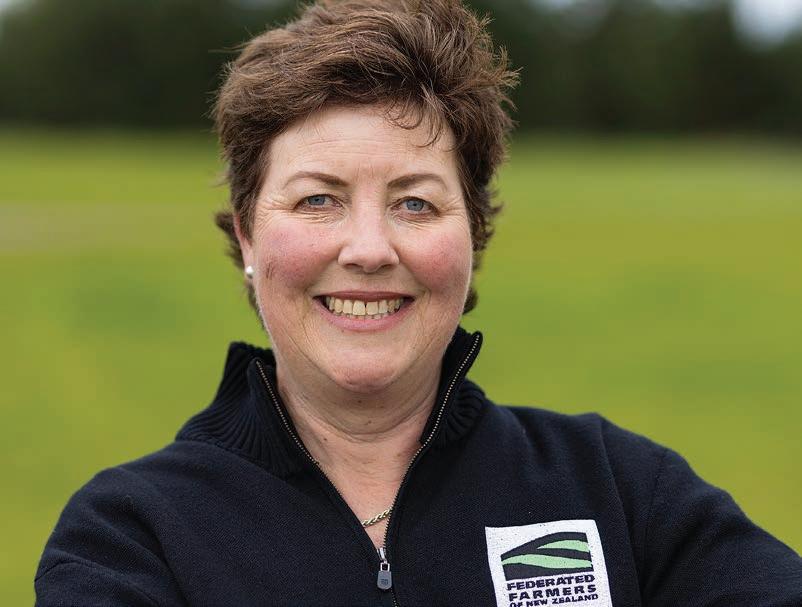
INTEREST: Sandra Faulkner says that while most farmers aren’t council three waters customers, they’re very interested in ensuring their council’s water systems are efficient, successful, and do not rely in any way on funding from general rates.
fighting a similar battle to that facing rural South Taranaki.
He chairs the Whakatāne Action Group (WAG), pushing for Whakatāne District Council to rein in rates and debt.
Urban Whakatāne’s water comes from Whakatāne River, downstream from Taneatua’s sewage treatment outflow and subject to saltwater intrusion.
It means it’s expensive water to treat in comparison to water drawn for rural areas from Braemar Springs and Otumahi.
“We don’t want Braemar water hijacked by urban interests and charged at urban rates.
“It doesn’t bode well that, in our opinion, Whakatāne District Council has wasted time and money unsuccessfully pursuing a joint CCO with neighbouring authorities, and isn’t paying off enough existing debt.”
Federated Farmers is also submitting on the proposed
Southern Water Done Well CCO, encompassing the Gore, Waitaki, Clutha councils.
It could significantly disadvantage Clutha residents under council-run rural water scheme.
“We have other concerns for farmers too,” Faulkner says. CCOs will not have the direct democratic accountability that exists with elected councils.
“As a CCO weights up urban versus smaller rural interests, when funding is tight, where will farmer priorities and service upgrades sit?
“Under rural schemes, the lion’s share of water is used for stock. If drinking water treatment systems are also harmonised, who’ll pay for expensive backflow protection devices to keep chlorine out of dairy cow troughs?” Faulkner asks.
Decisions on reform will be locked in before the elections in October.
“It’s a wake-up call to farmers to ask current councillors some hard questions,” Faulkner says.

Hinds 89 Chisnalls Road

Eskdale - Blank canvas
We are privileged to offer Eskdale-a well located 360.164 ha property situated in the highly regarded Hinds farming district. Offering a unique and exciting development proposition to purchasers with scale and consisting of seven titles Focusing on a land platform that is not over-capitalised, providing a blank canvass for purchase options including strategic acquisition of individual/multiple titles or a total farm purchase. The central Mid Canterbury location offers reliable and temperate climatic conditions for year round production and is close to all services including electricity infrastructure to accommodate solar farming While currently managed as a non-irrigated sheep finishing farm unit operating as a permitted activity. There is future potential for irrigation via scheme or groundwater consent to allow for intensification and land use options subject to the applicable nutrient allocation zone rules or enterprising farm nutrient within the Hinds Hekeao zone.

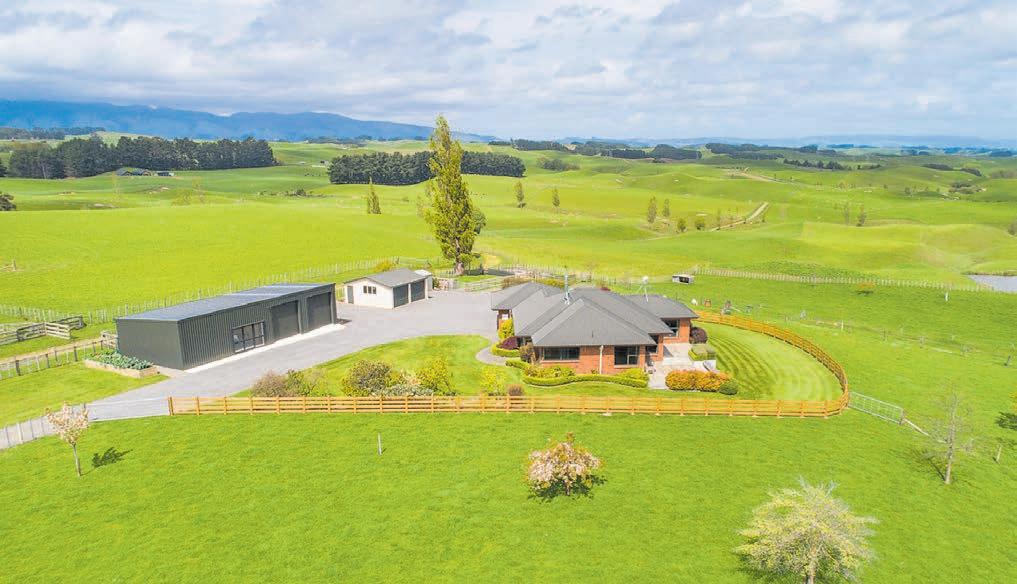



If
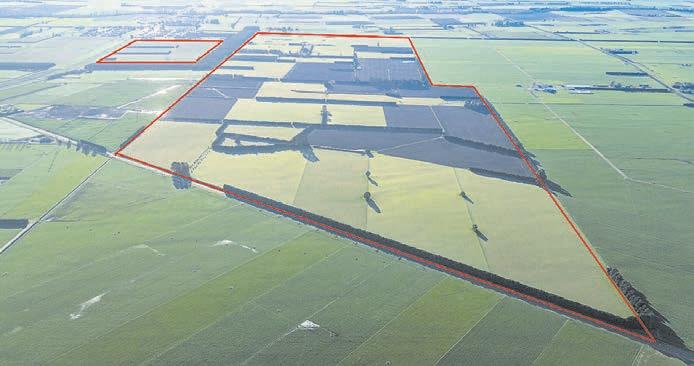



Greg Jopson M 027 447 4382 E gregj@pb.co.nz
Michael Richardson M 027 228 7027 E michael@pb.co.nz






Production......Great Location
An exceptional opportunity to secure a high-performing 313ha (774 acre) dairy farm in four titles, nestled in a sheltered valley in the heart of Marlborough’s dairying region.
‘Dalton Downs’ boasts a strong production history, with 296,000kg MS recorded in 2020 from 662 cows and 278,591kg MS from 600 cows this season. The farm averages 284,000kg MS annually, supported by a 242ha milking platform plus 188ha of irrigation.
The mostly flat to gently sloping land is well-serviced by an extensive track network. Infrastructure includes a 44-bail ASHB shed with recent upgrades, four quality sheds, a 30T silo, and a
compliant effluent system. Accommodation features a modern 286sqm five-bedroom, two-bathroom homestead with double garage, plus two staff cottages.
‘Dalton Downs’ offers a rare blend of scale, profitability, and lifestyle in a stunning rural setting, just minutes from the Marlborough Sounds and bathed in New Zealand’s most sunshine hours.
Whether you're diversifying your portfolio or seeking a proven performer, now is the time to harness the strength and stability of the dairy industry.
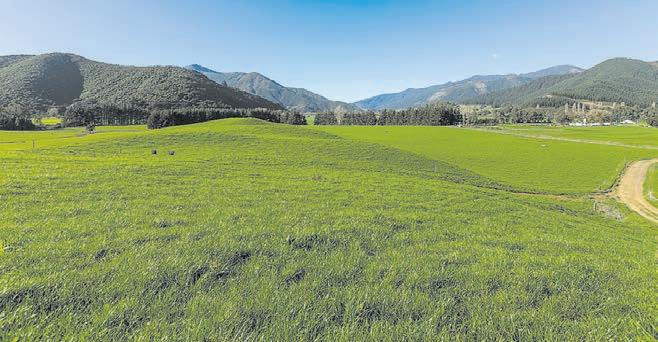
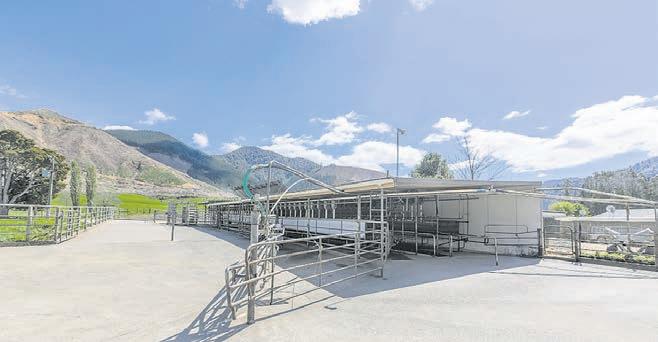
DEADLINE PRIVATE TREATY Plus GST (if any) (Unless Sold Prior) Closes 1.00pm Thursday, 17 July 20 Westwood Ave, Blenheim VIEW By Appointment Only
Greg Lyons
M 027 579 1233
E greg.lyons@pggwrightson.co.nz
Joe Blakiston
M 027 434 4069
E jblakiston@pggwrightson.co.nz



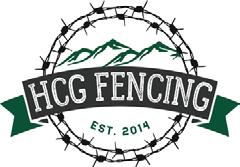
SALE TALK
What’s the difference between.....
... a fish and a bicycle?
They can both swim, except for the bicycle.
... a photocopier and the flu?
One makes facsimiles; the other makes sick families.
... a fisherman and a lazy schoolboy?
One baits his hook, while the other hates his book.
... Democracy and Feudalism?
With Feudalism, it’s your count that votes!
... a man and childbirth?
One can be terribly painful and sometimes almost unbearable while the other is just having a baby.
... a jeweller and a sea captain?
One sees the watches and the other watches the seas
... Dubai and Abu Dhabi?
People in Dubai don’t like the Flintstones but people in Abu Dhabi doooo.
... an Italian barber and an angry circus ringmaster?
Ones a shaving Roman and the others a raving showman


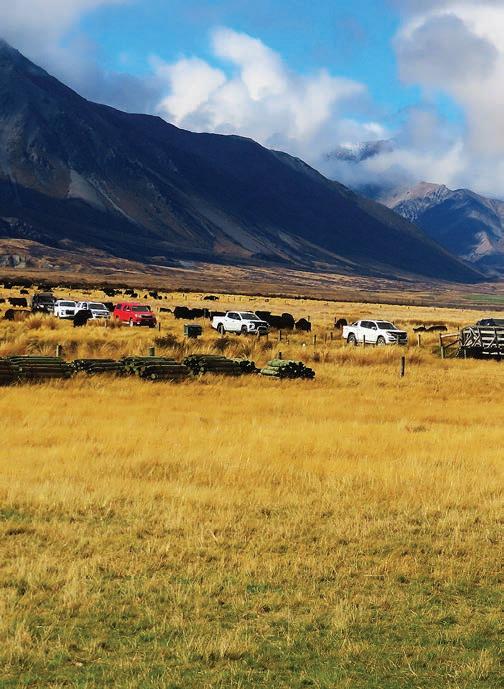

RAMS FOR SALE
WILTSHIRES-ARVIDSON.
Self shearing sheep. No1 for Facial Eczema. David 027 2771 556.
STOCK FEED
HAYLAGE $85, baleage $95, lucerne baleage $115. Unit loads available. Manawatu area. Phone 021 455 787. TREES FOR FARMS
ADDITIONAL INCOME. Stock shelter, erosion control, Truffle income, animal fodder, fireproof cork and Natives. 021garden.co.nz Litherland Truffles 021 327 637. WANTED TO BUY


service.
up. My on
prices will not be
Phone David Hutchings 07 895 8845 or 0274 519 249. Feral goats mustered on a 50/50 share basis. GOATS WANTED FERAL GOATS WANTED. Pick-up within 24 hours. Prices based on works schedule. Phone Vicky Le Feuvre 07 893 8916 or 027 363 2932.
LIVESTOCK FOR SALE
RED DEVON BULLS. Quality. Well grown. Waimouri Stud Feilding. Phone 027 224 3838.
WE ARE HAPPY TO TRADE in your old machine sitting in your barn going rusty on any purchase of our brand new excavator buckets (be it tilt, grabs, rippers, QH, cleaning or weed buckets etc) Pins set up customarily to ensure suit. Or even chainsaws if you like. Email admin@loaderparts. co.nz or phone Colin 027 442 6936.
SAWN SHED TIMBER including Black Maire. Matai, Totara and Rimu etc. Also buying salvaged native logs. Phone Richard Uren. NZ Native Timber Supplies. Phone 027 688 2954. Advertise
Call 0800 85 25 80
wordads@agrihq.co.nz




Proudly sponsored by
Golden run continues for beef
Beef prices are pushing well above forecast levels for this time of the season, thanks to strong export demand and a squeeze on supplies across the country.

Mel Croad MARKETS
SOARING lamb prices continue to steal the limelight, but things haven’t been too bad on the beef front either.
In recent weeks, farmgate beef prices have upped the ante, pushing well above forecast levels for this time of the season. Much of this has been as a direct result of strong export demand and tumbling supplies across the country.
Meat processors can almost set their clock by the arrival of the cull cows into processing plants every autumn, but this year things didn’t go to plan. Dry conditions prompted a higher offload of cows through March, but it couldn’t be sustained.
April was peppered with public holidays, which artificially dropped throughput.
It was widely expected that those shortfalls would be recovered in May, which is generally considered the peak slaughter month. But the cull cows failed
to show any strength in numbers, and there was little support from bull or prime cattle either. Strong store prices and a growing trend to trade cows through the winter months also stifled supplies.
Usually in the six weeks to midJune, AgriHQ data shows North Island bull and prime prices lift by 20-25c/kg, and cow closer to 40c/kg. This year, the upside has ranged from 50-65c/kg. Current farmgate prices are over $2/kg stronger than this time last year and the five-year average.
And it doesn’t look like this will be the end of it with AgriHQ forecasting further pricing upside through to spring, albeit not as aggressive as last winter.
It was widely anticipated that manufacturing beef would lead the way this year in terms of pricing direction, having established a 30-35c/kg premium over prime through the first quarter. But in the last eight weeks, the pendulum has swung the other way. Export demand for prime has leap-frogged manufacturing beef with prime farmgate prices now outpacing bull.
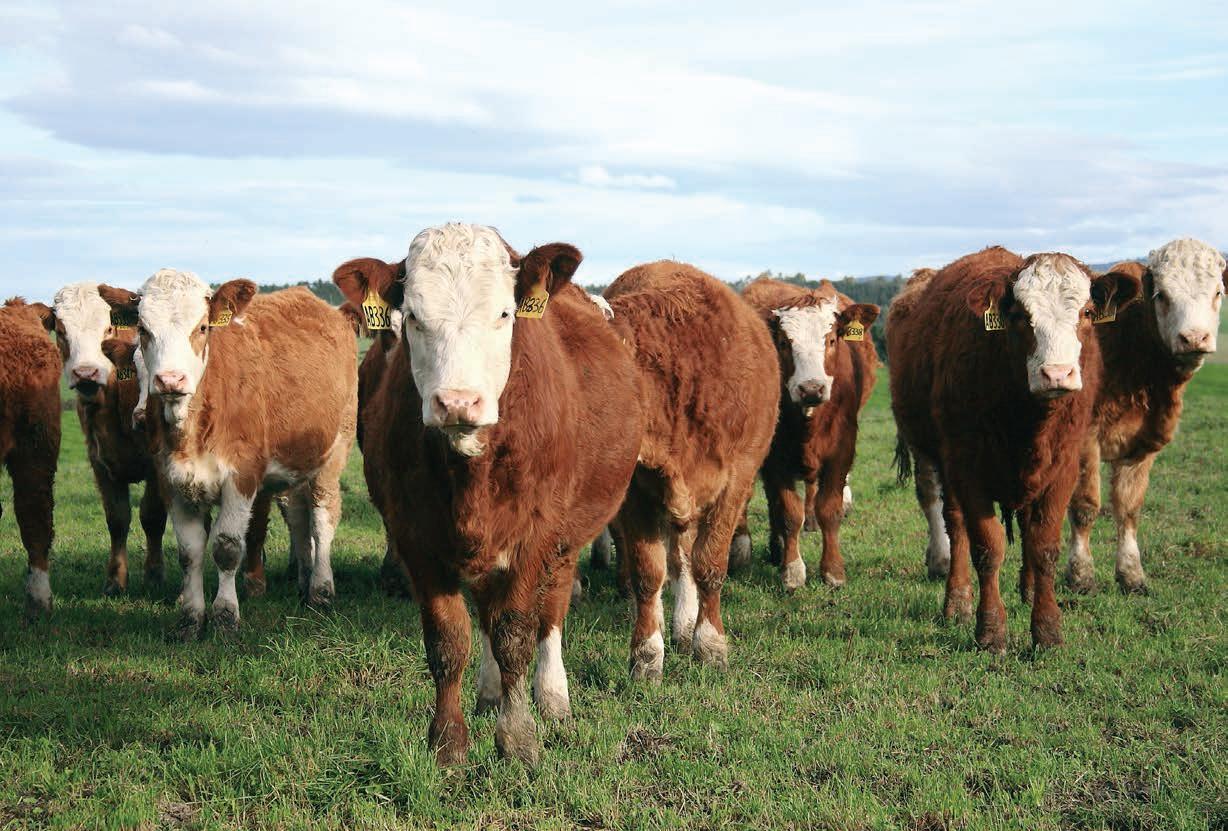
Slaughter numbers might pick up compared to last winter, but they will struggle to completely claw back the current deficit.
The United States imported beef market started the year in a very strong position, but weakened as talks of tariffs gathered momentum.
Since their introduction, US imported beef prices have barely moved in value.
It also hasn’t helped that import volumes of beef from countries other than New Zealand have skyrocketed as suppliers looked to capitalise on the strong market conditions. This has been led by Brazil and Australia.
While the US is battling sharply
lower domestic beef production rates, there is still a mountain of imported beef to work through to kick-start any upside.
But it’s not all doom and gloom.
At over US$3.10/lb, current imported 95CL beef prices have never been higher at this point of the year. The supply situation in the US is going to tighten further in the short to medium term, indicating there is still upside potential in this market.
As for export returns for prime beef, they continue to benefit from strong demand within key markets where prime beef supplies are contracting at a rapid pace. This demand has been widespread, from the highly prized European Union market to the US. Even the United Kingdom has put up a competitive hand.
Despite a drop in total New Zealand beef export volumes this
season, chilled export volumes have increased.
Consumer demand for these higher-priced cuts is robust and driving this upside.
This turnaround in demand for prime beef also stems from extremely tight supplies here. Season to date, the prime steer kill nationally is down 58,000 head on last season, underpinned by lower North Island kill rates. While slaughter numbers might pick up compared to last winter, they will struggle to completely claw back the current deficit.
Based on the current fundamentals, the export outlook for beef remains strong. From a farmgate perspective, AgriHQ expects prime prices will continue to lead the upside through to spring. The biggest problem now is having enough supplies to fully capitalise on it.
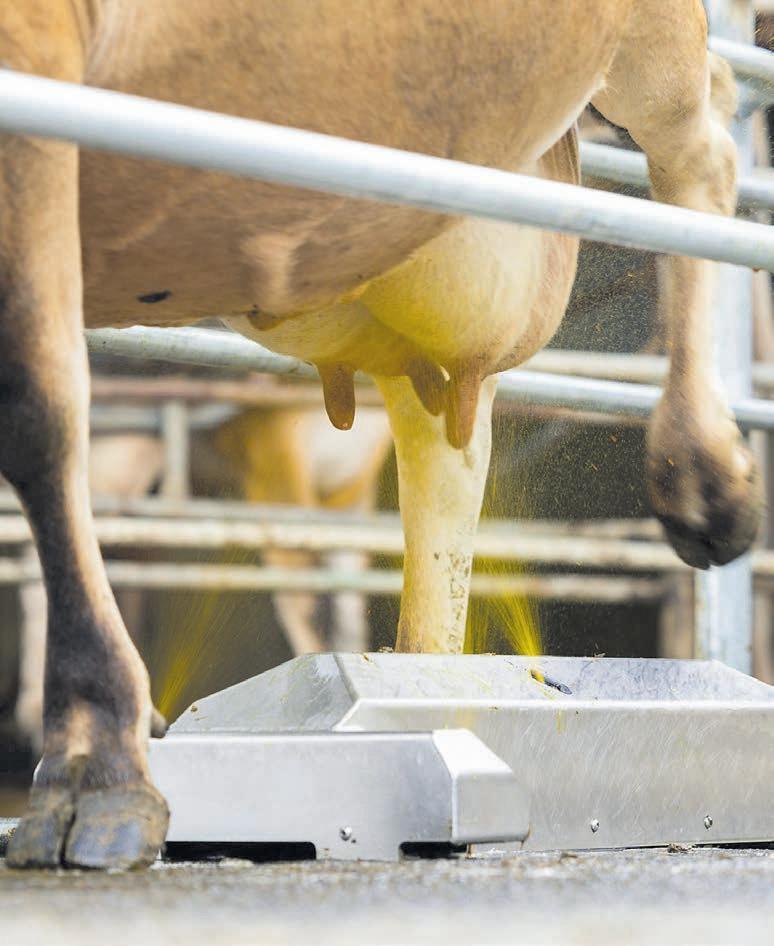
UPSIDE: AgriHQ expects prime prices will continue to lead the upside through to spring. The problem, however, is having enough supplies to fully capitalise on it.
Beef and lamb
Cattle Sheep Deer

Weekly saleyard results
These weekly saleyard results are collated by the AgriHQ LivestockEye team. Cattle weights and prices are averages and sheep prices are ranges. For more detailed results and analysis subscribe to your selection of LivestockEye reports. Scan the QR code or visit www.agrihq.co.nz/livestock-reports
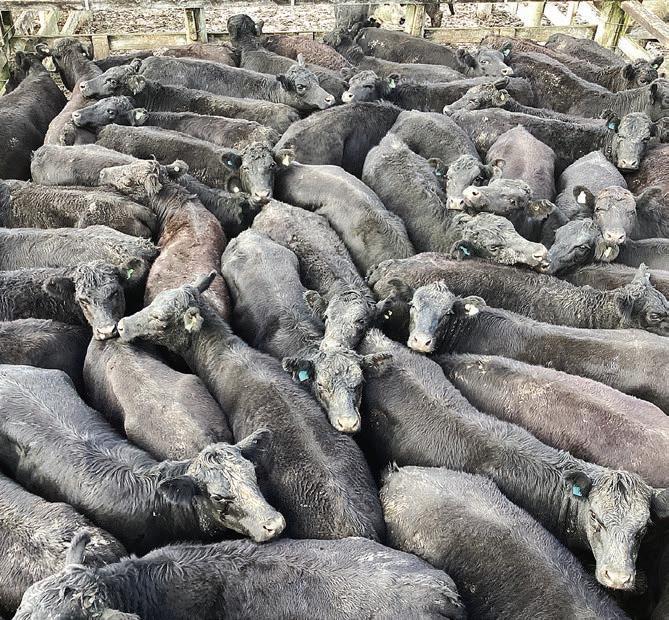
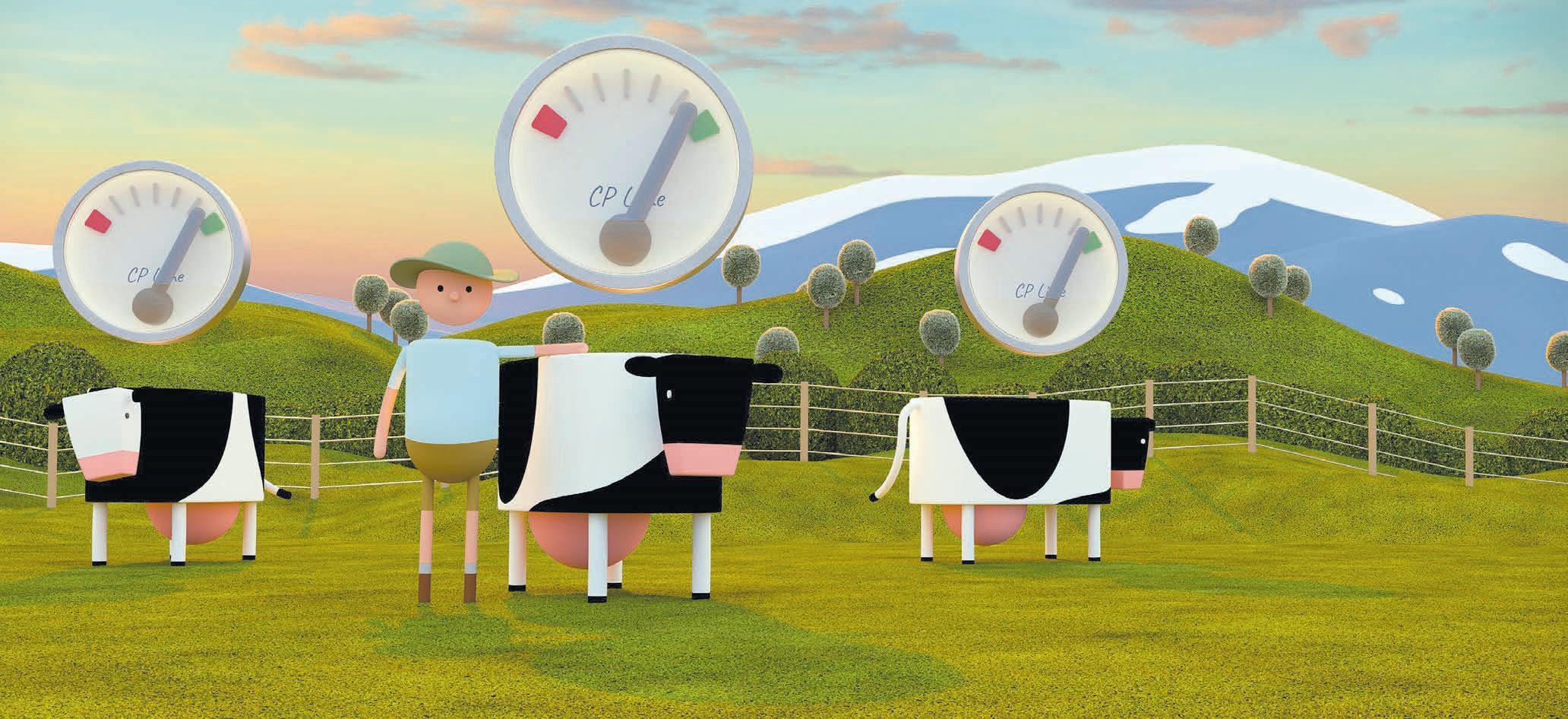
BIG TALLY: The biggest pen on offer at the Matawhero cattle sale was this line of R2 Angus heifers at 56 head. They sold as a complete line for $1560, $4.11/kg, following their sisters, who sold for the same
kilogram price.
Photos: bidr.co.nz
Rongotea | June 17 | 56 cattle, 83 sheep
R1 dairy-beef heifers, 165kg
Store Romney ewe lambs, all
Coalgate | June 12 | 229 cattle, 2379 sheep

R1 dairy-beef heifers, 200kg
5-year ewes, SIL, all
Store shorn cryptorchid lambs, all 148-190
Store woolly cryptorchid lambs, most 131-186
Store woolly ewe lambs, most 121-171
Feilding | June 16 | 239 cattle, 2483 sheep
Prime traditional cows, 545kg 3.49
Prime traditional heifers, 495kg
Boner Friesian cows, 530kg 3.15
Prime ewes, most
Prime cryptorchid lambs, most
Prime male lambs, most 181-252
Prime ewe lambs, most 171-183
Prime mixed-sex lambs, most 163-215
Canterbury Park | June 17 | 211 cattle, 2343 sheep
HIDING OUT THE
BACK: This nice line of autumn-born weaner CharolaisDairy steers sold at the end of a long day at Wellsford on Monday, June 16. They still sold exceptionally well, though, at $870, which put them just over $8/kg.

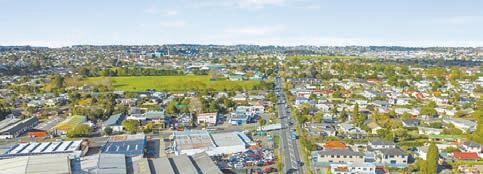



We’re halfway through the solar winter!

Philip Duncan NEWS Weather
DESPITE the usual changeable weather we get in winter there is, to some degree, a fair amount of order to our weather lately –which is, so far, minimising extremes as we slip into the coldest time of the year.
The shortest day was on Saturday, June 21, which means as you read this the days ARE getting longer now... even if only by a couple of seconds that you won’t notice.
The shortest day of the year also marks the halfway point of the “solar winter” – the 12 darkest weeks of the year with lowest amounts of daylight.
As I wrote about last week, we can never be really sure in New Zealand which month will bring us our coldest weather.
Sometimes southerlies in autumn can prove snowier and frostier than those of winter. This is because NZ’s weather is by default a temperate one.
When we don’t have tropical cyclones or polar blasts our weather is often “a mix of sun and cloud with the chance of a shower” (also my default answer to any super long range forecast you ask of me!).
When you look at the southern hemisphere, the weather in the tropics moves from east to west, known as the “trade winds” (because sailors during the
Age of Sail – from the mid 16th century to the mid 19th century – used these winds, which blow reliably in consistent directions, creating predictable paths for ships to follow and trade routes to form).
South of NZ we have the Roaring Forties, which blasts the Southern Ocean, South Island and lower North Island from the opposite direction – west to east.
The top half of the North Island lies in between these two air masses and is often controlled by large anticyclones bringing us the dry, calm, frosty stretches in winter.
So far this winter the high pressure belt exiting Australia is acting like a ceiling for the Roaring Forties’ windy westerlies, keeping much of the stormy stuff south of NZ.
Likewise these highs are also nudging into the tropics now – acting like an invisible brick wall to stop tropical rain makers from heading south to NZ.
That leaves NZ in the midst of “nothing much to see here” from an extreme point of view. There is order to the lows and highs moving through. The lower South Island and eastern sides of NZ are most exposed to polar air over the rest of June, with only brief warm-ups.
Northern NZ is more settled and more in that “no man’s land” between tropical and polar, as it so often is in winter.
Some severe weather is possible this week as a cold front moves in with strong

nor’westers followed by high pressure and frosts, mainly the South Island and lower
North Island – but for now June is looking reasonable, even if a bit colder in the





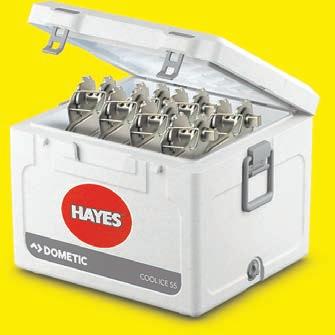










south.
TYPICAL: Rainfall shows a typical westerly flow in NZ, with West Coast rain and east coast dry. Image: WeatherWatch.co.nz
